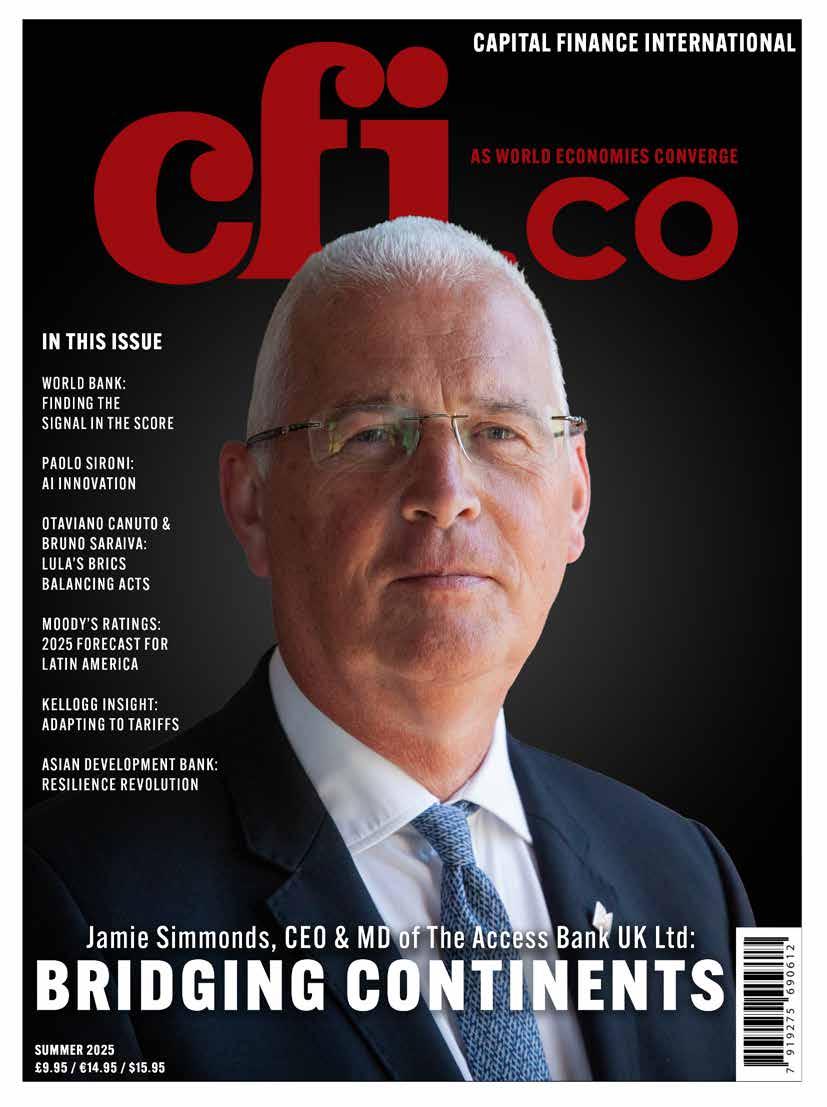

AUSTIN BUTLER WEARS




GranTurismo Trofeo fuel consumption in l/100 km: combined 10.1 – 10.0; CO2 emissions in g/km: combined 229 – 226; CO2 class: G














WATCHMAKING ONCE AGAIN FINDS BRITISH SHORES
The Limited Edition Bremont Longitude is a groundbreaking timepiece that not only looks back at our country’s legacy but also forward to an exciting future of British watchmaking. The watch’s case back incorporates brass from the original “Flamsteed Line,” in Greenwich, the very spot where the first Astronomer Royal made his celestial observations in pursuit of an aid to navigation.
It has long been the goal of Bremont to bring watch manufacturing back to Britain. The Longitude represents a milestone in that journey, a homecoming of sorts, and proof that, to get where you’re going, you need to know where you came from.

First Thoughts
The global shift toward remote work, catalysed by the pandemic, has evolved into one of the defining business debates of our time. What began as an emergency response has since become a long-term strategic question: should employees return to the office, continue working remotely, or adopt a hybrid approach?
The issue goes beyond logistics. At stake is a fundamental re-evaluation of productivity, culture, talent retention, and well-being.
The Case for Remote Work: Autonomy, Efficiency, and Reach
Advocates of remote work point to a host of benefits, ranging from employee satisfaction to operational efficiency.
Enhanced Well-being and Autonomy
Remote work has significantly improved worklife balance for many. The elimination of daily commutes frees up time, reduces stress, and facilitates better integration of personal and professional responsibilities. This sense of autonomy often results in higher job satisfaction and lower employee turnover. When employees are trusted to manage their schedules, engagement and loyalty tend to rise.
Productivity and Focus
Research suggests remote working can enhance productivity. While offices enable collaboration, they also introduce distractions. In contrast, home environments often allow for deeper concentration. Personalised workspaces, free from office interruptions, can support high-quality output.
Cost Efficiency
Remote work presents compelling financial advantages. Employees save on transport, meals, and professional attire. Employers reduce costs on office space, utilities, and facilities. These savings can be reinvested in technology, talent development, or innovation—improving long-term competitiveness.
Access to Global Talent
Geographic limitations fall away with remote work. Companies can access a wider, more diverse talent pool—particularly beneficial for niche or highly specialised roles. A broader talent base also fosters innovation by drawing on varied backgrounds and experiences.
Environmental Impact
With fewer people commuting, carbon emissions decline. Remote work therefore contributes to sustainability goals and aligns with the ESG commitments of forward-thinking organisations.
The Case for the Office:
Collaboration, Culture, and Development
Despite the rise of remote work, the physical office continues to play a vital role—particularly for collaboration, onboarding, and building a cohesive culture.
In-Person Collaboration Drives Innovation
Spontaneous conversations in hallways or impromptu brainstorming sessions are difficult to replicate virtually. Face-to-face interaction promotes creative problem-solving, deepens team cohesion, and builds trust—factors critical to innovation.
Cultural Immersion and Belonging Culture is cultivated through shared experiences. The office environment fosters a sense of belonging and camaraderie. For new employees, especially, in-person exposure helps them understand company values and integrate faster into the team.
Mentorship and Learning Opportunities
Younger professionals benefit significantly from being physically present. Observation, informal feedback, and proximity to experienced colleagues accelerate learning and development. Organic mentorship thrives in an office setting.
Work-Life Boundaries
Remote work, while flexible, often blurs the line between professional and personal life. The absence of physical separation can lead to longer hours and burnout. Offices restore that boundary, supporting healthier routines and allowing for true downtime.
Oversight and Operational Security
For some managers, visibility offers reassurance and enables real-time course correction. Certain roles—particularly those involving sensitive data or specialised equipment—require secure, officebased environments.
Towards a Hybrid Future: Integrating the Best of Both Worlds
The return-to-office debate need not be binary. For many organisations, a hybrid model offers the most effective path forward—balancing the flexibility of remote work with the cohesion of in-person collaboration.
Hybrid strategies may include mandated office days, flexible team-based schedules, or designated "anchor" days for key meetings and joint work. The approach should be tailored to company culture, industry specifics, and employee demographics.
Critically, leadership must remain open to feedback. Successful hybrid work depends on active listening, regular evaluation, and a willingness to adapt.
The Work Model of the Future
The pandemic triggered a dramatic rethinking of how, where, and when we work. Going forward, the goal is not to choose between remote and office work, but to integrate the strengths of both. A flexible, strategic approach—one that enhances productivity, respects employee well-being, and nurtures long-term growth—will define the most resilient and forward-looking organisations.


Correspondence
“ “
I refer to the profile of Ellen DeGeneres in your Spring issue. While the article accurately recounts her recent struggles and the public's shift in perception, I believe it's crucial to ensure that her undeniable contributions and positive impact are not totally overshadowed.
For decades, DeGeneres was a trailblazer. She normalised LGBTQ+ representation on television at a time when it was far from mainstream, courageously coming out and facing significant backlash, only to rise again as one of the most beloved talk show hosts in history. "The Ellen DeGeneres Show" was, for many years, a beacon of light, promoting kindness, generosity, and joy. She raised millions for charity.
It is undoubtedly important to acknowledge and address the criticisms that emerged regarding the workplace culture of her show. Accountability is vital, and lessons must be learned. However, in our haste to hold individuals accountable for their missteps, we risk erasing the entirety of their legacy.
Ellen DeGeneres brought smiles to millions daily. She inspired acts of kindness, and through her visibility, she undoubtedly helped to foster greater acceptance and understanding in society. Let us not forget the immense good she put into the world. A nuanced perspective allows us to acknowledge imperfections while still appreciating the significant positive contributions that defined much of her career.
SALLY GEORGE (Cape Town, RSA)
I am writing to commend your publication for drawing parallels between the shocking Lucy Letby case and the egregious Post Office scandal. It is vital that we recognise the deeply troubling common threads in these seemingly disparate events, where institutional failures, a rush to judgment, and a disregard for dissenting voices led to profound injustices.
In both instances, complex information was simplified, expert opinions were seemingly downplayed or ignored, and a narrative was pursued with relentless focus, rather than a truly open-minded investigation. The human cost of these failures is immeasurable, leaving lives shattered and public trust eroded.
To prevent such travesties from recurring, we must advocate for several crucial changes:
Firstly, foster a culture of genuine inquiry, not just advocacy. In any investigation, there must be an unwavering commitment to exploring all plausible explanations, including those that challenge prevailing theories. This means actively seeking out and respecting expert opinions, even when they contradict the initial assumptions.
Secondly, demand robust and transparent data analysis. Whether it's medical statistics or IT system outputs, the data presented must be scrutinised by independent experts, with methodologies and raw information made fully transparent. Hasty conclusions drawn from incomplete or misunderstood data are fertile ground for error.
Thirdly, empower whistleblowers and protect dissenting voices. Too often, those who raise concerns from within are silenced, marginalised, or even punished. We need clear, accessible, and protected channels for individuals to report anomalies or express doubts without fear of retribution.
Finally, cultivate humility within institutions. Acknowledging the possibility of error, being open to re-evaluating decisions, and resisting the urge to defend an initial stance at all costs are essential for justice to prevail.
ELLEN MORGAN (Windsor, UK)
I'm writing to express my amusement regarding the illustration accompanying your recent article on the Doomsday Clock. While the piece correctly notes the clock is now set to a chilling 89 seconds to midnight, the accompanying graphic still proudly displays a leisurely three minutes.
One has to wonder if your layout department is hoping to save us


all some time by fast-forwarding the apocalypse. Perhaps they're just optimists, or maybe they simply appreciate the aesthetic symmetry of the longer hand. Either way, it gave me a much-needed chuckle amidst the existential dread.
JAMIE WINTER (Chicago, IL, USA)
I was deeply moved to read the obituary for Marianne Faithfull in your Spring 2025 issue. While her later career was marked by incredible resilience and artistic depth, it was her early impact that truly resonated with me, bringing back vivid memories of a fleeting but unforgettable encounter in the 1960s.
“
I recall a gathering in some smoky London flat – where the air buzzed with the newness of the decade. And then she walked in. Even amidst the vibrant personalities of that era, Marianne Faithfull was utterly captivating. She possessed an ethereal beauty, yes, but it was more than just looks; there was a quiet intensity, a knowing glance, and an effortless charm that truly bowled one over. She spoke with a soft, melodic voice that belied the strength that would later define her. In those brief moments, one felt an immediate connection to something genuinely special, a budding star whose magnetism was palpable. Her obituary rightly traced her journey through triumphs and tribulations, but it was that initial, dazzling aura of the young Marianne Faithfull that your piece brought back so vividly. It's a testament to her enduring presence that even a brief interaction from so long ago can still evoke such a powerful sense of wonder. She truly was a unique force, and her passing marks the end of a remarkable chapter in cultural history.
DIANA WARD (Orpington, Kent, UK)
I am writing to commend the remarkable resilience and progress demonstrated by Sri Lanka in its journey toward economic recovery. After navigating an unprecedented crisis, the nation has shown impressive determination in implementing crucial reforms, stabilising its economy, and setting a course for sustainable growth.
“
The recent improvements in macroeconomic indicators –including the easing of inflation, the strengthening of the Sri Lankan Rupee, and the successful navigation of the IMF programme – signal a renewed stability that should not be overlooked by the international investment community. This hard-won stability, coupled with ongoing structural reforms aimed at improving governance and the ease of doing business, presents a compelling window of opportunity for forwardthinking investors.
Sri Lanka's strategic geographical location, at the crossroads of major shipping lanes, positions it as a vital maritime and logistics hub. Beyond this inherent advantage, several sectors are ripe for investment:
• Tourism: With its stunning natural beauty and rich cultural heritage, the tourism sector is poised for a significant rebound, offering lucrative prospects for hospitality development and related services.
• Information Technology & BPO: A skilled and English-speaking workforce, combined with lower operating costs, makes Sri Lanka an attractive destination for IT services and Business Process Outsourcing.
• Renewable Energy: The country's abundant solar and wind resources align perfectly with global sustainability goals and offer significant potential for green energy projects.
• Manufacturing & Export: Efforts to diversify the export base and create a more investor-friendly environment are opening doors in various manufacturing industries.
• Infrastructure Development: Ongoing projects and future plans in ports, logistics, and digital infrastructure offer long-term investment avenues. Now is the time for investors to look beyond past challenges and recognize the significant upside potential in Sri Lanka. The government's commitment to creating a conducive investment climate, coupled with the inherent strengths of the nation, makes this a unique moment to engage and contribute to, and benefit from, Sri Lanka's promising resurgence.
JUNE ROE (Sacramento, California, US)
Editorial Team
IBM Thought Leadership
Sarah Worthington
Transparency Makes the
George Kingsley
Tony Lennox
Brendan Filipovski
John Marinus
Ellen Langford
Helen Lynn Stone
Naomi Snelling
Columnists
Otaviano Canuto
Lord Waverley
Production Director
Jackie Chapman
Distribution Manager
William Adam
Subscriptions
Maggie Arts
Commercial Director
John Mann
Director, Operations
Marten Mark
Publisher Anthony Michael
Capital Finance International
Meridien House
69 - 71 Clarendon Road
Watford WD17 1DS
United Kingdom
T: +44 203 137 3679
F: +44 203 137 5872
E: info@cfi.co
W: www.cfi.co
STORIES
Invisible
Hand Visible Again, And Inclusive
Paolo Sironi


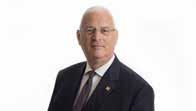


Otaviano Canuto & Bruno Saraiva
World
Paolo
Bruno
Bank
Jamie
XMTrading
Kim
Arup
World Bank — Finding the Signal in
the Score:
How The World Bank Group is Aligning Its Scorecard and Impact Evaluations
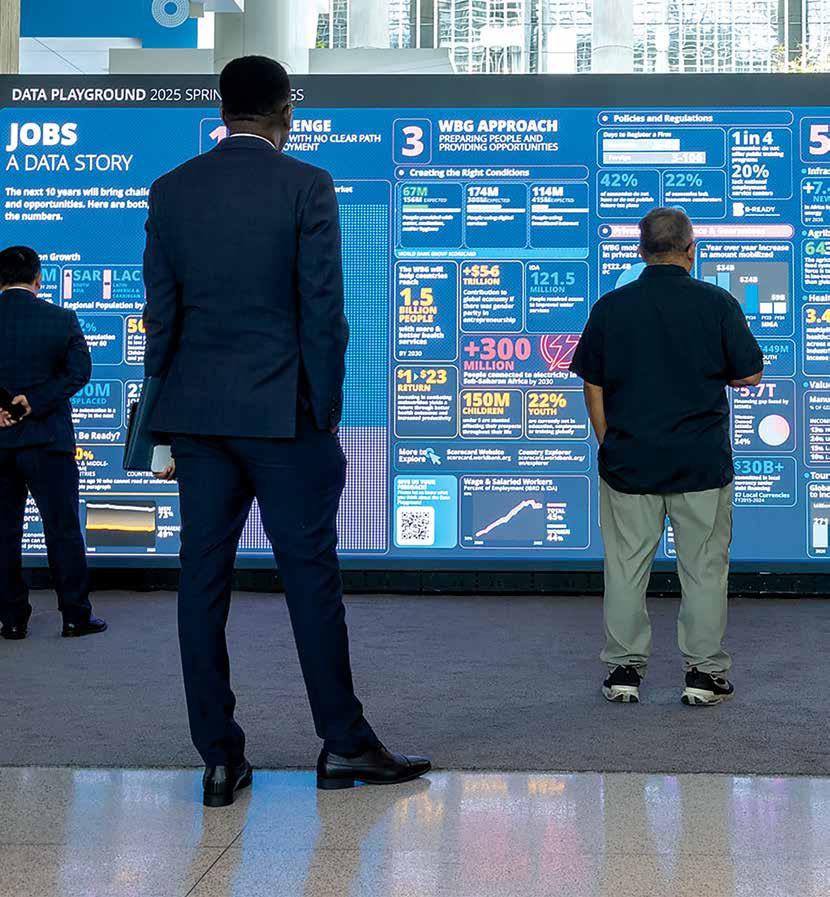
or years, the World Bank Group’s systems for measuring results operated in parallel tracks: corporate Scorecards that monitored performance through outcome-level targets, and impact evaluations that investigated what works, for whom, and why. Both were powerful in their own right—but too often disconnected.
That is beginning to change.
Today’s context of tighter budgets, more complex challenges, and a renewed call for transformational impact has driven us to rethink how we work, how we measure success, and how we show up for our clients and each other.
We aim to be faster, simplify, operate more efficiently, and deliver greater impact. Part of this effort is to align our Scorecard and Impact Evaluation tools—by design. We are now building

By
stronger, deliberate links between the Scorecard and the growing portfolio of impact evaluations to sharpen our understanding of how to deliver meaningful outcomes at scale.
COMBINING THE WHAT AND THE WHY
The Scorecard anchors the institution’s ambition around outcome-level targets that cut across climate, jobs, gender, and inclusion. It tells us what we are achieving and where we stand.
Arianna Legovini & Lisandro Martin World Bank Group

"We aim to be faster, simplify, operate more efficiently, and deliver greater impact."
But it cannot tell us why progress is (or isn’t) happening.
That’s where impact evaluations come in. They provide the causal insight needed to explain which interventions are moving the needle— and under what conditions. They strengthen the results chain by connecting outcomes to drivers and supporting timely course correction.
Together, these systems do more than track change—they explain it. They allow us to find the signal behind the score.
INTEGRATING AGILITY AND DEPTH
Historically, Scorecards were built for speed— regular updates, short-term accountability— while impact evaluations were seen as slowmoving, academic exercises. But that divide is now narrowing.
Today’s evaluations are more agile than ever. Rapid randomised trials, adaptive designs, and embedded A/B testing can be built into project design without delaying delivery. When grounded in strong theories of change and supported by quality data systems, they can deliver early findings that inform real-time decisions.
This approach requires more than good design— it demands the operational infrastructure to act on learning. That’s why our adaptive trials embed implementation support teams directly in the field. These teams translate evidence into action through digital and AI platforms, rapid feedback cycles, and close collaboration with government partners.
The key is to start early, stay lean, and stay useful. Done right, impact evaluations are not a post-mortem—they’re a driver of accelerated learning.
FROM OPPORTUNITIES TO SYSTEMS
If the Scorecard acts as our institutional compass, then impact evaluations must shine a light on every pathway it charts. To do this, evaluations must be better aligned with the full spectrum of corporate outcomes—from emissions reduction to resilience building and quality job creation.
This shift—from scattered opportunity to strategic system—requires intentional planning, cross-sectoral collaboration, and sustained investment in learning.
FROM PROVING TO IMPROVING
We often speak of a “results culture,” but too often that culture stops at counting. A mature results culture must also value causality, curiosity, and course correction—hallmarks of a science-based adaptive learning approach that
tests, learns, and evolves continuously within the lifecycle of a project.
When evaluations are embedded into project lifecycles and explicitly linked to institutional targets, they move us from proving success to improving it. They allow us to tell compelling, evidence-informed stories—and more importantly, help us invest in what actually works.
This is especially critical for outcomes that unfold over time. Entrepreneurship programs may show promising outputs like increased business registrations, but only evaluation reveals which interventions—such as pairing capital with mentorship—actually generate sustainable jobs.
Similarly, skills training programs may report high certification rates, but evaluation identifies the models that truly deliver increased earnings, employment, and inclusion—especially for women and youth.
STEERING TODAY’S DELIVERY, SHAPING TOMORROW’S IMPACT
The lesson is clear: scorecards tell us whether we’re moving. Impact evaluations tell us whether we’re moving in the right direction— and why.
Take, for instance, projects that embed randomised trials into early phases of delivery— testing variations in training formats, incentive structures, or targeting mechanisms. By generating early insights and iterating in real time, these projects can adapt toward models that maximise results before full rollout. This isn’t just learning—it’s steering through experimentation.
This convergence is particularly relevant for the jobs agenda, where both speed and effectiveness are vital. By integrating performance tracking and rigorous evaluation, institutions can coursecorrect in real time and still stay focused on long-term results.
At the World Bank Group, we are no longer treating impact evaluations and the Scorecard as separate tools. We are aligning them— intentionally and strategically—to ensure that results are not just visible, but meaningful.
That is how we find the signal in the score— and how we build a science-based adaptive delivery system that delivers better outcomes, faster – central to our work to make the World Bank Group fit for purpose to address today’s development challenges with lasting, measurable impact. i
Paolo is the global research leader in Banking and Financial Markets at IBM, Institute of Business Value. IBV is thought leadership centre of IBM.
> Ask Paolo Sironi: Which Bank Will Lead the Pack with AI Innovation?
In the whirlwind of global headlines dominated by AI titans clashing over groundbreaking advances in Large Language Models (LLMs)—a relentless race to dominate in reasoning, versatility, and reliability—one truth stands out. The banks spearheading the AI revolution aren't necessarily those rushing to embrace the flashiest new models. Instead, they are the ones fundamentally reshaping their risk management mindset, embedding it deeply into platforms and architectures that deliver robust tools for validation, risk control, and strategic oversight. And this applies to any company, whatever the industry they are in.
This insight emerges from the latest research by the IBM Institute for Business Value, titled "Banking in the AI era: The risk management of AI and with AI." Drawing on a survey of 100 risk, compliance, and validation (RCV) officers from major markets worldwide, the study delves into the core hurdle of scaling AI across enterprises: effectively managing the risks posed by AI while leveraging its capabilities to enhance risk management itself. With this insight in hand, we can start thinking about how risk management uses AI to drive transformation.AI's transformative potential in risk and compliance is significant.
Banking executives pinpoint fraud detection and cybersecurity as top areas where AI can deliver high business value, with 61% and 52% respectively viewing them as key opportunities (see figure 1). Yet, the report reveals a cautious stance, with lower prioritisation (16%) for areas like credit risk modeling, where real market differentiation can be generated to compete through more digitalised and personalised client engagement. The biggest hurdles? The application of AI to Know Your Customer (KYC) and Anti-Money Laundering (AML) processes, deemed the most complex by 43% of respondents. These areas involve non-standardised data, manual reviews, and escalating regulatory demands, making them resource-intensive and prone to inconsistencies. Enter agentic AI—a breakthrough featuring autonomous agents that orchestrate tasks like data collection, verification, and regulatory interpretation. The agentic AI approach can slash processing times from weeks to near-realtime, boosting efficiency, transparency, and trust. For instance, specialised agents work in parallel to authenticate documents and assess risks, minimising human error and disputes.
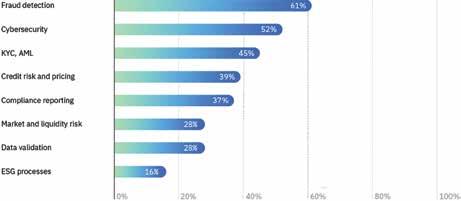
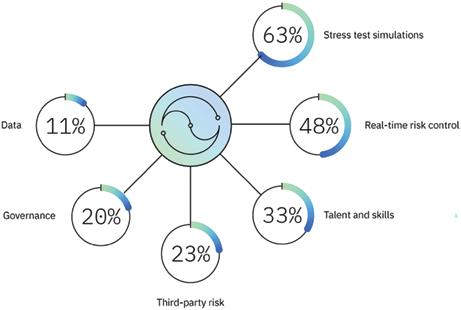
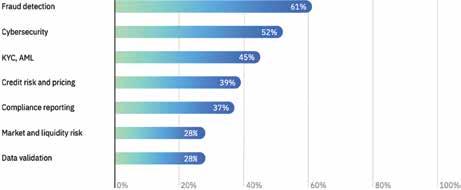
Figure
Figure
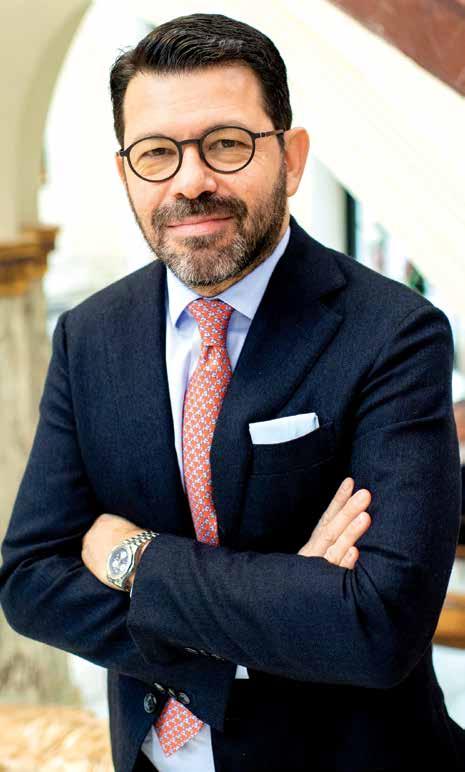
However, while AI enhances risk management practices, true innovation demands robust risk management of AI itself. The report highlights a clear gap: the need to strengthen validation capabilities to ensure models are accurate, ethical, and compliant—as identified by over 60% of respondents, who also stress the importance of investing in stress test simulations to accelerate the validation of new use cases in a timely yet thoughtful manner (see figure 2).
Additionally, 46% of RCV officers point to a significant shortfall in the capability to control risks in AI use cases, with only 25% reporting that their highest-risk scenarios are managed through real-time risk control capabilities. Greater investments are essential, alongside upskilling the workforce to foster a cohesive enterprise-wide approach—transforming every banker into an "AI risk manager" via targeted training in AI usage and ongoing learning mechanisms.
While RCVs get ready to be enablers of AI transformation by risk managing AI, they also look at AI to reshape the way they run their business thus risk manage with AI. Here the research funding are as illuminating as they are provocative: 61% of respondents zero in on fraud risk detection as the area where they could harvest the most significant boost to business value within their functions (see Figure 3). This is hardly surprising. In an era where fraudsters are as sophisticated as they are relentless, the ability to detect and prevent illicit activity in real time is nothing short of mission-critical. Close behind, 52% of respondents highlight cybersecurity, another domain where the margin for error is razor thin. Rounding out the top three, 45% of these executives point to KYC and AML processes. These areas have long been the Achilles’ heel of operation cost structures, bogged down by manual checks, outdated systems, and an ever-growing burden of regulatory requirements. But here’s where the narrative takes an intriguing twist. Despite the clear focus for using AI in these cost-intensive areas, fewer than 40% of respondents see more business-oriented processes as a major source of value. Specifically, only 39% highlight credit risk management and pricing, and a mere 28% focus on market and liquidity risk management where banks already started applying machine learning. This muted response suggests that while AI is poised to reshape certain aspects of RCV activities, traditional quantitative methods still hold the reins in others. When it comes to the core of banking risk calculus, the industry seems to be more cautious on betting the farm on AI; this might be also due to more stringent regualtory oversight about their financial modelling. Nevertheless, it is the application of machine learning to operational data, such as cash flows, that enables banks to better address lending growth on digital channels and exoand services in key client segments including small and medium enterprises.
All things consider, if you ask me which bank will lead the pack in the competitive landscape of AI transformation, the study is clear: it will be the one with the most advanced risk management of AI, embedded into a governance-enabled IT platform that facilitates a virtuous cycle of managing technology risks and unlocking business opportunities. i
Readthefullreport:
ibm.com/thought-leadership/institute-businessvalue/en-us/report/banking-in-ai-era
ABOUT THE AUTHOR
Paolo Sironi is the global research leader in banking at IBM, the Institute for Business Value, and he is author of business literature. His latest Banks and Fintech on Platform Economies has been Amazon bestseller in banking books worldwide.
Author: Paolo Sironi
Otaviano Canuto & Bruno Saraiva: Lula’s BRICS Balancing Acts in Rio
The BRICS+ group of countries met in Rio de Janeiro over the weekend of 6-7 July. The original group – Brazil, Russia, India, China and, soon after, South Africa – emerged as the materialisation of a work of fiction. Jim O’Neill, then chief economist at Goldman Sachs, produced a report in 2001 drawing attention to the rise of these countries as emerging regional powers in global economic growth.
A few years later, during the global financial crisis of 2008-2009, these countries decided to join in a common front to defend reform points in multilateral financial institutions, particularly Bretton Woods Institutions (namely, the International Monetary Fund and the World Bank). They called for increases in their voices and in shareholding and quotas, in line with the changes in the structure of global GDP that had occurred since the creation of those institutions. However, the experiences with the quota review of the International Monetary Fund (IMF) in 2010 and with the World Bank's capital increases in 2010 and 2018 made it clear that there would be limits to increasing their relative shareholding.
In the first half of the decade, the BRICS countries decided to create two institutions of their own that became part of the network of multilateral/ regional development banks and the global financial protection network, respectively: the BRICS Bank or New Development Bank (NDB) and the Contingent Reserve Arrangement (CRA). It is worth noting that these new institutions were created more as a complement than as substitutes or competitors to existing ones. The evolution has been more like one “from Bretton Woods to a bridled path”.
The now expanded membership of countries, (Egypt, Ethiopia, Indonesia, Iran, the United Arab Emirates joined the original 5 countries, while Saudi Arabia has been invited to become a member) represent about 40% of global GDP in purchasing power parity (PPP) terms and almost a quarter of global trade and investment flows. They comprise the most significant source of global economic growth in this century. Although most trade flows in BRICS countries are with countries outside the group, intra-BRICS trade has doubled since 2020, showing that there may be a potential for further increase in complementarities.
However, this coming of age of the BRICS takes place in a context different from the one of its inception. The first fifteen years of the century were marked by what seemed then as a virtuous circle between the US as a world consumer of last resort, China and other Asian countries as main
"President Lula and Brazil were obliged to exercise diplomatic skills to perform three balancing acts in Rio."
goods providers and consumers of raw materials, while many emerging markets and developing economies were providers of commodities.
This situation changed in the mid-2010s, with Russia being increasingly the target of G7 sanctions after the invasion of Crimea, the end of the commodities super-cycle, and China becoming the focus of escalating trade tensions with the US. Now, while the BRICS economies are already larger than the G7, measured in PPP terms, the group is in a much more complex and delicate relationship with the advanced economies.
It should not be forgotten that the group's agenda is, above all, economic and financial. After all, this is a group in which China and India inevitably have a rivalry, including territorially; the desire to counter the United States as a threat on the part of Russia and Iran – and, to some extent, China – is not shared by the others; there are disputes between Egypt and Ethiopia over the use of the Nile River, as well as disagreements between Middle Eastern members of the group. It is far from being a group with homogeneous views and geopolitical stances in relation to the G7 countries.
In this context, President Lula and Brazil were obliged to exercise diplomatic skills to perform three balancing acts in Rio.
First balancing act: reinforcing the leadership of the BRICS among emerging market and developing economies without antagonising the G7. With the increasing polarisation between US and China and the hostile relationship between Europe and Russia, the BRICS became a sensitive ground to coalesce developing economies. Moreover, from the standpoint of most members, deepening integration and cooperation among BRICS should proceed without contaminating other important economic relationships.
Second balancing act: expanding the BRICS membership without losing its identity and capacity to position itself in critical economic issues. While an expanded membership potentially brings more clout, the increased diversity of members may weaken the stance of the group in global economic issues where the interest and perspectives of members may have widened significantly with respect to the original group.
Third balancing act: fostering BRICS own institutions, namely the NDB and the CRA, without diverting from the effort to reform the Bretton Woods Institutions (BWIs).
With all those balls to juggle, President Lula tried to move ahead with a work plan. In this respect, on the year Brazil is hosting COP30, climate finance was a critical issue on the BRICS economic agenda and the subject of a specific declaration by the leaders.
There are other promising themes that still need to be developed to garner consensus within the group, such as initiatives to promote long-term investment. The discussions to establish a BRICS Multilateral Guarantees initiative, which will initially be hosted as a pilot in the NDB, has taken off, with a view to de-risk strategic investment and improve creditworthiness in BRICS countries, fostering private infrastructure and climate investment. Brazil also created a task force to continue a discussion on possible practical ways of enhancing BRICS countries’ reinsurance capacity, which is currently concentrated in advanced economies. Discussions on mechanisms to mitigate exchange rate risk have continued and the possibility of creating an infrastructure hub to share information on investment projects has been entertained.
Work has also continued to identify possible ways to improve the interoperability of payment systems, and facilitate fast, low-cost, more accessible, efficient, transparent, and safe cross-border payments among BRICS countries. Settlement of bilateral payment flows in local currencies has also been at the top of the BRICS agenda. It should be highlighted that the NDB has pursued efforts to use more local currencies, which now respond to almost a third of its finance projects, reducing its reliance on the US dollar. Furthermore, the CRA is at the last stage of a review of its main documents which will likely open space for the use of other eligible payment currencies.
In sum, Lula took the opportunity of Brazil’s BRICS presidency to send a strong message against protectionism and in favor a renewed multilateralism, trying to further BRICs-specific initiatives without burning the bridges with the advanced economies, which remain key historical partners of Brazil and other BRICS countries.
However, despite the exercise of BRICS balancing act, President Donald Trump threatened "extra 10% tariff over ‘anti-American’ BRICS policies". And, last week, he threatened to impose a 50% tariff on Brazil, making references to the legal
This article first appeared in the Policy Center for the New South

process against former President Jair Bolsonaro for a planned coup plot, as well as to measures taken by Brazil’s Supreme Court against U.S .social media platforms.
Presumably, from Trump’s perspective, pursuing lower reliance on the US dollar was enough to push Lula and the BRICS off their balancing act. i
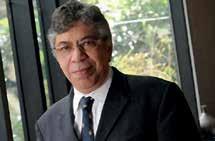
, based in Washington, D.C, is a former vice president and a former executive director at the World Bank, a former executive director at the International Monetary Fund, and a former vice president at the Inter-American Development Bank. He is also a former deputy minister for international affairs at Brazil’s Ministry of Finance and a former professor of economics at the University of São Paulo and the University of Campinas, Brazil. Currently, he is a senior fellow at the Policy Center for the New South, a professorial lecturer of international affairs at the Elliott School of International Affairs - George Washington University, a nonresident senior fellow at Brookings Institution, and a professor affiliate at UM6P, and principal at Center for Macroeconomics and Development.
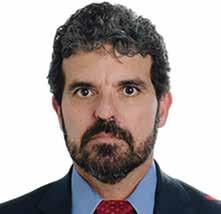
is a civil servant at the Central Bank of Brazil), having worked at the Ministry of Finance (2004-06), the World Bank (2006-07) and the Inter-American Development Bank (IDB) (2007-11). He was head of the Department of International Affairs at the Central Bank of Brazil (2011-16) and alternate executive director for Brazil at the International Monetary Fund (IMF) (2016-24). The opinions here expressed by Bruno Saraiva are personal and do not reflect the position of the Central Bank of Brazil or the
The US Economy Will Thrive In Spite of Trumponomics
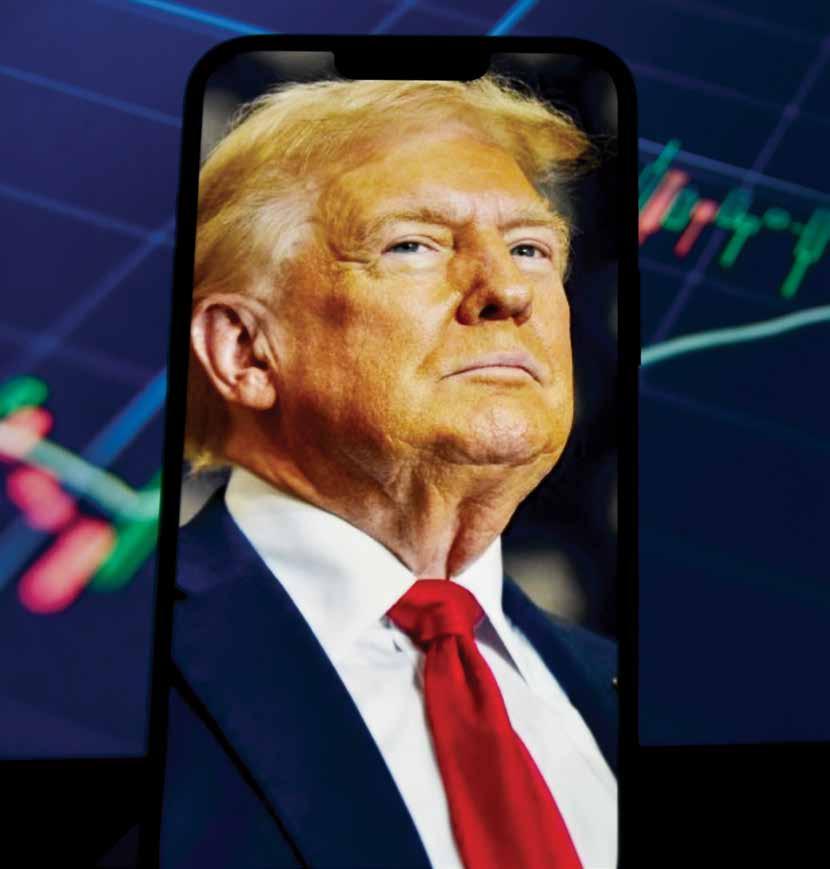

ince Donald Trump’s “Liberation Day” on April 2, when he announced sweeping trade tariffs on friend and foe alike, the conventional wisdom about the US economy’s short-term and medium- to long-term prospects has been pessimistic. Higher tariffs will cause a US and global recession; US exceptionalism is over; America’s fiscal and current-account deficits will become unsustainable; the US dollar’s status as the main global reserve currency will soon end; and the dollar will sharply weaken over time.
Certainly, some of the policies that Trump has announced warrant such pessimism. Tariffs, protectionism, and trade wars are likely to be stagflationary (causing higher inflation and lower growth), as are draconian restrictions on migration, mass deportations of undocumented workers, large unfunded fiscal deficits, and efforts to interfere with the US Federal Reserve’s independence. Equally, the US economy would not be well served by a Mar-a-Lago Accord to weaken the dollar, further damage to the rule of law at home and abroad, or tighter restrictions on
foreign talent – scientists and students – coming to the United States.
Nonetheless, I have maintained (since last winter) that the US economy will be fine – not because of Trump’s policies, but in spite of them. For starters, I expected a combination of market discipline, Trump’s more sensible advisers, and Fed independence to prevail, and that is what has happened. Trump has consistently chickened out and pursued trade deals, rather than following through with his Liberation Day tariffs. S
Nouriel Roubini:

Trump’s default may be “TALO” (Trump Always Lashes Out), but bond vigilantes and financial markets have pushed him into TACO (Trump Always Chickens Out) mode. As his most damaging economic policies take a milder form, the US economy will still endure some pain, but the likely end-of-year scenario is a growth recession (meaning below-potential growth), not an outright recession (typically defined as two consecutive quarters of negative growth).
Second, because the positive effects of technology will always trump the negative
effects of tariffs, the era of US economic exceptionalism is not over. The US is ahead of everyone – including China – in most of the revolutionary innovations that will define the future. Accordingly, its potential annual growth is likely to increase from 2% to 4% by the end of the decade, before rising much higher in the 2030s. Suppose that new technologies increase its potential growth by 200 basis points while trade and other bad policies reduce it by 50 bps; America would remain exceptional. It is America’s uniquely dynamic private sector, not
Trump’s policies, that will determine the future growth outlook.
Third, if potential growth does accelerate toward 4% over time, US public and external debts as a share of GDP will prove sustainable, stabilising and then falling over time (unless there is even greater fiscal recklessness). While the Congressional Budget Office projects a rising public debt-to-GDP ratio, that is because it assumes that US potential growth will peak at 1.8%.
Fourth, as long as American economic exceptionalism obtains, the “exorbitant privilege” conferred by the dollar’s global primacy is unlikely to erode. Despite higher tariffs, US external deficits will probably remain high, since investment as a share of GDP will rise on the back of a secular tech-driven boom, while the savings rate remains relatively stable. The resulting increase in the current-account deficit will be financed by equity inflows (both portfolio investment and foreign direct investment).
In this context, the dollar’s role as global reserve currency is unlikely to be significantly challenged, even if there is some modest diversification out of dollar-denominated assets. Likewise, these structural inflows will limit downside exchangerate risks, and they could even strengthen the dollar over the medium term.
In short, the US is likely to do well over the rest of this decade, not thanks to Trump but in spite of him. There is no question that many of his policies are potentially stagflationary. But the US happens to be at the center of some of the most important technological innovations in human history. These will deliver a large positive aggregate supply shock that will increase growth and reduce inflation over time. This effect should be an order of magnitude larger than the damage that stagflationary policies can induce.
Of course, one should not be complacent about damaging policies; their negative impact could be serious. But as long as markets and bond vigilantes do their job, Trump’s worst impulses will be constrained. i
ABOUT THE AUTHOR
Nouriel Roubini, Professor Emeritus of Economics at New York University’s Stern School of Business, is Chief Economist at Atlas Capital Team, CEO of Roubini Macro Associates, Co-Founder of TheBoomBust.com, and author of the forthcoming MegaThreats: Ten Dangerous Trends That Imperil Our Future, and How to Survive Them (Little, Brown and Company, October 2022). He is a former senior economist for international affairs in the White House’s Council of Economic Advisers during the Clinton Administration and has worked for the International Monetary Fund, the US Federal Reserve, and the World Bank. His website is NourielRoubini.com, and he is the host of NourielToday.com.
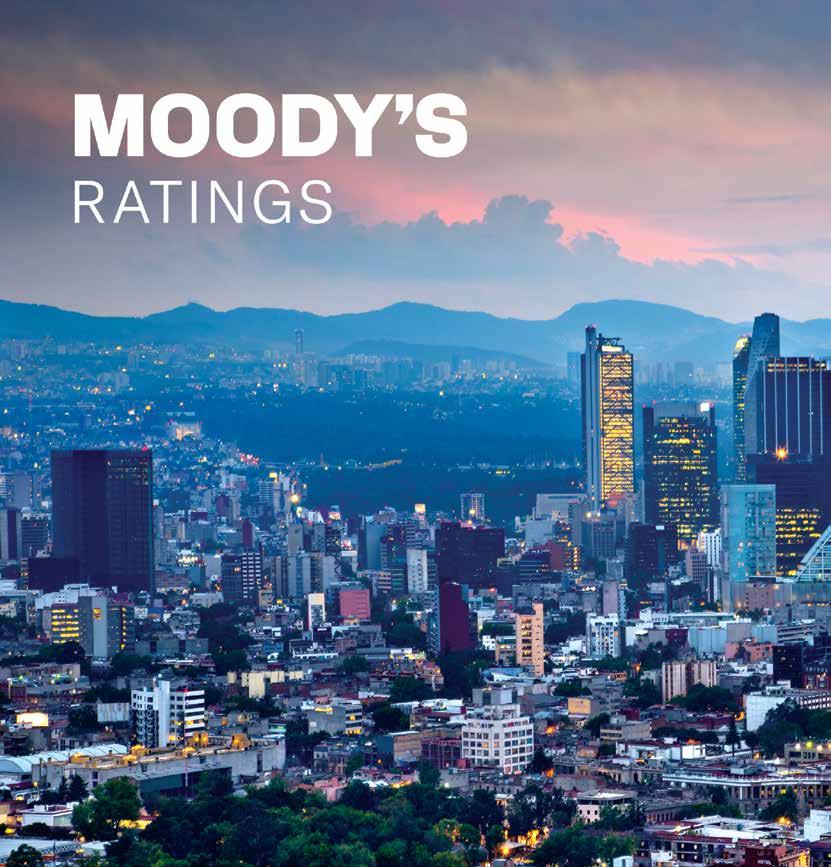
Stable Outlooks, Sustainable Finance Trends & Impact of US Policy Measures
ith nearly 30 years of experience in Latin America, Moody’s Ratings continues to evolve, reflecting a constant commitment to understanding customer needs and providing world-class service.
Moody’s Ratings is at the forefront of credit risk and sustainable finance analysis in Latin America, striving to help customers make more informed and strategic decisions. The region is essential to Moody's Ratings' global presence,
serving as a key component of its Emerging Markets strategy.
There are the three key dynamics Moody’s Ratings sees shaping Latin America’s economies and credit markets as the region faces a complex and evolving landscape in 2025: the credit outlook for sovereign and nonfinancial companies; the prospects for the sustainable finance industry; and the impact on the region of policy measures adopted by the United States.
By
STABLE OUTLOOK FOR SOVEREIGN & NONFINANCIAL COMPANIES
The region remains resilient thanks to adaptable economies, despite external challenges: Upside: Declining borrowing costs and governments' efforts to shore up fiscal health are delivering benefits.
Downside: Modest growth prospects and uncertainty related to shifts in US trade policy.
Nonfinancial companies must balance growth opportunities with inherent risks influencing
Moody’s Ratings

corporate credit quality worldwide:
• Finding macro normal, geopolitical tensions, global transitions, and digitalization and disruption.
• Adapting to these dynamics will be crucial to credit quality and sustainable growth.
SUSTAINABLE FINANCE TRENDS
Global sustainable bond issuance is expected to total $1 trillion in 2025, steady from 2024.
• Europe will lead it, as it has done since 2017, although issuance may once again be flat given
the maturity of the market.
• Asia-Pacific will remain an important driver of sustainable bond volumes.
• North America issuance will remain muted amid a retrenchment of environmental policies under a new US administration.
• Emerging market volumes, especially in Latin America and the Caribbean, should rise as COP30 in Brazil approaches.
The design and implementation of government policies to reduce greenhouse gas emissions will be a slow undertaking in Latin America.
National oil companies in the region face intensifying demands to reduce emissions, but weak legislation, limited finances, and the need to focus on energy security to replace imported fossil fuels pose significant challenges.
Data centers are expanding in areas with the most demand for cloud computing and 5G networks, including Brazil, Mexico, Chile, and Colombia. Upside: Low-cost, renewable power is widely available.
Downside: Economic volatility, policy uncertainties, water management risks and transmission bottlenecks threaten long-term returns on investment for new data center developments.
What we’re tracking: Challenges and opportunities for Chilean renewable energy; Mexico’s power sector and Brazil’s high interest rates.
Chile’s massive copper and lithium industries bode well for its long-term energy transition, but the short-term is less certain.
Snapshot: Mining companies will need to balance the need to expand production of future-facing commodities with the need to reduce carbon emissions from production processes with mandated decommissioning of carbon power plants. Network developments lagging the rapid expansion of renewables add further volatility to the power sector, increasing the risk of curtailment. Deployment of battery projects will play an important role in energy transition.
Mexico’s need substantial clean-energy investment to reach its ambitious energy transition goals. The new participation schemes offer private generators clear guidelines and options to grow, but the country’s weaking rule of law hurdles for investors.
Snapshot: New investment schemes will allow private companies to supply power, partnering with the state-owned utility CFE, or continue participating in the wholesale electricity market,
with substantial government oversight and control.
Brazil’s contractionary monetary policy will reduce banks' credit growth and margins.
Snapshot: Brazil's increasing interest rates, persistent inflation and further currency depreciation will strain corporate cash flow and reduce profitability in 2025, limiting the financial room for companies to meet their financial obligations.
UNITED STATES POLICY MEASURES
Latin America and the Caribbean are exposed to changes in the United States’ trade policies which drive both the resulting geopolitical dynamics between the United States and China, and financial market volatility.
Announced US tariffs would hit Mexico economy hardest given the amount of trade between the two countries. But goods that comply with the USMCA – about half of Mexico's exports, according to media reports – are not subject to tariffs.
Other countries in the region do not depend heavily on trade with the US for economic growth, but the US and China are the largest trading partners for many Latin American countries. While South America is less linked to the US than it once was, its trade and investment ties to China represent channels that indirectly expose them to policy changes in the US.
• Nearly a third of Brazil’s exports and more than a third of Chile’s and Peru's total exports go to China, for example.
• And Brazil and Argentina export steel and aluminum, which are subject to 25% tariffs, to the US.
Snapshot: Recently, China has played an expanded role as investor in some of those countries with its foreign direct investment increasingly going into infrastructure in addition to primary activities, i.e., mining.
An emblematic example is Peru's Chancay megaport that was built by Chinese companies and that will likely channel an important part of trade between Latin America and Asia.
US policies to counter Chinese influence in the region could entail increased investments by US companies or strategies targeted via multilateral development banks, which could result in opportunities for Latin American countries. i
TolearnmoreabouthowMoody’sRatingscanhelp decision-makersnavigaterisk,visit: moodys.com/web/en/us/solutions/ratings.html

Strengthening the Custody Chain:
Bank One Supports Africa’s
Private Capital Evolution
By Khalid Mahamodally
Adecade ago, fewer than one in ten African pension funds reported exposure to private capital. In 2024, Preqin’s Institutional Allocation Study shows that more than one-third expect to increase allocations to private debt and infrastructure over the next three years. Appetite is growing, but the means of entry remain uneven. Complex fund structures span jurisdictions, and settlement windows rarely align with the tight capital-call schedules imposed by alternative asset managers.
In April this year, a Mauritian pension fund faced that reality. A modest investment into a pan-African renewable energy fund required subscription before a Friday deadline. The fund’s depositary was in Luxembourg, the general partner in Nairobi, and investors were spread across three time zones. The difference between participation and exclusion came down to a custodian capable of moving cash, verifying documentation, and reconciling records across multiple regulatory domains in a matter of hours—not days.
That is the service gap Bank One set out to close. From our base in Mauritius, we provide asset safekeeping, trade settlement, income collection, corporate-action processing, and regulatory reporting for a diversified client base. Real-time integration with Bloomberg ensures full trade-cycle visibility, while secure file-transfer protocols maintain data integrity. Yet our greatest strength is not technology—it is continuity. With low staff turnover, our clients deal with the same specialists year after year, an increasingly rare consistency in a consolidating industry.
Head of Securities Services and Deputy Head, Private Banking, Bank One

A PLATFORM WITHOUT CONFLICTS
Independence is the second pillar of our offering. Bank One does not manufacture investment products or channel clients toward proprietary platforms. We operate on an open-architecture basis, working with third-party managers selected on merit. Whether the portfolio includes listed equities, sovereign bonds, ETFs, or illiquid private equity funds, clients benefit from reporting designed for decision-making— concise, timely, and stripped of promotional gloss.
To broaden choice without compromising rigour, we partnered with Euroclear, one of the world’s most trusted post-trade market infrastructure providers. Euroclear’s global settlement and fund-servicing network extends our custody reach well beyond domestic markets while keeping client assets off our balance sheet—a structure that materially reduces counterparty risk.
Returning to the April example: the Mauritian pension fund submitted its subscription through Euroclear’s platform. By mid-afternoon, confirmation of receipt had been issued, and the allocation secured. No manual reconciliations. No cross-border lag. Just clear visibility and ontime execution.
MOMENTUM BEHIND PRIVATE MARKETS
The appeal of private capital is structural. Sovereign bonds no longer offer the income they once did, equity valuations remain elevated in many markets, and long-dated investments linked to energy transition and digital infrastructure demand capital that public markets cannot adequately supply.
Preqin forecasts global private capital assets under management will reach $18.3tn by 2027, with private debt and infrastructure absorbing much of that growth. Africa is increasingly a part of this narrative. According to the African Private Equity and Venture Capital Association (AVCA), the continent recorded $6.5bn in private capital deal value in 2023—its second-highest total ever. Early data from 2024 point to an even greater focus on climate-linked strategies and digital connectivity.
Yet these headline numbers conceal structural barriers. Investors across Sub-Saharan Africa and the Indian Ocean face fragmented regulatory frameworks, foreign-exchange restrictions, and a shortage of custodians that can accommodate both listed and unlisted assets under one roof. That is why we have embedded private-market services—capital call processing, distribution reconciliation, bespoke reporting—directly within our custody platform. Clients can now monitor all holdings holistically, avoiding the operational sprawl that typically accompanies alternative assets.
MAURITIUS: A STRATEGIC JURISDICTION
Mauritius strengthens this proposition. Its hybrid legal framework—rooted in English common law but adapted for international finance—is backed by robust regulatory oversight. Its time zone enables smooth trading across Africa, Europe, and Asia. Our affiliation with East Africa’s I&M Group provides deeper insights into multicurrency flows, tax structures, and cross-border transaction logistics.
Our clients include sovereign entities, pension funds, family offices, and investment intermediaries. Some are African institutions diversifying outward; others are global allocators seeking exposure to African growth. All benefit
from a custodian that understands local nuance while maintaining global standards.
EXECUTION OVER INNOVATION
The success of that April transaction rested not on groundbreaking technology but on operational clarity. Roles had been rehearsed, processes agreed, and escalation routes defined. This procedural discipline is fundamental. Internally, we track service-level performance and share metrics with clients. Any deviation from standards prompts root-cause analysis—not a cosmetic fix.
In the custody business, predictability trumps novelty. Clients rely on us to deliver consistent execution, not constant reinvention. Our roadmap is therefore guided by practical needs:
• First, automating onboarding and KYC procedures so new limited partners in private funds can clear compliance in hours, not weeks.
• Second, expanding our analytics dashboard to include ESG metrics requested by global allocators.
• Third, deepening ties with regional securities depositories to accelerate cross-listed settlements.
Success will not be measured by product launches, but by how reliably we protect assets, deliver clarity, and enable capital to flow where it is needed most.
LOOKING AHEAD
The future of custody lies in convergence. As digital asset classes gain regulatory recognition, we intend to offer secure custody solutions that bridge traditional and tokenised securities. When that day comes, whether a pension fund facing a subscription deadline or an investor allocating to Africa’s climate future, they should find a custody path that is not only open—but fully operational and well lit. i

Author: Khalid Mahamodally
Mauritius: Port Louis
Bridging Continents
> The founder of The Access Bank UK Limited reveals how a dedication to relationships, controlled strategic expansion, and a commitment to people have propelled the Bank to the forefront of international trade, bridging continents and redefining African finance.
Jamie Simmonds, visionary CEO and Managing Director of The Access Bank UK Limited, in conversation with CFI. co, outlines the institution's pivotal role within the broader Access Bank Group. As he explains, "Within Access Bank Group, our role is clearly defined. Anything that happens outside of the continent of Africa falls under The Access Bank UK Ltd’s responsibility." This positions the Bank as a crucial global arm, leveraging its presence in OECD markets to offer unique solutions that bolster the Group's strategic objectives, particularly in global trade and fostering African economic growth.
This positioning allows the Bank to "bring an added element in meeting customer solutions that would not be possible with solely African continent exposure." The Bank's core role, he emphasises, is to ensure the creation of "a global network whereby we can primarily address trade finance solutions and, increasingly over time, wealth management solutions for a customer base that has expanded rapidly from Nigeria, and across Africa." This approach aims for the completion of "a number of key building blocks so that we can provide global coverage" within the current five-year strategic plan.
A GLOBAL WEB OF INFLUENCE AND FIRSTS
The strategic blueprint for this global reach is evident in the Bank's growing international footprint. "If you look at what we're doing in Dubai, we have had a presence there for ten years," Simmonds shares. He highlights its active role in supporting trade finance transactions "between the MENA region and what was historically Nigeria but is now much more broadly across Africa." The expansion into Hong Kong marks another significant milestone: "We were the first West African bank to be authorised in Hong Kong." This presence is vital for facilitating the "significant and increasing" interaction between China and Africa. Over time, it also enables us to pick up broader trade flows in Asia," including working with customers in Singapore.
Closer to home, the focus shifts to Europe. "Our presence in France is very important and allows us to assist with trade flows between France and
the Francophone countries in Africa." The team in Paris is equipped to deliver a "relationshipbased model," and the Bank is "very active on the ground in those countries." Post-Brexit, Malta has become strategically important, as "it means that we can operate across Europe" and, due to its location, "Malta opens up North Africa." The experienced team in Malta is adept at handling trade flows and meeting customer needs in this region. Meanwhile, the UK office, "where we've built the muscle that is the anchor point for international at the moment," will continue to "very much focus on sub-Saharan Africa". Ultimately, it's about "creating that integrated network" to meet the increasing needs of a more diverse customer base.
BUILDING ON A FOUNDATION OF TRUST AND EXCELLENCE
Simmonds' journey with Access Bank began in 2007, a time when he observed "many misplaced perceptions about Nigerian banks, especially in a supposed lack of governance, and lack of attention to AML and KYC." What he discovered upon being approached by Access Bank Plc, was a different reality. "Actually, the systems and controls, were comparable to any international bank. In many senses they were stronger because of that unfortunate perception." This conviction, coupled with "the opportunity to build something from scratch in the UK," and given the confidence of "a parent that was operating to the highest standards" and "clarity that we were going to operate independently within the Access Bank Group," was persuasive. It was, he concludes, "the ability to build an endto-end bank with a clear view of what we were setting out to achieve."
As for Group's international achievements through the UK operation, Simmonds asserts, "The numbers speak for themselves." But beyond this, two factors stand out as most important to him. Firstly, "The numbers are being achieved in the right manner: working on a relationshipbased model." This dedication to bespoke customer solutions is paramount, going beyond an "unbroken increase in revenue for more than a decade." Secondly, he highlights The Access Bank UK Limited’s commitment to its people: "We were very clear from the outset that people



joining the Bank would have diverse and fulfilling careers. Our key competitive strength would always be our people." He notes that "most of our present senior managers joined us in the early days." We are proud of our Platinum rating from Investors In People, an "external body that evaluates and marks our scorecard," serving as validation as to how we're doing in supporting our staff to reach their potential." The fact that we have "grown our own when it comes to the quality and the depth of the people within the Bank" is a source of immense pride.
MILESTONES OF GROUNDBREAKING PROGRESS
Simmonds also proudly notes the Bank’s ascent to become "by significant measure, the largest Nigerian bank operating in the UK. This objective seemed challenging at the outset but was achieved "a good few years ago."
The Access Bank UK Limited has consistently broken new ground. Simmonds lists a series of significant "firsts". "Ours was the first bank of ultimately Western African ownership to be granted approval in Malta; the first bank in ten years to open in Malta; and the first West African bank to be granted approval in Hong Kong."
The Access Bank UK Ltd was also "the first African bank to be granted a banking license in Dubai." These developments represent "a number of firsts that we've achieved as we set out to be where we currently are." The current challenge, Simmonds explains, is "twofold: to remain humble and show humility in our achievements, because if you don't do that, the danger is that you won't continue to progress."
The focus now is on ensuring that "the sum of the parts of an international viewpoint end up being greater than the whole," by providing
CEO and Managing Director of The Access Bank UK Limited: Jamie Simmonds
"customer solutions in all the markets that we've opened up."
POWERING AFRICAN ECONOMIC GROWTH AND RESILIENCE
The Access Bank UK Limited’s strategic vision for global trade is inextricably linked to fostering economic growth in Africa. "Well, we are already doing that," Simmonds affirms, pointing out that "the majority of the customers we serve are outside of Access Bank Group." While remaining a "proud member of Access Bank Group" and providing solutions across it, the Bank "operates much more across Africa than it would seem from the outside.” And this has "certainly been the case for the past decade." He reveals that the Bank is, "in many senses, the largest correspondent bank in Nigeria for Tier 2 and Tier 3 banks." An increasing capability across a range of African countries ensures that "trade transactions both in and out of Africa are handled seamlessly."
The Bank is willing to step in when other international banks retreat. "When there are challenges within Africa, when there are global disturbances that are outside of their control, the tendency for international banks is to step back. What we do is step forward." This proactive stance, which aims to "fill some of the gaps," ensures that vital "trade flows that are the lifeblood of much of what's required in Africa" are maintained. Simmonds highlights its growing involvement in transactions "for the importation of materials and machinery, which is creating industrial capability within Africa." He recalls The Access Bank UK Limited’s pioneering role in Nigeria's electricity generation, where it was "the first Nigerian bank in the UK to be recognised as a trade finance bank by the Central Bank of Nigeria." Now, the Bank is working with companies focused on "creating infrastructure within Africa" and slowly changing the dynamic where " many goods, finished products, are imported into Africa rather than being manufactured in-country." The Bank has "great pride in taking a proactive role in the trade finance transactions necessary to import to achieve that."
NAVIGATING REGULATION
When it comes to the complexities of regulatory environments, Simmonds offers a refreshingly straightforward philosophy: "Regulatory environments are only complex if your goal is to operate at the minimum level that regulators are seeking." His belief is that "a banking license is a privilege that should never be taken for granted." By aiming for a higher standard than the minimum requirements and fostering "an open and transparent relationship with the regulators wherever you operate," complexity is mitigated. He acknowledges that since the 2008 financial crisis, there have been "many more prescriptive requirements when it comes to capital and liquidity." However, he reiterates,
"As long as you're aware what those requirements are, you make sure that you're operating to the right standards, and that shapes what you can do to support customers. That's the philosophy we've always maintained."
THE FUTURE OF TRADE FINANCE: AFRICA'S ASCENDANCY
Simmonds is bullish on the future of trade finance, especially in Africa. "Africa is rich in potential, and especially in terms of the increasing young population." This "demographic" advantage is complemented by "the emergence of a middleclass sector in many African countries." While this journey may be "bumpy," the "momentum is there," indicating an "increasing need for trade finance in what is going to be a huge trading block for the foreseeable future." Furthermore, considering "the global demand for raw materials and commodities, and the richness of what's available in Africa when it comes to rare earth minerals through to more core requirements," Simmonds believes "Africa will become even more relevant on the global stage." Trade finance, he asserts, "is the bedrock of the way that the world operates when moving commodities and finished products." He is confident that "trade finance will be an increasing area of importance to Africa." Therefore, what the Bank is building "enables us to play a proactive and positive role, and one that is based around relationship management."
COLLEGIATE LEADERSHIP AND CORE DISTINCTIONS
Simmonds prefers not to focus on his individual leadership style, instead emphasising the strength of his team. "We have a very well-established senior leadership team within The Access Bank UK Limited, and we operate collegially when it comes to that senior team. Everybody shares the passion to deliver what is being asked of us."
This collaborative approach extends to the entire organisation, where his role is "to be part of a broader leadership grouping, both at the parent level and within the UK." He stresses, "it's not about an individual or personalities. It's about an experienced group of individuals bringing their best to the workplace every day, where everybody feels open to challenge constructively. So, we end up with decisions that are more robust, more broadly based and much more inclusive. It’s important that everyone feels part of what we're seeking to build."
The Access Bank UK Limited distinguishes itself through its operation in OECD markets. Simmonds points out that this allows the Bank to "bring a dimension to the Access Bank Group that is not available when you are solely looking at the countries within Africa." Therefore, "when it comes to confirming of letters of credit and ensuring that there is the smoothness of goods and commodities moving around, we're able to deliver that and we're uniquely placed to do so."
Within the broader banking industry, the Bank’s deep understanding of customers allows it to

provide "solutions for customers, not products for customers." The Access Bank UK Limited "works with customers in terms of what their objectives are." Crucially, the Bank offers "a consistent presence," even when "global headwinds that sometimes have adverse effects in the African markets that we operate in arise”. Because of its "local intelligence and long-term commitment, the Bank is able to give consistency of support that is not common with some of our competitors."
ADAPTING TO GLOBAL SHIFTS AND EMBRACING INNOVATION
The Bank's strategy for adapting its trade finance methodologies to meet new challenges and opportunities is inherently tied to customer needs. Simmonds groups these into a "broad basket" because "it comes down to what our

customers are seeking to achieve. And for each customer, they're seeking to achieve something different." The customers that naturally gravitate to the Bank are those "that are proactive when it comes to trade finance" and "ambitious in terms of what they want to achieve." The Bank's role is "about understanding that ambition. It's about making sure we can provide the right support." For many, this includes helping their planning by "providing insights and knowledge," not just on their current operating country but also on broader African expansion possibilities. Therefore, when it comes to challenges and opportunities, "it's about the intelligence we're gathering. It's about understanding where the customer ambitions are and being clear that we can support them. That's the Bank’s role." This also extends to working with correspondent banks, where they are clear
about their ambitions and "calibrating that back into what we can deliver and the timeframe to deliver that then shapes our strategic planning."
On the technology front, Simmonds acknowledges the transformative power of AI and automation, recognising them as "significant game-changers as we move forward over the next decade." The Bank is "making good use of the automation that's available." He foresees that "blockchain will start to simplify and assist when it comes to trade finance," particularly for "the current documentation required as goods are shipped around the world." While "the exact form and shape of that is still evolving," his "firm belief is that blockchain will simplify matters and the ledger approach to blockchain will make it easier in terms of some of the documentation."
Crucially, technology must always serve as an enabler: "it must be used in a way that makes your business more effective, more efficient, but it should never be at the expense of relationshipbased service." Simmonds is firm in his belief that technology will "free-up our people to add more value to the services we offer. It’s an enabler – not a replacement." He does "not believe that technology will replace human interactions, the trust that is built around that, and the responsiveness that will come from a relationshipbased service." While "we will become more efficient in handling documentation, postdelivery, and more – the core principles of the Bank will not change. They’ll only benefit," he concludes, painting a clear picture of a bank that embraces the future while remaining steadfast in its foundational values. i
The Access Bank UK Limited - Paris Branch, located between Place de l’Opéra and the Bourse, was launched in 2023
DRIVING GLOBAL GROWTH THROUGH SUSTAINABLE BANKING THE ACCESS BANK UK LIMITED:
The Access Bank UK Limited, a wholly owned subsidiary of Access Bank Plc—listed on the Nigerian Stock Exchange—continues to strengthen its presence in key global markets while remaining committed to sustainable and relationship-led banking.
The Bank provides a comprehensive suite of Trade Finance, Commercial Banking, Private Banking, and Asset Management services, supporting customers in their dealings with Organisation for Economic Co-operation and Development (OECD) markets and assisting companies seeking to invest in or trade with Africa, the MENA region, Asia and other international markets.
Authorised by the Prudential Regulation Authority (PRA) and regulated by both the Financial Conduct Authority (FCA) and the PRA in the UK, The Access Bank UK Limited has built an international footprint that reflects its strategic ambitions. Its Dubai branch, located in the iconic Gate Building of Dubai International Financial Centre (DIFC), is regulated by the Dubai Financial Services Authority (DFSA). The Paris branch is authorised and regulated by the French Prudential Supervision and Resolution Authority (ACPR), while its Hong Kong branch, situated in the Central District of Hong Kong Island, is regulated by the Hong Kong Monetary Authority (HKMA). The Bank’s most recent addition, The Access Bank Malta Limited—its first fully owned European subsidiary—is based in Sliema and is licensed and regulated by the Malta Financial Services Authority (MFSA) and the European Central Bank.
Aligned with the ethos of its parent company, The Access Bank UK Limited is focused on developing a sustainable business model underpinned by prudent risk management, a strong customer service culture, and long-term customer relationships. Rather than pursuing unsustainable yields, the Bank prioritises stable, quality growth through strong customer connections, in line with the group’s broader vision to become “the world’s most respected African bank.”
The Access Bank UK Limited plays a critical role in facilitating trade between Africa and the rest of the world. It holds confirming bank status under the International Finance Corporation’s Global Trade Finance Programme, enhancing its capabilities in this space. It was also the first Nigerian bank in the UK to be appointed as a correspondent bank to the Central Bank of Nigeria, undertaking infrastructure work on behalf of the Nigerian government and issuing Letters of Credit for both the government and the Nigerian National Petroleum Corporation (NNPC).
The Commercial Banking division offers a wide range of relationship-driven services to corporate and individual customers, supported by competitive pricing, modern technology, and high
service standards. Meanwhile, Access Private Bank delivers bespoke investment solutions shaped by trust, integrity, and performance. A highly experienced private banking team provides customers with a proactive service and tailored investment strategies.
In Dubai, the Bank serves customers across the MENA region, facilitating trade and investment with Nigeria and broader markets. The DIFC branch continues to emulate the successful relationship-based approach that has proven effective in the UK and elsewhere.
The Access Bank UK Limited is led by an experienced management team with deep expertise in African, MENA, and international markets. Employees benefit from ongoing professional development, fostering a culture of commitment and professionalism. This dedication was reaffirmed when Investors in People (IIP) re-accredited the Bank with platinum status in 2023, recognising excellence in people management.
The year 2024 marked a period of strategic advancement, particularly in expanding The Access Bank UK Limited’s global operations. Following regulatory approval from the Hong Kong Monetary Authority in December 2023,

the Bank launched its Hong Kong Restricted Licence Branch, becoming the first West African bank to establish a presence in the region. This milestone strengthens The Access Bank UK Limited’s ability to capitalise on trade flows between China, other major Asian markets, and Africa, complementing its already successful models in Dubai and France.
In a further milestone, The Access Bank Malta Limited was approved in late 2024. Malta, a globally recognised financial hub and gateway between the two continents, offers a strategic location for fostering economic partnerships. With the establishment of its Malta subsidiary, The Access Bank UK Limited aims to capitalise on growing trade opportunities and strengthen its role in facilitating Europe-Africa commerce.
According to the recently published 2024 Annual Report and Financial Statements, the Bank exceeded its strategic objectives, highlighting robust execution and long-term vision. Titled "Africa’s International Gateway," the report outlines strong performances across all Strategic Business Units (SBUs), with continued momentum in Europe and Asia. Total income grew by 18 percent year-on-year to $244.3m, marking the second consecutive year the Bank exceeded the $200m income threshold.
Trade Finance remained the largest SBU, posting a 0.85 percent increase to $107m (2023: $106.1m). Commercial Banking experienced significant growth, with income rising 34.3 percent year-on-year to $106m (2023: $78.9m),
and customer deposits climbing to $1.55 billion, a 6.8 percent increase.
Asset Management division recorded its strongest performance to date, with Assets Under Management (AUM) rising to $565m (2023: $440m), a 23.37 percent increase, while income increased by 35.58 percent to $14.1m (2023: $10.4m).
Commenting on the results, CEO and MD of The Access Bank UK Limited, Jamie Simmonds said, "The year was marked by an acceleration of the Bank’s efforts to deliver on its mandate from the Group to create and expand a strong international capability to capitalise on global trade flows into and out of Africa. The year’s solid performance has left us well-placed to build on the consistent progress of recent years and to start generating income from our expanded international network."
David Charters, Chairman and Independent NonExecutive Director, added, “The launch of The Access Bank Malta Limited, our first fully owned subsidiary, and our status as the first West African bank to establish a presence in Hong Kong, were the undoubted highlights of a year which saw the continuation of our international expansion plans. We enter the year ahead with cautious optimism, and in expectation of further measured growth, as our international operations move from the investment and start-up phase to start generating trade flows and income, whilst our core strategic business units continue to build on their successful financial and operational track records."
RELATIONSHIP BANKING IN A DIGITAL WORLD: WHY HUMANCONNECTIONISIMPORTANTFORUS
In an increasingly digitised world, where efficiency and speed dominate customer expectations, relationship banking remains a vital cornerstone of customer trust and long-term engagement. At The Access Bank UK Limited, Relationship Managers continue to demonstrate that human connection, far from being obsolete, is now more essential than ever.
Relationship banking is not merely a service model—it is a philosophy grounded in empathy, reliability, and deep customer understanding. Staff across the Bank see their role not just as facilitators of transactions, but as long-term partners in the financial journeys of their customers. One manager describes it as “being consistently present and empathetic demonstrating that our customers are not merely account holders, but valued individuals with unique aspirations and challenges.”
This commitment begins with the onboarding process, which staff strive to make seamless and reassuring. It continues through every stage of the customer relationship, with regular touchpoints, proactive service, and the delivery of tailored solutions. Trust, they emphasise, is built over time through reliability, responsiveness, and a genuine interest in the customers’ goals.
Customers value this approach. Many have remained with the Bank for numerous years, citing the quality of personal service and the sense of being known and understood. One
The Access Bank UK Limited - DIFC/ Dubai Branch situated in the iconic Gate Building of Dubai International Financial Centre
Relationship Manager recalled how a customer initially joined for business banking in 2022 and subsequently entrusted the Bank with his personal banking needs—a move that reflected both satisfaction and a deepening relationship. In another case, a longstanding customer referred several individuals and businesses to the Bank, further illustrating how strong relationships naturally generate new opportunities.
The COVID-19 pandemic offered a clear example of the value of this human approach. With rental incomes disrupted, several landlords faced difficulties meeting mortgage payments. The Bank’s response was empathetic and pragmatic— implementing payment holidays and maintaining open lines of communication to support customers through an unpredictable time. One manager described how she worked with a customer whose cash flow had been delayed, granting a facility extension after open and honest discussions. The customer’s gratitude was as much for the listening ear as for the financial accommodation.
Even in less extraordinary times, personal responsiveness makes a material difference. In one case, a customer was locked out of the online platform during a critical payroll run. Upon confirming the customer’s identity, the Relationship Manager immediately coordinated internal teams to process the payments manually, ensuring the business ran without disruption.
Customers also appreciate flexibility and customisation—areas where digital-only platforms often fall short. When one customer needed a non-standard Money Market Deposit to align with specific liquidity needs, the Relationship Manager was able to accommodate the request through direct negotiation with treasury colleagues. This kind of bespoke solution reflects a broader culture of responsiveness and discretion that characterises relationship banking at its best.
In an age where many services are automated and impersonal, human connection is what makes customers feel seen, heard, and supported. While technology enhances efficiency, it is the Relationship Manager who offers assurance, contextual understanding, and emotional intelligence—elements that digital-only services simply cannot replicate. Customers consistently value the comfort of knowing there is a trusted individual who knows their journey and is accessible when it matters.
The role of the Relationship Manager is therefore evolving, not disappearing. As technology handles more routine processes, managers are freed to focus on higher-value interactions: interpreting data, offering strategic insight, and building trust through personalised engagement. Looking ahead, Relationship Managers will continue to be at the heart of the customer experience, blending digital tools with emotional intelligence and sound judgment.


The Access Bank UK Limited - Hong Kong Branch, situated in the Central District of Hong Kong Island was launched in 2024
The Access Bank Malta Limited, our first fully owned subsidiary, located in Sliema, Malta, was officially launched in 2025


For younger professionals entering the field, the message is clear: authenticity, consistency, and a willingness to listen will remain the defining traits of a successful banker. As one experienced manager put it, “There are no shortcuts. Relationships are built one conversation, one commitment, one solution at a time.”
In the digital era, true value lies not just in what a bank can do—but in how it makes its customers feel. At The Access Bank UK Limited, relationship banking ensures that every customer interaction is personal, purposeful, and enduring.
GLOBAL REACH, LOCAL EXPERTISE: HOW WE ARE SUPPORTING INTERNATIONAL CUSTOMERS THROUGH CROSS-BORDERBANKING
In today’s interconnected financial landscape, individuals and businesses are increasingly operating across borders—seeking banking solutions that offer both the breadth of global coverage and the depth of local understanding. At The Access Bank UK Limited, our commitment to cross-border excellence is anchored in a simple yet powerful proposition: combine international capability with market-specific insight, and tailor it through relationship-led service.
International customers—whether managing wealth, acquiring property, expanding operations, or supporting families across continents—face an array of challenges. Currency fluctuations, varying regulatory frameworks, tax and reporting complexities, and the ever-present risk of fraud create friction points that can slow down or compromise financial transactions. The ability to navigate these complexities with confidence often depends on the expertise and support of the right banking partner.
Our Relationship Managers play a pivotal role in helping customers overcome these hurdles. They do so by setting clear expectations, proactively guiding customers through jurisdictional differences, and translating unfamiliar regulatory requirements into plain, actionable terms. For example, simply recognising the differences in bank holidays or settlement timelines across currencies and countries enables more accurate planning and reduces frustration.
Local insight can be decisive. In one case, a manager’s awareness of US dollar holiday schedules helped manage a customer’s expectations on payment delivery times—preventing unnecessary concern and allowing the transaction to settle smoothly. In another instance, a customer was initially deterred by the complex documentation needed for cross-border funding. Through clear explanation and step-by-step guidance, the Relationship Manager helped the customer complete the requirements with confidence.
Our experience with international customers is broad and varied, reflecting the strength of our global network. From enabling high-value remittances between the UK and Nigeria, to
supporting regional trade flows in the MENA region, Asia and Europe, our teams work closely with customers to ensure that documentation, timelines, and compliance needs are addressed at every stage. One success story involved a customer who required a cross-border working capital facility to support the launch of a new subsidiary. The Access Bank UK Limited coordinated seamlessly across jurisdictions to provide financing and banking support tailored to the customer’s growth strategy.
This cross-border capability is underpinned by The Access Bank UK Limited’s footprint across key regions, including Africa, the UK, the Middle East, Asia and Europe. With our Group’s growing presence, we combine global reach with deep local insight—enabling customers to benefit from local regulatory expertise, cultural familiarity, and personal service. Unlike digital-only platforms or larger banks with rigid structures, we offer flexibility and judgment—two traits that customers increasingly value.
Trust is the cornerstone of any international banking relationship. When customers are supported by Relationship Managers who understand both their business context and the regulatory nuances of the markets they operate in, outcomes improve. Anticipating documentary requirements, pre-empting compliance hurdles, and ensuring transparency around timelines are all part of our approach.
In terms of regulatory reassurance, we focus on demystifying compliance. Rather than treating it as a box-ticking exercise, our managers emphasise its value as a safeguard against risk. By breaking down complex processes into manageable steps and walking customers through each stage, we build both understanding and confidence.
Looking ahead, the future of cross-border banking will be shaped by five key forces: digital adoption, increased regulatory scrutiny, evolving customer expectations, geopolitical shifts, and the demand for speed and security. Customers today expect real-time or same-day transfers, intuitive platforms, and proactive service. At The Access Bank UK Limited, we are responding by investing in digital solutions that complement—rather than replace—the high-touch relationship model that defines our brand.
Ultimately, choosing a banking partner for international business or private wealth management is about more than products or platforms. Customers want an institution that combines operational efficiency with human intelligence—one that understands the regulatory environments in which they operate and aligns closely with their long-term goals. That is where The Access Bank UK Limited excels: offering customers not just services, but solutions— designed with care, delivered with expertise, and grounded in a genuine understanding of local markets. i
Summer 2025 Special Profiles in Pragmatism: Philosophers Shaping Business Acumen >
Thisseriesexplorestheprofoundandoftenunexpectedrelevanceofphilosophytothebusinessworld.By examiningthelivesandideasofsixinfluentialthinkers,weuncovertheenduringpoweroftheirinsightstoinform ethicalleadership,sparkinnovation,andfostersustainablesuccessinthe21st-centurymarketplace.
At first glance, philosophy and business may seem worlds apart. Philosophy, often associated with abstract ideas and academic debate, appears distant from the realities of profit margins, market share, and operational execution. Yet philosophy’s central preoccupation—exploring fundamental questions about knowledge, ethics, values, and human purpose—makes it surprisingly relevant to the challenges that shape the business landscape.
Business, after all, is a deeply human endeavour. It requires individuals and organisations to act within complex systems, make decisions in uncertain environments, and pursue goals shaped by social, political, and economic forces. Ethical dilemmas, strategic planning, human capital management, and navigating disruption are not just managerial concerns—they are also, at heart, philosophical ones.
This series sets out to bridge the perceived divide between abstract thought and practical action by highlighting six philosophers whose work resonates strongly with contemporary business imperatives. These are not thinkers removed from the world in ivory towers, but individuals who engaged directly with the questions and crises of their time. Their ideas
endure because they offer frameworks for thinking, deciding, and acting in a world that is anything but simple.
PHILOSOPHY IN THE SERVICE OF BUSINESS
Each individual profiled in this series is unmistakably a philosopher. While their influence may extend across disciplines— from politics to psychology, economics to education—their core methods and motivations remain rooted in philosophical inquiry. Each thinker:
• Engaged in rigorous, systematic reasoning: They constructed arguments with intellectual precision, seeking coherence and clarity.
• Explored foundational questions: Their inquiries touched on the nature of reality, ethics, human potential, and the social order.
• Built conceptual frameworks: Their ideas were not reactive but structured—meant to be tested, applied, and refined.
• Left a lasting legacy: Their work has been studied, debated, and adapted over generations, reinforcing their relevance to both philosophical thought and practical application.
These six philosophers were selected not only for their intellectual depth but also for the breadth of their relevance. They span different traditions and eras, yet all offer perspectives

on the human condition that resonate with today’s business challenges—whether it’s leading through uncertainty, aligning profit with purpose, fostering innovation, or navigating global complexity.
PHILOSOPHY AS A BUSINESS ASSET
Through this feature, we will distil key insights from each of these thinkers and explore how their philosophies can serve as strategic assets for today’s leaders. We are not offering prescriptive answers or managerial buzzwords. Rather, we present a framework for critical reflection, long-term value creation, and ethical decision-making. In an era of accelerating change, such grounding is essential.
Business leadership today demands more than technical expertise. It requires judgement, clarity of purpose, and the ability to balance competing demands. Philosophy offers a lens through which to examine these tensions—not to remove complexity, but to navigate it with greater confidence and insight.
In times of rapid transformation, the quiet power of philosophical reasoning may be one of the most underappreciated tools in the boardroom. This series is an invitation to rediscover it. i

PETER DRUCKER
Timeless Strategies for Thriving in the 21st Century
Peter Drucker (1909–2005), widely acknowledged as the most influential management thinker of the 20th century, revolutionised the way businesses understand leadership, strategy, and organisational purpose. A prolific writer, consultant, and educator, Drucker’s work spans themes as varied as innovation, structure, and societal impact. While many of his ideas were forged in the industrial era, they remain acutely relevant in today’s interconnected, technology-driven economy.
Drucker’s legacy endures because his focus was never on fleeting trends or managerial fads. Instead, he pursued first principles— those foundational questions about the nature and purpose of business. He insisted that understanding customers, prioritising people, and embracing change were not just good management practices, but existential imperatives for long-term success.
THE CUSTOMER AS THE CORNERSTONE
At the heart of Drucker’s thinking was a deceptively simple assertion: “The purpose of a business is to create and keep a customer.” This statement reframed profit as a by-product of purpose, rather than its objective. Drucker rejected the idea that short-term earnings should guide decision-making. Instead, he emphasised value creation—arguing that understanding and meeting customer needs must be the central mission of any enterprise.
This customer-centric view reshaped how businesses define themselves. For Drucker, every organisation had to start by answering: “Who is our customer?” and “What does the customer value?” These questions demanded clarity of purpose and strategic alignment across all departments. He advocated for deep market orientation through rigorous research, proactive feedback loops, and constant adaptation to shifting preferences.
Businesses that embedded this philosophy, Drucker believed, would foster stronger customer relationships, higher satisfaction, and ultimately more resilient revenue streams. In today’s hypercompetitive and information-rich landscape, where switching costs are low and expectations are high, that lesson is more relevant than ever.
INNOVATION
AS A DISCIPLINE
Drucker also positioned innovation—not efficiency—as the second fundamental function of a business. To remain viable, he argued, organisations must be relentlessly forwardlooking. Innovation was not reserved for startups or tech firms; it was a systematic practice of identifying opportunities and solving problems creatively.
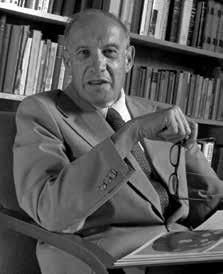
He observed that innovation often springs from unexpected places: anomalies in performance, gaps between expectations and reality, shifts in demographics, and new perceptions of old products. These insights encouraged companies to pay attention to weak signals in their environments, rather than simply scaling existing models.
Importantly, Drucker saw innovation as the responsibility of management. It was not enough to celebrate creative ideas; firms had to build repeatable processes that turned those ideas into actionable strategies. Innovation required not only vision but execution—embedding risktaking into the organisational culture while maintaining operational discipline.
In the digital age, where industries are routinely disrupted and business cycles accelerate, Drucker’s disciplined approach to innovation serves as a vital counterweight to the hype. It reminds leaders that meaningful innovation is about relevance, not novelty—and that success lies in solving real problems for real people.
MANAGING THE KNOWLEDGE ECONOMY
Perhaps Drucker’s most prescient contribution was his early recognition of the shift from manual labour to knowledge work. Long before the rise of the digital economy, he understood that a new type of worker—defined not by physical output but intellectual contribution—would reshape the rules of management.
In this new context, traditional commandand-control models would falter. Drucker championed a more decentralised, humanistic style of leadership—one that trusted individuals to make decisions, valued their expertise, and encouraged continuous learning. He believed
managers should act less as overseers and more as facilitators, helping people align personal development with organisational goals.
Crucially, Drucker understood that knowledge workers are driven not just by salaries but by meaning. They want to know their work matters, that their skills are being used effectively, and that they are part of something larger. Purpose, he argued, was not a luxury or a branding exercise— it was a strategic necessity for engagement and retention.
His view extended to organisational culture. Collaboration, open communication, and knowledge sharing were essential. Drucker envisioned workplaces where ideas could flow across silos, where experimentation was encouraged, and where failure was treated as a learning opportunity.
These principles underpin many of today’s best-performing companies. From agile teams to learning organisations, from flat hierarchies to mission-driven leadership, the modern management playbook owes a profound debt to Drucker’s early insights.
THE CALL TO ADAPT
Drucker was adamant that the greatest threat to business was not competition—but complacency. Change, he warned, was not episodic but continuous, and organisations that failed to adapt would be left behind. He urged leaders to challenge assumptions, scan the horizon for disruption, and proactively shape their futures rather than react defensively.
In his later writings, Drucker turned increasingly to questions of ethics and social responsibility. He argued that businesses could not isolate themselves from the societies they served. Long before ESG became a boardroom acronym, he insisted that economic performance and social impact were not mutually exclusive, but deeply intertwined.
A TIMELESS FRAMEWORK
Peter Drucker’s philosophy offers more than just management theory—it provides a moral compass for leadership in complex times. He believed that businesses exist to serve, to innovate, and to uplift. His enduring relevance lies in his refusal to separate efficiency from ethics, or profitability from purpose.
As today’s leaders face a new wave of technological disruption, geopolitical uncertainty, and social transformation, Drucker’s work remains a vital guide. The world has changed, but his questions—about customers, innovation, people, and purpose—remain as urgent as ever.
> JOHN STUART MILL
Balancing Liberty and Progress in the Modern Business World
John Stuart Mill (1806–1873) was one of the great polymaths of the 19th century—a philosopher, political economist and reformer whose ideas continue to shape modern discourse on liberty, responsibility and social progress. While firmly rooted in the Enlightenment tradition, Mill departed from the utilitarianism of his predecessors to forge a more humane and sophisticated model of ethical reasoning, one that takes seriously the tension between individual autonomy and collective welfare.
For the modern business world, this tension lies at the heart of decision-making. Mill's insistence on reconciling market freedom with moral responsibility provides a valuable template for navigating today’s challenges: global inequality, stakeholder expectations, and the role of business in shaping a just society. His legacy is not just theoretical—it offers a practical compass for leaders seeking to align profitability with purpose.
LIBERTY, INDIVIDUALITY AND THE HARM PRINCIPLE
In On Liberty (1859), Mill articulated one of the most influential arguments for individual freedom in Western philosophy. At its core lies the “harm principle”: individuals should be free to act as they choose, provided their actions do not harm others. For Mill, liberty was not a luxury—it was essential to human flourishing, creative innovation, and societal progress.
This ethos remains deeply relevant to business. Companies that prioritise autonomy, diversity and individual expression often outperform those that adopt rigid, top-down approaches. Respecting the rights of employees, customers and stakeholders is more than good ethics—it is sound business strategy. By encouraging openness, allowing dissent, and fostering inclusive workplaces, organisations become more agile, innovative and resilient.
Mill also believed that individuality was not only a right but a social good. Uniformity, he warned, breeds stagnation. In the modern workplace, this translates into a culture where creativity thrives, where employees are empowered to think differently and challenge convention. Businesses that nurture this kind of environment are better equipped to adapt to disruption and anticipate change.
UTILITARIANISM REFINED: BEYOND SHAREHOLDER VALUE
While Mill inherited Jeremy Bentham’s utilitarian framework—seeking the greatest happiness for the greatest number—he introduced a vital refinement: not all forms of happiness are equal. Higher pleasures, such as those derived from intellectual, emotional and moral development, are superior to mere physical satisfaction.

For business, this elevation of qualitative wellbeing reshapes how success is measured. It is not enough to deliver profits to shareholders if doing so undermines employee welfare, environmental stability or social cohesion. Mill’s utilitarianism calls for a broader calculus—one that weighs long-term societal impact alongside quarterly earnings.
This philosophy underpins the shift from shareholder capitalism to stakeholder capitalism. Businesses today are increasingly expected to account for their effect on the wider ecosystem, from supply chains and communities to climate and governance. Engaging stakeholders with honesty and transparency, considering the full consequences of strategic decisions, and actively pursuing social responsibility are not fringe ideals—they are central to sustainable competitiveness.
Progress, Innovation and Human Development Mill was a passionate advocate for progress—not merely in material terms, but in human potential. He saw economic development as a means to expand individual opportunities, enhance societal capabilities, and reduce suffering. True prosperity, in his view, meant more than GDP growth; it meant a society where every individual could thrive.
This idea aligns naturally with the mission of modern businesses. Companies that invest in innovation, employee development, education and community support are not only contributing to social uplift—they are future-proofing their own organisations. In Mill’s framework,
supporting human capital is not optional; it is the foundation of collective advancement.
Mill’s vision also anticipates today’s conversations around inclusive growth. He understood that markets alone could not ensure equitable outcomes. Businesses must therefore embrace fairness—through fair wages, non-discriminatory practices, and access to opportunity—as a core element of strategy. Doing so builds trust, attracts talent and reinforces social licence to operate.
Furthermore, Mill’s concern for sustainable development—though not expressed in modern terms—finds clear echoes in today’s ESG agenda. His belief in progress as a moral imperative means balancing present success with future impact. In this light, businesses must think beyond immediate returns and take responsibility for the environmental and social legacy they leave behind.
RECONCILING FREEDOM AND RESPONSIBILITY
Perhaps Mill’s most valuable contribution is his refusal to treat liberty and social good as competing goals. He argued that a society that protects individual freedom is more likely to be innovative, resilient and just—but only if it recognises its duties to those who are vulnerable or excluded.
For business leaders, this means understanding that economic freedom is not a licence for excess, but a call to steward resources wisely. It is not only possible but essential to reconcile entrepreneurial ambition with ethical responsibility. Listening to stakeholders, fostering ethical cultures, and aligning corporate values with broader societal aims are the modern expressions of Mill’s vision.
The companies that will define the next era of business are those that embrace this dual mandate: protecting freedom while advancing collective well-being.
A 21ST-CENTURY FRAMEWORK FOR BUSINESS
John Stuart Mill's thinking offers a rich and coherent framework for contemporary business practice. His blend of principled individualism, ethical utility, and commitment to progress challenges companies to think beyond the balance sheet and to place human dignity at the centre of strategy.
As debates about corporate purpose, social responsibility, and sustainable capitalism continue to evolve, Mill’s ideas serve as both a moral guide and a strategic tool. They remind us that business success and societal flourishing are not only compatible—they are, in the long run, inseparable.
FRIEDRICH NIETZSCHE
Philosophy for Innovation and Leadership
Friedrich Nietzsche (1844–1900) remains one of the most misunderstood and intriguing figures in philosophy. Often dismissed as too abstract or too extreme for practical application, his writing—intense, poetic, and unapologetically confrontational—was never intended for comfort. But buried in his critique of conventional values lies a provocative vision for leadership, innovation, and transformation that resonates powerfully in today’s business climate.
Nietzsche’s core ideas—among them the will to power, self-overcoming, and the revaluation of values—offer a lens through which to rethink ambition, resilience, and authenticity. For business leaders navigating disruption and change, Nietzsche provides something deeper than best practices: a mindset for radical creativity and enduring success.
THE WILL TO POWER AND THE DRIVE TO EXCEL
At the centre of Nietzsche’s philosophy is the will to power—not simply a desire for domination, but an inherent drive toward growth, mastery, and the realisation of potential. For Nietzsche, this was the fundamental engine of life: a ceaseless urge to overcome obstacles and elevate oneself.
Translated into business terms, the will to power becomes a call to innovate, to expand, and to pursue excellence with fierce intent. Companies guided by this ethos do not settle for incremental gains—they disrupt industries, redefine standards, and push boundaries. Nietzsche’s idea urges organisations to reject stagnation, to pursue transformative goals, and to meet adversity not with fear, but with creative force.
The will to power also demands internal fortitude. In an age defined by volatility and complexity, Nietzsche’s insights help explain why some companies thrive while others falter. Those that channel this force through strategic vision, bold risk-taking, and continuous reinvention stand poised not just to survive disruption, but to lead it.
SELF-OVERCOMING: THE ENTREPRENEUR’S INNER BATTLE
Perhaps Nietzsche’s most profound insight lies in the concept of “self-overcoming”—the notion that our greatest challenge is not the external world, but ourselves. Real strength, he argued, comes from confronting limitations, discarding inherited beliefs, and forging new paths of personal and professional growth.
For entrepreneurs, this is a familiar journey. Building a business is rarely linear; it demands perseverance through failure, clarity of vision, and the courage to evolve. Nietzsche’s philosophy validates this struggle, framing it not as a weakness, but as the path to greatness.
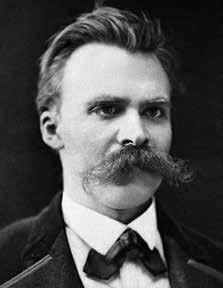
Self-overcoming is equally relevant to leadership. The modern leader must be more than a strategist—they must be a learner, a reformer, and an authentic human being. Nietzsche’s vision pushes leaders to abandon formulaic models of success, and instead pursue an individual and transformative path that draws on strength of character and depth of purpose.
REVALUATION OF VALUES: REDEFINING SUCCESS
Nietzsche believed that the values inherited from traditional institutions—religion, politics, even economics—had grown stale and constraining. He called for a “revaluation of all values,” encouraging individuals to question accepted norms and create their own moral compass.
This iconoclasm is fertile ground for business innovation. Companies that challenge entrenched industry models or outdated customer assumptions often emerge as market leaders. From Tesla’s disruption of automotive conventions to Patagonia’s environmental activism, the willingness to reject conformity in favour of purpose-driven strategies is a hallmark of the modern entrepreneurial spirit.
The revaluation of values also inspires ethical leadership. Rather than outsourcing moral responsibility to prevailing norms, Nietzsche invites leaders to take ownership of their values, to define what success means on their own terms, and to craft a corporate culture that reflects those convictions. The result is a more engaged workforce, a stronger brand identity, and a deeper connection with purpose.
THE ÜBERMENSCH AND VISIONARY LEADERSHIP
Nietzsche’s concept of the Übermensch—often misunderstood and misappropriated—is not
a call for elitism, but an aspirational model of human potential. The Übermensch is a figure who transcends conventional morality, embraces creativity, and lives authentically according to values of their own making.
In the business context, this archetype speaks to the rise of visionary leaders: individuals who resist trends, remain undaunted by risk, and build enduring enterprises grounded in bold ideas. These are the leaders who see what others miss, who inspire loyalty through conviction, and who carry their organisations forward through turbulent change.
Nietzsche’s Übermensch also embodies responsibility. By creating one’s own values, the leader accepts the weight of those decisions and their consequences. This deep sense of accountability, paired with a relentless drive to create, positions the Übermensch as an ideal figure for 21st-century leadership: not infallible, but courageous; not authoritarian, but self-aware.
EMBRACING THE UNCOMFORTABLE
Nietzsche’s work does not offer easy answers. It asks business leaders to face uncomfortable truths about conformity, mediocrity, and the limits of traditional thinking. It demands selfawareness, intellectual courage, and a willingness to experiment and evolve.
Yet this is precisely what the modern business landscape requires. In a world where industries are being reinvented and expectations are shifting overnight, Nietzsche’s philosophy offers both challenge and invitation. His call to live and lead with intensity, creativity and authenticity is a compelling directive for anyone seeking to do more than just succeed—to build something enduring.
NIETZSCHE’S LEGACY FOR BUSINESS
Nietzsche’s influence on art, literature and culture is well documented, but his impact on business is only beginning to be appreciated. As companies seek deeper meaning, stronger cultures, and greater resilience, his ideas become increasingly valuable.
The will to power inspires innovation and bold action. Self-overcoming challenges individuals to embrace growth and change. The revaluation of values encourages fresh thinking, while the vision of the Übermensch provides a model for ethical and transformative leadership.
More than a philosopher, Nietzsche was a provocateur of the human spirit. For businesses willing to think deeply, act bravely, and lead authentically, his philosophy offers a timeless— and daring—guide to greatness.
NICCOLÒ MACHIAVELLI
How Renaissance Realism Still Shapes Business Strategy
Niccolò Machiavelli, the 16th-century Florentine diplomat and political theorist, is often misrepresented as the architect of cunning and duplicity. His name has become shorthand for ruthless ambition, but this caricature belies the complexity of his thought. The Prince—written around 1513 and published posthumously—was conceived as a guide for rulers navigating the volatile politics of Renaissance Italy. Yet its core ideas, shaped by observation and experience, remain strikingly applicable to today’s business landscape.
Machiavelli’s world was one of shifting alliances and sudden upheaval—a reality not far removed from today’s globalised marketplace. His thinking was driven by realism, not idealism. He recognised that effective leadership rests not on how things ought to be, but on how they truly are. That grounding in practical experience accounts for his enduring appeal to business leaders and strategists alike.
THE STRATEGIC REALIST
At the heart of Machiavelli’s philosophy lies a disavowal of utopianism. He believed leaders must operate within the constraints of human behaviour, shaped by ambition and self-preservation. This view may seem bleak, but it is not cynical. For Machiavelli, success lies in understanding human nature and responding accordingly.
He warned that fortuna—chance—governs much of human affairs. But he balanced this with the concept of virtù, a blend of courage, intelligence and adaptability. Leaders must exercise virtù to tame fortuna. The successful executive, like the successful prince, is one who can pivot decisively in response to disruption and seize fleeting opportunities.
Anticipating change is as important as reacting to it. Machiavelli emphasised the foresight required to detect emerging threats before they crystallise.
“It is truly wise to see troubles afar off,” he wrote. Strategy demands market foresight, scenario planning and long-term resilience.
This applies to industry disruption—from geopolitical instability to technological transformation. Machiavelli would likely encourage leaders to take calculated risks, building flexibility into their operating models. Businesses that cling to legacy systems are unlikely to withstand volatility. Those that pre-empt change are more likely to thrive.
He also recognised that leaders often operate in environments where moral clarity is elusive. Prudence, for him, lay in distinguishing between degrees of harm and acting decisively. In a corporate setting, this translates into difficult

decisions—about restructuring, resource allocation or long-term viability.
UNDERSTANDING COMPETITIVE POWER
Machiavelli viewed power as a dynamic relationship. Success depends as much on the missteps of rivals as on one’s own capabilities. He advocated careful study of adversaries— understanding their motives, weaknesses and likely actions. In business, this means competitive intelligence is essential.
This aligns with today’s data-driven decisionmaking. Machiavelli might not have imagined algorithms or analytics, but his approach supports their use. Knowing the terrain—and the players— is critical. A well-informed strategy can help companies anticipate market shifts and respond decisively.
His advice on acquiring and retaining power applies to how businesses grow market share. He advised rulers to build strong foundations—loyal armies in politics, and in business, strong brands, customer trust and resilient models. Power, once secured, must be sustained through persuasion and assertiveness.
Strategic partnerships, acquisition strategies and brand equity mirror the foundations Machiavelli championed. He would admire businesses that use both influence and operational strength to maintain their edge.
LEADERSHIP IN PRACTICE
Machiavelli’s emphasis on perception is particularly relevant today. A leader, he argued, must appear virtuous—even if circumstances require hard decisions. In business, this translates to brand image, reputation management and corporate communications. A strong reputation attracts customers and talent, but it must be underpinned by competence and ethical conduct.
His claim that it is better to be feared than loved—if one cannot be both—is often misunderstood. He was not advocating tyranny, but recognising the importance of respect and authority. A CEO must balance empathy with firmness. Leaders who are only loved risk complacency; those who lead solely through fear invite disloyalty.
Authentic leadership involves more than charisma. It means taking responsibility, even when outcomes are unpopular. For Machiavelli, leadership means remaining effective in the face of chaos—not satisfying everyone, but advancing long-term goals.
The concept of virtù remains vital. It represents the qualities that allow a leader to navigate change. Business leaders with virtù pursue goals while adapting to challenge.
Machiavelli also stressed the importance of capable advisors. A leader is only as strong as their team. In business, this means prioritising recruitment and leadership development. Firms that invest in talent and empower their people are more likely to innovate and succeed.
Succession planning and internal leadership pipelines are not mere HR exercises; they are strategic imperatives. Machiavelli would advise CEOs to build a court of capable lieutenants— people who are competent, loyal and unafraid to speak truth to power.
MACHIAVELLI’S MODERN RELEVANCE
Machiavelli understood complexity. His world was one of upheaval and transition, much like the digital, globalised economy of today. His realism offers an antidote to naivety—encouraging leaders to navigate ambiguity without losing sight of strategic aims.
He did not promote amorality. He offered a framework for success. In a modern context, where ESG, transparency and stakeholder engagement matter more than ever, his advice must be tempered with ethical expectations. Strategy and integrity are not mutually exclusive.
His work remains a valuable guide for businesses seeking to balance agility with accountability. It demands clarity of purpose, resilience, and the courage to act—even when outcomes are uncertain.
Five centuries on, The Prince continues to resonate. Machiavelli’s pragmatism, adaptability and understanding of leadership offer a timeless framework for navigating power and competition. He may have written for princes, but his lessons remain essential for today’s executives.
ADAM SMITH
Enduring Principles for Modern Business
Adam Smith, the 18th-century Scottish philosopher and economist, is widely regarded as the father of modern economics. His seminal work, An Inquiry into the Nature and Causes of the Wealth of Nations (1776), laid the intellectual foundations of free-market capitalism and continues to influence economic thinking and business strategy. While rooted in economic theory, Smith’s insights remain vital for contemporary business leaders navigating a fast-changing global economy.
To appreciate Smith’s relevance, one must consider the historical backdrop. He wrote at a time when mercantilism—the belief that national wealth was fixed and best secured through hoarding gold and imposing trade restrictions—dominated economic policy. Smith challenged this doctrine, arguing instead that a nation's true wealth lies in its productivity and the efficiency of its markets. His thinking set in motion a shift in how economies, markets and enterprise were understood.
THE INVISIBLE HAND AND THE LOGIC OF SELFINTEREST
Central to Smith’s worldview is the concept of the “invisible hand”—the idea that individuals pursuing their own economic interests inadvertently contribute to the greater good. In a system governed by open competition and rule of law, the self-interested actions of firms are guided by market forces to allocate resources efficiently, spur innovation, and create wealth.
For Smith, the pursuit of profit was not at odds with societal benefit. In business, companies must compete to offer better value, lower prices, and improved products to win market share. Innovation and efficiency are incentivised, and consumers benefit from these dynamics.
Yet Smith warned that self-interest, without constraint, could lead to abuses. He was critical of monopolies and collusion, and he stressed the importance of competitive markets and legal frameworks to ensure fair play. His call for transparency and rule-based governance remains central to regulatory thinking.
THE DIVISION OF LABOUR AND PRODUCTIVITY GAINS
Another cornerstone of Smith’s thought is the division of labour. In The Wealth of Nations, he described a pin factory where ten workers, each performing a specific task, could produce thousands of pins a day—far more than if each worker attempted to make a pin alone. Specialisation, he argued, leads to efficiency, skill development, and innovation.
This principle underpins much of modern business. From assembly lines to functional

corporate teams, the division of labour boosts productivity and allows for scale. Smith’s insight also anticipated the rise of professional services, where individuals and firms build expertise in narrow but high-value areas.
He extended this idea to trade and the broader economy. Both individuals and nations, he argued, benefit from specialising in what they do best and trading for the rest. This principle of comparative advantage remains a foundation of global business strategy.
FREE MARKETS AND THE ROLE OF COMPETITION
Smith was a strong advocate for free markets, not out of ideology but because he saw competition as the key to progress. In a competitive environment, businesses must evolve—innovating, cutting costs, improving quality—to survive and thrive. This dynamic benefits the broader economy.
But Smith recognised that markets can fail. He believed governments have a role in preventing monopolies, enforcing contracts, and protecting property rights. These functions, he argued, are crucial to preserving the integrity of the market.
At the same time, he warned against excessive state interference. Too much regulation, he believed, could distort incentives and stifle innovation. The modern challenge is to strike the right balance between oversight and entrepreneurial freedom.
ETHICS AND THE MORAL FOUNDATIONS OF COMMERCE
Although remembered for his economic theory,
Smith was also a moral philosopher. His earlier work, TheTheoryofMoralSentiments, explored empathy, sympathy, and the social dimensions of human behaviour. He believed that while individuals are motivated by self-interest, they are also guided by conscience and the desire for social approval.
For Smith, commerce depends on trust and integrity. Contracts must be honoured, quality delivered, and promises kept. In today’s economy, where reputational risk carries real consequences, this emphasis on ethical conduct is more relevant than ever.
Corporate misconduct and market manipulation do more than break rules—they undermine confidence in the system. Smith’s vision of markets operating within a moral and legal framework underscores the need for principled leadership.
LESSONS FOR TODAY’S BUSINESS LEADERS
Smith’s work offers a toolkit for modern leaders. Open competition drives innovation and value. Companies should compete on quality, price, and service—not through regulatory gamesmanship or market dominance.
His work also reinforces the importance of specialisation. Firms should identify and refine their core competencies, pursuing excellence where they have comparative advantage.
Smith advocated for long-term thinking. While profit is essential, it must be pursued within a framework of ethics and social good. Reputation, trust, and principled behaviour are not soft assets—they are business essentials.
Finally, Smith encourages leaders to understand the larger system. Firms operate within economies shaped by policy, culture and technology. A macroeconomic perspective helps businesses anticipate change and align with broader societal needs.
AN ENDURING BLUEPRINT FOR PROSPERITY
Two centuries after his death, Adam Smith remains a towering figure in economic thought. His principles continue to guide trade, regulation, and corporate strategy worldwide. In an age of uncertainty, his analysis of markets, motivation and morality still resonates.
Smith never promised utopia. He acknowledged capitalism’s flaws, but believed that individual ambition—when guided by ethics and institutional checks—could deliver shared prosperity. For today’s leaders, his insights offer not just theory, but a practical blueprint for sustainable success.
SIMONE DE BEAUVOIR
Lessons on Equality, Ethics, and Leadership
Simone de Beauvoir (1908–1986), the French philosopher, writer and feminist theorist, remains one of the most influential thinkers of the 20th century. Her seminal work, The Second Sex (1949), fundamentally reshaped the global conversation on gender and equality. Though focused on women’s societal status, Beauvoir’s broader existentialist framework and her analysis of power, identity and authenticity hold enduring relevance for today’s business leaders.
Her writings confront the structures that limit opportunity, questioning how leadership, ethics and agency function in institutions. Her work challenges hierarchies and implicit bias, urging business leaders to reflect on inclusion, representation and the distribution of power in the workplace. As ESG obligations and stakeholder expectations rise, Beauvoir’s philosophical clarity offers a timely lens for cultural and structural reform.
THE SECOND SEX AND CORPORATE POWER STRUCTURES
In The Second Sex, Beauvoir argued that “one is not born, but rather becomes, a woman.” Gender, in her view, is a social construct—shaped by institutions, norms and deeply embedded power relations.
She critiqued the tendency of patriarchal systems to define women as the “other,” denying them autonomy and relegating them to subordinate roles. These dynamics are echoed in the corporate world, where disparities in pay, leadership and opportunity persist.
Beauvoir’s insights explain why formal policies alone are insufficient. Unconscious bias continues to affect hiring, evaluation and progression. Structures that appear neutral often reinforce inherited advantages. Equality requires more than policy; it demands systemic self-examination.
She also challenged leadership models rooted in dominance and control—models still prevalent in many organisations. Her work opens the door to alternative paradigms, valuing empathy, collaboration and emotional intelligence alongside strategy and decisiveness.
EXISTENTIALISM AND THE ETHICS OF RESPONSIBILITY
Beauvoir’s existentialist ethics stress that individuals—and by extension organisations— are free to choose, and wholly responsible for the consequences of those choices. With no predetermined rules, meaning must be created through action.
This view resonates in an age of corporate accountability. Businesses are increasingly judged not just by profits but by how they treat

employees, manage supply chains and respond to global crises. There is no longer any neutrality; silence or inaction are choices too.
Beauvoir’s notion of authenticity—the alignment between values and action—offers a moral compass. Authentic leadership demands not just values statements, but decisions and practices that uphold those principles. It requires transparency, accountability and a willingness to change.
Her existentialist freedom also implies the possibility of transformation. Legacy institutions can evolve, revise outdated assumptions and operate with greater integrity. The past is not destiny.
LEADERSHIP AS EMPOWERMENT, NOT CONTROL
Beauvoir reimagined leadership as a dynamic grounded in mutual recognition rather than hierarchy. Leadership, in her model, is about enabling others—not asserting control.
This approach supports a culture where employees take ownership, make decisions and develop their potential. It contrasts with micromanagement and instead promotes trust, responsibility and innovation.
Authentic leadership, she maintained, involves consistency between words and actions. Leaders who demonstrate integrity build credibility and foster loyalty. Ethical behaviour is not an abstract concept—it must be visible in decisions, policies and conduct.
Beauvoir also underscored that freedom must be matched with responsibility. The leader’s role is not to withdraw, but to guide—ensuring that autonomy supports collective wellbeing and organisational purpose.
DIALOGUE, DIVERSITY AND THE CHALLENGE TO CONFORMITY
Dialogue, in Beauvoir’s framework, is essential to freedom. She insisted that true autonomy is achieved through reciprocal recognition—a condition that requires inclusive conversation, open feedback, and engagement with diverse viewpoints.
For businesses, this means dismantling silos, listening to employees, and opening leadership to voices that challenge the status quo. Innovation thrives in cultures where ideas can be tested, debated and refined.
Beauvoir also encouraged critical engagement with inherited norms. Companies should not accept “the way we’ve always done it” as justification for exclusion or inequity. Her work urges a kind of moral restlessness—a refusal to settle for unjust or outdated practices.
From Individual Agency to Organisational Change
Beauvoir’s philosophy begins with individual freedom, but her vision extends to institutions. The goal is not only liberated individuals, but reimagined systems. In business, this means aligning commercial ambition with social impact, purpose and long-term sustainability.
Her emphasis on justice and agency anticipates modern stakeholder capitalism, in which companies are held accountable by employees, investors and society at large. Financial performance alone is no longer enough—companies are also measured by their social value.
Beauvoir’s existentialist feminism calls for a business culture grounded in dignity, inclusivity and ethical courage. The modern workplace is a stage for action, a space where autonomy, responsibility and collaboration must co-exist. Her work is a challenge to do better—and a blueprint for how to begin.
BEAUVOIR’S LEGACY FOR THE BOARDROOM
Simone de Beauvoir’s insights remain strikingly relevant for today’s corporate environment. Her philosophy compels businesses to re-evaluate how they lead, how they measure success, and whom they empower.
She reminds us that equality is not an add-on but a foundation for progress. That authenticity and accountability are not ideals, but strategic imperatives. That leadership is not about hierarchy, but about trust and transformation.
By embracing Beauvoir’s vision, businesses can do more than keep up with change—they can shape it. And in doing so, they can build organisations that are not only more just, but more resilient, innovative and impactful.

The Emerald Isle's Economic Miracle: How Ireland Became a Wealth Powerhouse >
From struggling economy to European frontrunner, Ireland’s remarkable transformation is a tale of strategic policymaking, foreign investment — and a touch of Celtic magic. But is all as it seems? This article explores the forces behind Ireland’s extraordinary GDP per capita and unpacks the reality beneath the headline figures.
County Clare, Ireland: Cliffs of Moher

Ireland, a country long celebrated for its lush landscapes, lyrical heritage, and literary giants, has also emerged as one of the wealthiest nations in Europe. Boasting the second-highest GDP per capita in the European Union, Ireland’s economic evolution — often encapsulated by the term “Celtic Tiger” — is a story of resilience, reform, and reinvention. Yet behind this economic miracle lies a more complex reality, shaped by strategic policy decisions, favourable global dynamics, and the expansive footprint of multinational corporations.
For much of its modern history, Ireland remained a largely agrarian society, marked by poverty, high emigration, and economic inertia. Industrialisation arrived slowly, and for decades the country lagged behind its European peers. The tide began to turn in 1973 when Ireland joined the European Economic Community (now the EU), unlocking access to larger markets and EU structural funds that would underpin future development.
But the true turning point came in the late 1980s and 1990s, as Ireland embraced a transformative policy agenda. A commitment to attracting foreign direct investment (FDI) reshaped the economic landscape. The country’s low corporate tax rate of 12.5 percent, combined with English as the primary language, EU access, and a stable regulatory environment, made Ireland a magnet for U.S. tech and pharmaceutical giants including Intel, Apple, Microsoft, and Pfizer.
This tax strategy, while criticised in some EU circles for encouraging tax base erosion elsewhere, proved highly effective in luring multinationals to establish European headquarters in Ireland. Alongside this, investment in higher education produced a young, English-speaking and highly skilled labour pool. This talent pipeline became a core asset for technology firms, financial services providers, and R&D centres.
Ireland’s EU membership also paid dividends. Structural funds helped finance infrastructure upgrades, expand educational access, and modernise the economy — effectively setting the stage for long-term growth. A unique feature of the Irish model during this period was its social partnership framework, which saw tripartite agreements between government, employers and trade unions. These fostered wage moderation and policy stability, further enhancing Ireland’s investment appeal.
The role of multinational corporations in Ireland’s success story cannot be overstated. These companies generated employment, transferred knowledge, and contributed significantly to headline economic figures. Yet the nature of this contribution remains complex. While GDP measures economic activity within national borders, GNP accounts for income earned by residents. In Ireland’s case, GDP is inflated by
"The combination of sound policy, global opportunity, and a skilled workforce has propelled the nation from the margins of Europe’s economy to the centre."
the profits of foreign firms, much of which is repatriated. As a result, GNP — a more accurate reflection of domestic income — is significantly lower.
This disparity highlights how some of Ireland’s apparent prosperity exists more on paper than in households. Many firms channel vast profits through Irish subsidiaries using transfer pricing and other accounting practices, inflating GDP figures without proportionate benefits to the broader population.
Nonetheless, the presence of these companies has delivered genuine dividends. High-skilled job creation, an advanced services sector, and supply chain development have all contributed to Ireland’s economic maturity. The spillover effects into domestic industries, professional services, and higher education have been considerable.
Yet the Celtic Tiger’s success has not come without growing pains. Nowhere is this more apparent than in the housing market. Rapid population growth, urban concentration, and underinvestment in housing stock have combined to create a deep crisis. Soaring rents and property prices, especially in Dublin, have made it increasingly difficult for young professionals to buy or rent homes. The result has been growing social discontent, renewed emigration, and mounting political pressure.
The rising cost of living presents a further challenge. While average wages have increased in line with economic growth, they have not always kept pace with the escalating prices of housing, healthcare, and childcare. For many households, disposable income remains under strain.
Another concern is income inequality. While Ireland has grown wealthier on aggregate, the gains have not been evenly distributed. Those employed in high-growth sectors such as technology and pharmaceuticals have seen disproportionate benefits, while others — especially those in rural areas or dependent on public services — have experienced fewer improvements in living standards.
Moreover, Ireland’s dependence on a relatively small number of multinationals introduces a
level of economic vulnerability. A shift in global tax policy or a strategic pivot by one or two key firms could have wide-reaching consequences. The term “leprechaun economics,” coined after a sharp GDP revision in 2015 attributed to corporate restructuring by multinationals, captures the unease with which some view Ireland’s headline economic metrics. While they reflect enormous financial flows, they do not necessarily correspond with domestic productivity or well-being.
Looking ahead, Ireland faces a delicate balancing act. Policymakers must preserve the elements that made the economy attractive to global investors while addressing its structural weaknesses. Diversifying the economy is a growing priority. Reducing over-reliance on foreign firms by supporting indigenous entrepreneurship and investing in innovation ecosystems will be essential.
Housing reform is another area demanding urgent attention. Increased public investment, streamlined planning procedures, and incentives for affordable housing construction could ease supply-side constraints and reduce upward pressure on prices.
On fiscal policy, Ireland must prepare for changes in global tax norms, particularly the OECD-led initiative for a global minimum corporate tax rate. As these reforms evolve, Ireland will need to adapt without compromising its competitiveness. Broader tax and social policy adjustments may also be required to ensure that economic gains are more equitably shared.
Investment in infrastructure remains critical. Enhancements to public transport, broadband connectivity, and green energy capacity will support productivity while improving quality of life for Irish citizens. Tackling inequality through targeted education, health and social policies will further strengthen the economic base and ensure cohesion.
Ireland’s transformation into a European economic leader is undeniably impressive. The combination of sound policy, global opportunity, and a skilled workforce has propelled the nation from the margins of Europe’s economy to the centre. The Celtic Tiger may no longer roar with quite the same ferocity, but the structural foundations laid over the past 30 years remain powerful assets.
Yet GDP alone is not a sufficient measure of success. Ireland’s long-term prosperity will depend on its ability to balance competitiveness with inclusiveness, short-term investment with long-term sustainability, and foreign capital with domestic resilience. The Emerald Isle has achieved a rare economic feat — but future growth will require bold thinking, careful stewardship, and a commitment to ensuring that prosperity reaches every corner of society. i


Galeazzi Sant’Ambrogio Hospital of the Future - Italy
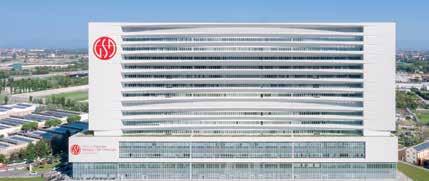

American Heart of Poland European Cardiovascular Hub
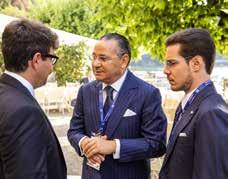

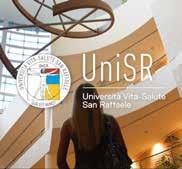

Over 50 + Specialities Handling Complex Care



700+ Patents

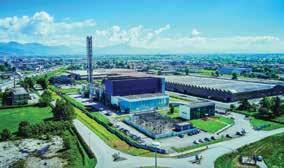
Sustainable Development Powering Tomorrow
An exceptional group devoted to the service of humanity
Serving Humanity Najaf - Iraq
The Promise and Pressure of the UK’s
AI Aspirations
With world-class universities, a vibrant start-up ecosystem, and renewed strategic investment, the United Kingdom has the intellectual capital and policy ambition to stake a credible claim in the global artificial intelligence race. Yet despite bold rhetoric, its leadership aspirations face growing strain from intensifying competition, strategic underinvestment, and a widening execution gap at home.
The UK is far from languishing in AI. Institutions such as Cambridge, Imperial College London, and DeepMind continue to set global benchmarks for academic and commercial AI innovation. Government figures from 2023 reported more than 3,000 AI companies employing over 60,000 people and generating around £10bn annually.
Momentum has since accelerated. The AI Opportunities Action Plan, launched in early 2025, pledges to drive innovation through AI Growth Zones, planning reform, and faster grid connections for data centres. Private investment is flowing too: Google Cloud has expanded AI offerings and training in the UK, while Oracle has committed £5bn over five years to advance cloud-based AI services.
R&D tax credit specialist Source Advisors points to UK strengths in secure communications, image processing, and motion technologies, with firms such as NChain and Sony Interactive Entertainment leading in their fields.
Yet the global impact remains modest. The UK ranks eighth for AI patents, holding just 1.39 per cent of global filings — far behind China’s 61 per cent and the US’s 20 per cent. The pattern is familiar: an impressive intellectual pipeline but limited conversion into protected, monetisable innovation at scale.
The Talent Crunch
Demand for AI talent is surging. An Oxford University study tracking more than 10m job postings found a 21 per cent rise in AI-specific vacancies between 2018 and 2024, with a shift from formal academic credentials towards proven practical expertise.
But the gap is stark: IT Pro reports that over 80 per cent of UK tech leaders struggle to fill AI roles, particularly in deep learning and large language model development. Even with world-
class universities, the UK loses talent to US and Chinese tech giants offering higher salaries and broader career prospects.
The shortage is not confined to engineers. Skills in AI governance, ethics, and risk analysis are increasingly in demand, reflecting a broader need for expertise in responsible deployment. The government has committed over £2.3bn to AI initiatives in the past decade, including £117m for AI PhDs and postdoctoral funding, but retention strategies, visa reform, and clearer study-to-employment pathways are essential to avoid becoming a training ground for overseas competitors.
Strong Research, Growing Risk
The UK’s open research culture has long been a strength, but in the AI era it can also be a vulnerability. As early-stage models and datasets become strategic assets, they are increasingly targeted by foreign state-backed actors.
In November 2023, the government launched the AI Safety Institute to position the UK as a leader in responsible oversight, with a remit to test advanced models, set safety benchmarks, and advise on regulation. This followed the AI Safety Summit at Bletchley Park, which brought together global stakeholders to address frontier risks.
Yet ambition outpaces execution. Many start-ups lack the cyber resilience of larger firms, and even top researchers face unclear guidance on what should remain confidential.
Why This Matters for Business
Without an integrated ecosystem covering talent, infrastructure, and intellectual property, UK firms risk losing their competitive edge. Too often, innovations conceived here are scaled and monetised abroad.
In 2023, US AI investment exceeded $67bn, including £25bn for generative AI. By contrast,

the UK’s £900m Isambard-AI supercomputer is a positive step — but far from the scale needed for a sovereign AI stack. Heavy reliance on overseas cloud infrastructure and foundational models leaves the UK as an implementer of technology shaped elsewhere, rather than a shaper of global AI cycles.
Where the UK Needs to Act Ambition is not the issue — execution is. Converting vision into durable results requires shoring up fundamentals.

The talent pipeline remains central. Sustained support for PhD and postdoctoral researchers can anchor long-term innovation, but must be paired with retention measures. More accessible routes from academia into industry, supported by visa reform and clearer post-study work options, could convert educational strength into economic impact.
Infrastructure also needs investment. Reliance on overseas compute and hosting introduces strategic risk; building sovereign capabilities in high-
performance computing and foundational models would bolster resilience and autonomy.
Commercialisation is another weak point. Too many promising academic and start-up projects stall before scaling. Targeted support in funding, IP protection, and market access could unlock untapped potential. Intellectual property rules remain contentious: proposals to relax copyright restrictions for AI training have drawn sharp criticism from publishers and creatives. Balancing innovation with rights protection will be vital for long-term trust.
Finally, security must be embedded across academia and industry to protect research from hostile actors and emerging global cyber threats. The UK’s ability to lead in AI will hinge on safeguarding its innovations as much as creating them.
Individually, these measures may move the needle only slightly. Together, they could underpin genuine, lasting leadership — turning the UK’s AI promise into a competitive advantage that endures. i
Giants of the Turf: Piggott vs Dettori – a Business of Brilliance and Imperfection
From quiet mastery to flamboyant showmanship, Lester Piggott and Frankie Dettori carved indelible marks on the sport of kings. Beyond the headlines and historic wins, their careers reveal the realities of the high-stakes business of horse racing – a world where fortunes are made and lost, and legacy is as fragile as it is celebrated.
In the annals of horse racing, few names inspire the same reverence as Piggott and Dettori. Piggott, the “Long Fellow”, dominated the saddle for decades with stoic precision and almost mystical authority. A master tactician, he extracted every ounce of ability from his mounts. Dettori, the effervescent “Flying Italian”, brought a new dimension to the sport, pairing world-class riding with charisma and crowd-pleasing theatrics. Both transcended the racecourse to become household names, yet their careers are also case studies in how elite athletes manage – or mismanage – their professional brands and personal fortunes.
BRILLIANCE IN THE SADDLE
Debates over “who was better” tend to be subjective. Piggott’s nine Epsom Derby victories remain unmatched, alongside 11 British Champion Jockey titles and an estimated 5,300 career wins worldwide. His style was economical and precise, a masterclass in positioning and timing.
Dettori’s record is more international. He has claimed six Prix de l’Arc de Triomphe titles, three British Champion Jockey crowns, and famously rode all seven winners on a single day at Ascot in 1996 – a feat that became a marketing goldmine. His aggressive, instinctive riding was matched by an ability to connect with audiences, his flying dismounts becoming a signature image for the sport.
RACING AS BUSINESS
At the highest level, horse racing is both sport and enterprise. For owners and trainers, jockeys are assets who can directly influence the value of horses, the size of winnings, and the prestige of stables. Both Piggott and Dettori operated as high-value commercial partners, their skills commanding substantial retainers and prize percentages.
Piggott’s tactical genius generated consistent returns for those who secured his services. Horses
like Nijinsky, which he guided to the Triple Crown in 1970, became infinitely more valuable under his hand. His professional success created a virtuous circle: the best rides went to the most successful jockey, ensuring yet more victories and more lucrative opportunities.
Dettori, meanwhile, cultivated not only success on the track but also a brand that could be monetised beyond it. His 18-year association with Sheikh Mohammed’s Godolphin operation guaranteed him top-tier horses and a steady income, but his commercial reach extended further – endorsements, media appearances, and restaurant ventures with celebrity chefs.
PIGGOTT: DOMINANCE UNDONE
Piggott’s career began with his first win at age 12 and spanned nearly five decades. His dominance was matched by a relentless commitment, even as he fought to maintain racing weight. Financially, he amassed an estimated £20 million by the late 1980s, but his off-track dealings proved disastrous.
In 1987, he was convicted of tax evasion, having hidden nearly £3 million in offshore accounts. Sentenced to three years in prison (serving 366 days), he lost his OBE, saw his Newmarket training business collapse, and forfeited significant future earnings. It was a fall that underscored a simple truth: sporting brilliance does not excuse financial negligence.
His later comeback in 1990, winning the Breeders’ Cup Mile on Royal Academy, demonstrated undimmed skill and public appeal. Yet, the scandal remained a permanent shadow, his legacy forever split between his genius in the saddle and his failure in financial governance.
DETTORI: BRAND, RESILIENCE, AND RISK
Dettori’s ascent was marked by energy and engagement. He recognised the commercial power of personality, becoming a global
ambassador for racing. The “Magnificent Seven” at Ascot was not just a competitive masterstroke; it was a branding event that elevated him into mainstream culture.
The Godolphin years brought him stability and consistent success. After the partnership ended in 2012 – shortly after a six-month ban for testing positive for cocaine – he rebuilt his career as a freelance, proving his adaptability. He returned to top form, winning major races worldwide and extending his career into his fifties.
However, Dettori’s business story has also taken a darker turn. In early 2025, reports surfaced that he would file for bankruptcy over long-
standing tax issues with HMRC. While the specifics differ from Piggott’s case, the theme is familiar: even the most celebrated athletes can see their fortunes unravel without robust financial oversight. Dettori publicly expressed embarrassment and urged others to take control of their finances – a candid acknowledgment of the perils of poor management.
DIFFERENT CAREERS, SHARED LESSONS
From a racing standpoint, Piggott’s domestic dominance remains unmatched, his tactical mastery a benchmark for generations. Dettori’s international success, versatility, and ability to maintain competitive form across decades make him equally exceptional.
From a business perspective, their careers diverge. Piggott was a purist, his value almost entirely on the racecourse. His downfall came from unlawful financial practices that ended a promising post-riding career as a trainer. The lesson is clear: compliance and sound advice are non-negotiable for high earners.
Dettori embraced the broader commercial world, leveraging media, hospitality, and global engagements. His setbacks – including the drug ban and current financial crisis – highlight the volatility of a brand built on public persona, and the importance of disciplined wealth management even when income is substantial and diversified.
LEGACY IN CONTEXT
Both men are legends, but their stories reveal as much about the business of sport as about athletic achievement. Piggott’s legacy is that of a supreme competitor whose business failings became a cautionary tale. Dettori’s is of a showman who revolutionised racing’s public image but whose personal finances remind us that visibility and marketability are not substitutes for stability.
In the high-stakes, fine-margin world of professional racing, raw talent is the foundation. Yet as these two giants show, the ultimate legacy is shaped not just by victories, but by the decisions made when the race is over. i
Rocket Man Lands National Launch: Nick Rockett Soars to Aintree Glory in Unforgettable Upset
In a dramatic climax to the 2025 Grand National, 33/1 outsider Nick Rockett, ridden with cool authority by amateur jockey Patrick Mullins and trained by his father, the legendary Willie Mullins, defied pre-race predictions to claim the world’s most famous steeplechase. The victory delivered another coveted trophy to the Mullins dynasty and sent a ripple of disbelief – and delight – through Aintree.
Persistent drizzle had done little to dampen the mood. Aintree buzzed with anticipation ahead of the 177th running of the race, with much of the attention on familiar favourites. Would veteran trainer Alistair Finch seal a record sixth win with the formidable Ironclad? Could the highly rated French contender Le Tigre break the Anglo-Irish hold on the race? And might Homeward Bound, running in memory of late trainer John Jenkins, deliver an emotional victory for his widow?
Nick Rockett, by contrast, had slipped quietly into the line-up. The seven-year-old gelding had shown flashes of ability but lacked headline wins. His 33/1 odds reflected that modest profile. What he did have was a meticulous preparation from Willie Mullins – and a jockey who knew him inside out. Patrick Mullins, despite his amateur status, is one of the most accomplished riders in the point-to-point and bumper sphere, bringing a calm assurance to this most daunting of stages.
FORTY RUNNERS, ONE RELENTLESS TEST
The going was officially soft – the earlier rain having made the four-mile, two-and-a-halffurlong course an even sterner examination of stamina, balance, and nerve. Forty runners surged away at the drop of the starter’s flag, hurtling towards the first fence in a swirl of flying mud and noise.
Ironclad soon took up the running under Harry Croft, shadowed by Le Tigre and Antoine Dubois. Patrick Mullins settled Nick Rockett into midfield, content to let the early pace play out while his mount found a steady rhythm.
The first circuit produced its share of casualties. Valiant Knight came to grief at the first, while Royal Decree parted company with his rider at The Chair. Most negotiated Becher’s Brook and Foinavon without major incident, but the race was already beginning to stretch out under the testing conditions.
"The Grand National is more than a race – it is a cherished national institution woven into the sporting and cultural fabric of Britain."
THE MUDDY MILE
By the second circuit, the ground was heavy and the test severe. Horses that had travelled comfortably early began to labour. Ironclad’s stride shortened, and Le Tigre – losing momentum at the Canal Turn – started to drift back.
Patrick Mullins, still unruffled, moved Nick Rockett gradually closer, slipping into a perfect stalking position. At the second Canal Turn, the outsider jumped fluently while others faltered, setting up a tense run to the closing stages.
AN OUTSIDER TAKES CONTROL
Approaching the penultimate fence, Ironclad and Nick Rockett were locked together, the crowd’s roar intensifying with every stride. Both jumped well, but on the long run-in the outsider’s stamina reserves began to tell. Mullins urged him forward, and Nick Rockett responded decisively, drawing clear in the final furlong.
Crossing the line with daylight to spare, the gelding secured a famous victory. Ironclad fought on for second, with Homeward Bound staying on strongly for a poignant third.
A MULLINS MASTERSTROKE
In the winner’s enclosure, Willie Mullins – already synonymous with Cheltenham dominance –

could barely contain his pride. This was his first Grand National triumph, made all the sweeter by his son’s flawless ride. Patrick Mullins, hoisted aloft by jubilant supporters, described the win as “the fulfilment of a lifelong dream.”
For the Mullins team, the victory was a reward for precise planning and execution. In the unpredictable theatre of the Grand National, their strategy and composure had delivered a result that will be remembered as one of the great modern upsets.

AINTREE’S ENDURING EPIC – THE HISTORY BEHIND THE GRAND NATIONAL
The Grand National is more than a race – it is a cherished national institution woven into the sporting and cultural fabric of Britain. Its origins trace back to 1829, when Liverpool hotelier William Lynn leased land at Aintree from Lord Sefton. Originally intended for flat racing, it was soon adapted for steeplechasing, culminating in the first recognised Grand National on 26 February 1839, won by the aptly named Lottery.
In 1843, Edward Topham, a respected handicapper, introduced the weight-allocation system that remains a defining feature of the race. Over time, the Topham family deepened their involvement, purchasing Aintree outright in 1949.
The fences – notably Becher’s Brook, The Chair, and Foinavon – have become legendary. Each carries a history of drama, from spectacular leaps to decisive mistakes. While modifications have improved safety, they remain a formidable challenge to horse and rider. The race has endured
interruptions – moving to Gatwick during World War I – but always returned to Aintree’s turf. In the modern era, no name resonates more than Red Rum, the only horse to win three times (1973, 1974, 1977), his feats making him a national icon.
Part of the Grand National’s allure lies in its unpredictability. Outsiders often prevail, and the mix of stamina, skill, and fortune ensures no victory is routine. Nick Rockett’s 2025 success joins that tradition, a reminder that in racing – as in life –preparation meets opportunity unexpectedly. i
Road Ready? Decoding the UK Driving Test: Is it Enough?
The UK driving test is a rite of passage — but does it truly create responsible drivers? This analysis examines its strengths and shortcomings, compares it with systems abroad, and asks whether it is keeping pace with the demands of modern roads.
The moment a learner receives their pass certificate is often one of elation. After months of lessons, nerve-testing mock exams, and a high-stakes final assessment, they are deemed fit to navigate Britain’s roads. Yet this long-standing gateway to motoring raises an important question: does the UK driving test genuinely produce safe and conscientious drivers?
Administered by the Driver and Vehicle Standards Agency (DVSA), the UK test is widely regarded as one of the more rigorous in the world. It combines a theory exam — testing knowledge of the Highway Code and hazard perception — with a practical assessment covering manoeuvres, independent driving, and safety awareness.
STRENGTHS OF THE UK SYSTEM
Emphasis on Hazard Perception
The inclusion of a dedicated hazard perception component is a clear strength. It trains learners to anticipate and respond to potential dangers — a vital skill for safe driving. This encourages a proactive rather than purely reactive approach, helping drivers prepare for emerging risks rather than simply reacting to them.
Breadth of the Practical Test
The practical exam exposes learners to a range of driving scenarios, from busy urban junctions to higher-speed roads. Independent driving segments — where candidates follow sat-nav guidance or road signs — simulate real-world conditions and test navigational awareness alongside vehicle control.
Detailed Fault Assessment
Examiners apply a structured framework that distinguishes between minor, serious, and dangerous faults, providing precise feedback. This methodical approach acts as a form of quality control, ensuring that all newly licensed drivers meet a defined safety threshold.
WEAKNESSES AND AREAS FOR IMPROVEMENT
‘Driving to Pass’ versus ‘Driving for Life’ Critics argue that many learners focus narrowly on passing the test, rather than building habits
"The UK test is widely regarded as one of the more rigorous in the world."
for a lifetime of safe driving. Some schools teach to the test, concentrating on the manoeuvres most likely to appear in the exam rather than instilling broader skills.
Limited Post-Test Training
Unlike in certain countries, the UK does not require a probationary period of supervised driving or additional training after the initial pass. New drivers — often still inexperienced — are left to navigate complex road environments without structured follow-up.
Variability in Standards
While the DVSA enforces national guidelines, there are concerns over variation in examiner interpretation and the influence of local road conditions on outcomes. Extended waiting times for test dates can add further pressure, affecting performance.
Adapting to Modern Road Challenges
The growing number of cyclists, e-scooters, and other micro-mobility users on UK roads demands sharper awareness from drivers. Incorporating more training on these interactions — alongside instruction on electric vehicle characteristics such as instant torque and regenerative braking — could better prepare new motorists.
GLOBAL COMPARISONS
Stricter International Systems
Norway operates a multi-stage licensing system, with mandatory advanced driving courses that include training for challenging conditions. Sweden employs a two-stage process, with a risk assessment undertaken after the initial test. Both nations have relatively low accident rates, suggesting that extended, structured learning may improve safety outcomes.
Less Stringent Approaches
In some jurisdictions, the driving test is shorter

and less comprehensive, with minimal focus on hazard perception. While this may accelerate access to licences, it can raise concerns about competency. However, road safety is also influenced by broader factors such as infrastructure quality, enforcement, and driving culture — meaning direct comparisons require caution.
THE PATH FORWARD
The UK driving test ensures a baseline standard of competence, but there is scope to make it more effective in preparing motorists for life-long safe driving. Potential enhancements include:
• Introducing a probationary period with compulsory post-test training.
• Expanding the curriculum to cover advanced techniques and better awareness of vulnerable road users
• Using simulators and virtual environments to build hazard recognition and decision-making skills.
• Updating the test regularly to reflect changes in vehicle technology and road use patterns.
TOWARDS A CULTURE OF LIFELONG SAFETY
The aim of any licensing regime should be more than producing drivers who can pass a test; it should cultivate a culture of continual learning and responsibility. The UK system offers a solid foundation, but evolving traffic dynamics and technological advances demand ongoing adaptation. By pairing its existing rigour with forward-looking reforms, the UK could strengthen its position as a leader in road safety — ensuring that new drivers are not just road ready on the day of their test, but for the years and miles ahead. i

Newly Passed? Level Up Your Driving Skills Now!
Congratulations — you have conquered the UK driving test. That pass certificate is a significant achievement, the result of lessons, practice, and persistence. But while the licence grants the legal right to drive, it is only the start of the real journey. Safe driving is not a static skill; it is a lifelong discipline requiring ongoing learning, reflection, and adaptability.
Embrace Continuous Learning
Passing the test should never signal the end of your driver education. Consider an advanced driving course such as Pass Plus, which builds confidence in motorway driving, night navigation, and adverse weather. These programmes improve safety and may reduce insurance premiums.
Stay informed about updates to the Highway Code, as regulations evolve in response to new technologies and safety priorities. Online safety videos and DVSA resources will help refine techniques and maintain best practice.
Gain Diverse Experience
Confidence grows through exposure to varied driving environments. Practise in different conditions — heavy rain, fog, darkness, rural roads, and highspeed motorways. The more varied your experience, the better prepared you will be for the unexpected.
Even short, regular journeys keep skills sharp. Driving is not just about controlling a vehicle;
it is about developing instinctive responses and sound judgement.
Prioritise Hazard Awareness
The hazard perception training from your test should remain central to your driving. Continue scanning surroundings, anticipating risks before they materialise. Adopt defensive driving habits, maintaining safe distance and giving yourself time to react.
Minimise Distractions
Modern vehicles come with screens and connectivity — but these can be distractions. Keep focus on the road by switching off your phone or using hands-free responsibly. Avoid eating, drinking, or anything that diverts attention.
Share the Road Responsibly
Respect for other road users is essential. Be mindful of cyclists, motorcyclists, and pedestrians, particularly in urban areas. Observe speed limits, comply with traffic signals, and adjust driving style to conditions. Fatigue can be as dangerous as alcohol impairment; never drive tired.
Seek Constructive Feedback
Even experienced drivers benefit from fresh perspectives. Drive with a trusted, more experienced driver and invite constructive criticism. Self-reflection is equally important
— assess your performance after challenging journeys and identify areas for improvement.
Maintain Your Vehicle
A well-maintained vehicle is essential. Learn to check tyre pressures, fluid levels, and lights, and ensure your car is serviced as recommended. Regular maintenance prevents breakdowns and ensures predictable performance in critical moments.
Stay Informed
Road safety does not stand still. Changes in traffic law, vehicle technology, and infrastructure can affect how you drive. Reliable motoring and government resources will keep you informed.
Practise Patience and Calm
Road rage and impatience are hazards. Remain composed, even in congestion or when other drivers behave poorly. Accept that delays are part of motoring life — arriving safely is always more important than arriving quickly.
Driving as a Lifelong Skill
Passing the test marks the start, not the finish, of your development. By embracing continual learning, practising in varied conditions, maintaining hazard awareness, and respecting your vehicle and fellow road users, you can turn a legal qualification into a culture of lifelong safety. The habits you form now will shape your driving for decades — so make them the right ones. i
> Brussels Steps Back in Time: Celebrating 100 Years of Art Deco Grandeur
From the geometric flourishes adorning grand avenues to the sleek lines of its iconic architecture, Brussels is throwing a year-long party to commemorate a century of Art Deco. Join us as we delve into the rich history, enduring appeal, and vibrant contemporary echoes of this transformative design movement that left an indelible mark on the Belgian capital.
The air in Brussels feels different this year. A certain shimmer, a subtle echo of a bygone era, seems to cling to the wrought-iron balconies and the polished brass of elevator doors. The reason? Brussels, a city already renowned for its architectural tapestry, is wholeheartedly embracing the centenary of Art Deco, a design movement that swept across the globe in the roaring twenties and left an undeniably elegant imprint on its streets.
For the uninitiated, Art Deco might conjure images of flapper dresses, jazz music, and the glitz of Hollywood’s Golden Age. And while those associations hold a kernel of truth, the movement was far more profound and pervasive. It was a holistic aesthetic that permeated not just fashion and entertainment, but also architecture, interior design, graphic arts, industrial design, and jewellery. Born in the aftermath of the First World War, Art Deco was a deliberate departure from the flowing, organic forms of its predecessor, Art Nouveau. Instead, it embraced modernity, technology, and a newfound sense of optimism.
Imagine a world emerging from the shadows of conflict, eager to embrace progress and luxury. This was the fertile ground in which Art Deco took root. It was a style that celebrated the machine age, incorporating sleek lines, geometric patterns, and streamlined forms. Think of the Chrysler Building in New York, its sunburst crown a quintessential Art Deco motif. Picture the bold, angular typography that defined advertising of the era. Envision the opulent interiors adorned with rich materials like ebony, ivory, and chrome. This was the visual language of Art Deco – confident, sophisticated, and undeniably glamorous.
BRUSSELS: A FERTILE GROUND FOR DECO FLOURISHING
While Paris is often cited as the birthplace of Art Deco, Brussels quickly became a significant centre for its development and adaptation. The interwar period saw a surge in construction and a desire to modernise the city. Architects and designers in Brussels readily embraced the new aesthetic, infusing it with their own distinct sensibilities and the unique character of the Belgian capital.
"Imagine a world emerging from the shadows of conflict, eager to embrace progress and luxury. This was the fertile ground in which Art Deco took root."
Several factors contributed to Brussels’ enthusiastic adoption of Art Deco. Belgium’s strong industrial base provided the materials and craftsmanship necessary to execute the intricate details and luxurious finishes characteristic of the style. A burgeoning middle class, eager for modern elegance, fuelled the demand for Art Deco buildings, furnishings, and decorative arts. The city’s role as an international hub, with a diverse population and strong ties to other European centres, facilitated the exchange of ideas and stylistic influences.
The Brussels version of Art Deco was never a mere imitation of Parisian chic. While the clean lines and geometric forms were present, local architects blended these with subtle nods to Belgian tradition – incorporating brickwork patterns, artisanal iron details, and a more restrained colour palette that suited the northern light. The result was a style at once cosmopolitan and rooted in place.
KEY
CHARACTERISTICS: DECODING THE DECO DNA
To truly appreciate Brussels’ Art Deco heritage, it helps to recognise the recurring motifs and principles that unite its many variations.
Geometric forms dominate – sharp angles, chevrons, zigzags, sunbursts, and stepped patterns replaced the flowing curves of Art Nouveau. Symmetry and bold, repetitive motifs created both order and visual drama. Streamlined simplicity was equally important,
reflecting the period’s fascination with speed and technology. Many Brussels interiors of the period demonstrate this principle, where decorative elements are seamlessly integrated into the architecture rather than added as afterthoughts.
Materials were unapologetically luxurious –ebony and macassar wood polished to a sheen, gleaming chrome and stainless steel, richly veined marble, and sumptuous textiles such as silk or velvet. In Brussels, these appear in the lobbies of apartment buildings, in public interiors, and in the display windows of upmarket shops.
Exotic influences also played their part. The discovery of Tutankhamun’s tomb in 1922 unleashed a wave of Egyptomania, evident in stylised animal motifs, lotus patterns, and hieroglyph-inspired designs. Other global influences came from Asia, Africa, and the pre-Columbian Americas, filtering into façades, furniture, and ornamentation.
While black and white combinations conveyed drama, Art Deco embraced colour with confidence – emerald green, cobalt blue, ruby red, and gold often appeared in bold contrasts. Brussels examples include decorative tiling, stained-glass windows, and mosaic floors.
Finally, craftsmanship was paramount. Even in an age that celebrated the machine, there was deep respect for artisanal skill – intricate marquetry, precise metalwork, and stone carving were central to the aesthetic. Many Brussels buildings still bear the signatures of the craftspeople who made them.
BRUSSELS’ ART DECO HOTSPOTS: A JOURNEY THROUGH TIME
A comprehensive Art Deco tour of Brussels can take several days. The Grand Place area offers subtle Deco-era alterations on older façades, particularly in shopfronts and commercial entrances.
In the Quartier des Squares, one finds stately apartment blocks and private homes with symmetrical façades, stone balconies edged with geometric ironwork, and doorways framed by stylised stone carvings.

Avenue Franklin Roosevelt presents another face of Deco opulence – embassy residences and private mansions set back behind manicured gardens, each with its own interpretation of the style. The Université Libre de Bruxelles campus also features buildings reflecting the optimism of modern education in the interwar period.
In Forest, quiet streets are lined with villas showcasing stepped gables, intricate brick patterns, and stained-glass panels in bold geometric designs. Schaerbeek reveals a more democratic application of Deco, from bourgeois homes to modest apartment blocks, illustrating the style’s adaptability across social classes.
ICONIC LANDMARKS: MUST-SEE DECO MASTERPIECES
The Basilica of the Sacred Heart at Koekelberg combines monumental scale with modern construction methods and geometric massing that nod to Art Deco.
Victor Horta’s Palais des Beaux-Arts, or Bozar, while rooted in his Art Nouveau sensibilities, incorporates later Deco influences in its interior spaces. The Ancienne Belgique concert hall, rebuilt in the 1930s, epitomises the sleek elegance of Deco entertainment architecture, complete with period signage and streamlined details.
Elsewhere, smaller residential blocks and public buildings throughout the city offer endless discovery. A tiled doorway here, a sunburst relief there – the joy is in the details.
THE ENDURING APPEAL: WHY ART DECO STILL RESONATES TODAY
A century on, Art Deco retains its magnetic charm. Its symmetry and clarity feel timeless, while its materials exude luxury. The optimism embedded in its forms speaks to a desire for progress and sophistication.
In Brussels, the appeal is heightened by the way Deco integrates into the city’s wider architectural fabric. Standing alongside Gothic guildhalls, 19th-century townhouses, and bold contemporary interventions, it enriches the city’s visual diversity.
The movement’s commitment to craftsmanship is also finding renewed appreciation in today’s design world, where authenticity and artisanal skill are once again prized.
BRUSSELS CELEBRATES: A YEAR OF DECO DELIGHTS
The centenary festivities embrace the full breadth of Deco’s cultural impact. Exhibitions range from furniture and jewellery to graphic design and architectural plans. Guided tours uncover hidden gems, while lectures explore both historical and contemporary perspectives on the movement. Cultural events – concerts, film screenings, and fashion shows – evoke the glamour of the period. Special publications and catalogues provide lasting records of the city’s Deco heritage.
Notably, contemporary designers are joining the conversation. Some exhibitions pair
historic works with modern reinterpretations, demonstrating how Deco’s geometric clarity and material richness continue to inspire. Restaurants and hotels are offering periodthemed menus and interiors, inviting visitors to immerse themselves in the ambience of the 1920s and 30s.
LOOKING AHEAD: PRESERVING THE DECO LEGACY Celebration comes with a reminder: preservation is essential. Many Deco buildings are now approaching or exceeding their centenary and require expert care. Preservationists and municipal bodies are working to catalogue significant examples, encourage sensitive restoration, and promote public awareness.
Brussels’ Art Deco story is not simply one of nostalgia. It is about recognising a cultural inheritance and ensuring it continues to shape the city’s identity. The centenary year offers both a chance to look back with admiration and to plan forward with responsibility.
As the festivities unfold, the city invites locals and visitors alike to rediscover its streets with fresh eyes. Wander the avenues, step into lobbies glowing with marble and brass, trace the zigzag of a balcony railing, and imagine the optimism of an age that saw no conflict between luxury and modernity. A hundred years on, Brussels’ Art Deco remains not just a style, but a statement – and in 2025, that statement is being made louder and clearer than ever. i
The National Basilica of the Sacred Heart in Brussels
The Unfolding Tragedy of Adolescence: A Netflix Production that Demands Attention >
Netflix’s limited series Adolescence is not merely a crime drama; it is a raw, unflinching and technically masterful examination of the insidious influences that can distort young minds. Through an unvarnished lens, it dissects the anatomy of teenage tragedy, compelling viewers to confront difficult truths about modern adolescence in the digital age.
From its opening moments, Adolescence exerts an unrelenting grip. The four-part series follows the arrest of 13-year-old Jamie Miller — portrayed with chilling precision by newcomer Owen Cooper — for the brutal murder of his classmate Katie Leonard. Rather than presenting a conventional whodunit, the production charts a harrowing descent into the social, psychological and digital forces that may have contributed to this act. The series is created by Stephen Graham, who also gives a searing performance as Jamie’s anguished father Eddie Miller, and Jack Thorne. Directed with remarkable intensity by Philip Barantini, it stands apart for its daring realtime, single-take structure, with each episode unfolding without a single cut, immersing the viewer in the escalating drama with visceral immediacy.
A CHOREOGRAPHY OF TENSION
The technical achievement of Adolescence is evident from the outset. Each episode is executed as an unbroken take — a feat of planning and performance that lends the drama an almost unbearable intimacy. This is not an exercise in stylistic novelty; the continuous format heightens the tension, intensifies the atmosphere and traps the audience within the suffocating spaces of the story. Without edits to grant distance or relief, the viewer is compelled to remain present for every pause, silence, and emotional fracture.
The first episode immerses us in the chaos of Jamie’s arrest: the confusion of the boy himself, the disbelief of his parents Eddie and Manda (played with heartbreaking nuance by Christine Tremarco), and the cold procedural efficiency of DI Luke Bascombe (Ashley Walters) and DS Misha Frank (Faye Marsay). The camera never flinches from the father’s desperate attempts to believe in his son’s innocence, even as the evidence begins to mount.
BUILDING CONTEXT, PIECE BY PIECE
The second episode expands the narrative into the corridors of Jamie’s school, where detectives begin piecing together the days leading up to
"Cyberbullying also receives sustained attention. The anonymity and constant connectivity of the digital world can magnify cruelty, making it omnipresent in a victim’s life."
Katie’s death. The setting is a microcosm of adolescent life, where casual remarks, shifting alliances and unspoken tensions form a fragile social ecosystem. It is here that the series starts to reveal the more corrosive undercurrents — the subtle, persistent strains of bullying and the social isolation that can leave young people dangerously adrift.
Episode three shifts the timeline forward by seven months, confining the viewer to a sterile interview room where forensic psychologist Briony Ariston (a compelling Erin Doherty) is tasked with assessing Jamie’s mental state. This is an episode of stillness and unease — a psychological chess match between the seasoned professional and the inscrutable teenager. Their exchanges are laced with subtext, as the conversation touches upon Jamie’s immersion in online spaces that propagate resentment, misogyny and hostility towards women. Without overt exposition, the series allows viewers to piece together the influences that may have taken root in Jamie’s mind.
The final episode advances another six months to find the Miller family fractured beyond easy repair. Eddie and Manda are left to navigate their lives under the weight of their son’s conviction, subject to community judgement and their own private recriminations. The question of how a seemingly ordinary boy could commit such extraordinary violence remains unanswered, and perhaps unanswerable. It is in this ambiguity that the series finds its most unsettling power.
THEMES
THAT RESONATE BEYOND THE SCREEN
While the murder is the central narrative catalyst, Adolescence is far more than a crime story. It tackles a range of urgent and complex issues facing young people today. One of the most disturbing is the influence of “incel” (involuntarily celibate) culture and the broader currents of toxic masculinity. The series carefully

avoids sensationalism, instead showing how online forums and subcultures can become echo chambers, distorting a young person’s perceptions of relationships, gender and self-worth. Jamie’s digital footprint, revealed through investigative work and the psychologist’s questioning, forms a chilling portrait of gradual radicalisation.
Cyberbullying also receives sustained attention. The anonymity and constant connectivity of the digital world can magnify cruelty, making it omnipresent in a victim’s life. Adolescence presents this not as a singular act but as a cumulative force — an unrelenting drip of hostility that can erode mental stability over time. The series demonstrates how such harassment can escalate in parallel with other social pressures, creating a volatile mix of isolation and despair.
Equally significant is the generational disconnect between parents and their digitally native children. Eddie and Manda’s inability to

fully grasp the scope of their son’s online life underscores the challenges facing all parents in an era when much of adolescence is lived in virtual spaces. The series captures the quiet devastation of parents realising that, despite their love and care, they may not have truly known their own child.
PERFORMANCES THAT LEAVE A MARK
The performances across the cast are consistently strong and grounded in authenticity. Owen Cooper delivers a breakout portrayal of Jamie, capturing the dissonance between his outward innocence and the darkness suggested beneath. Stephen Graham’s Eddie is raw and unguarded, a man caught between unconditional paternal love and the reality of the crime. Christine Tremarco as Manda brings a quieter but equally potent strength, embodying resilience in the face of public judgement and personal grief. Ashley Walters and Faye Marsay lend their roles as detectives an understated diligence, resisting
cliché in favour of credibility. Erin Doherty’s Briony Ariston is a highlight — controlled, intelligent, and relentless in her pursuit of understanding Jamie’s inner world.
A DIFFICULT BUT ESSENTIAL VIEWING EXPERIENCE
There is no denying that Adolescence is a demanding watch. Its unflinching engagement with disturbing subject matter, combined with its immersive, real-time structure, leaves little room for detachment. Yet it is precisely this discomfort that underscores its importance. By forcing audiences to confront the pressures and influences shaping young lives — from online radicalisation to the erosion of empathy — the series makes a case for sustained dialogue and societal introspection.
Some critics have observed that the victim’s perspective is underrepresented. However, the decision to focus on the perpetrator’s journey and the conditions surrounding the crime serves
a deliberate and arguably urgent function: to illuminate the pathways to such violence in the hope of preventing it. The series does not offer easy answers, but it does provide a framework for understanding — and perhaps interrupting — the forces that can shape tragedy.
A LASTING AND NECESSARY REFLECTION
Technically bold and thematically fearless, Adolescence stands as a significant work of contemporary television. Its blend of technical virtuosity, narrative discipline and unflinching social commentary ensures it will linger in the mind long after the credits roll. It is not entertainment in the conventional sense; it is a call to awareness, empathy and open communication. In exploring the vulnerabilities of youth and the hazards of a hyperconnected world, Netflix has delivered a work that is both artfully crafted and urgently necessary — a mirror held up to the unsettling realities of modern adolescence. i
Meghan’s As Ever Gamble: Can Netflix Rewrite Her Brand Narrative?
Following a swift and somewhat cryptic rebranding from American Riviera Orchard to As Ever, Meghan Markle’s latest venture has prompted fresh speculation. Navigating a media landscape often critical of her endeavours, the Duchess of Sussex is reportedly leaning on her high-profile partnership with Netflix. Can the streaming giant provide the platform for a brand reset, or will this evolution be met with the same scepticism that has followed her previous attempts to redefine her public identity? This indepth analysis examines the high-stakes nature of brand reinvention, the influence of media narratives, and whether Netflix holds the key to Meghan’s evolving story.
The announcement came not through a press event or glossy campaign, but via a sudden and silent transformation on Instagram. The account for American Riviera Orchard — the muchdiscussed lifestyle brand Meghan Markle had been developing — disappeared. In its place appeared a minimalist emblem bearing the understated phrase As Ever. There was no explanation, no coordinated media push. This absence of clarity immediately invited speculation: was this a calculated pivot, a retreat from a faltering concept, or simply a brand still finding its identity?
THE SUSSEX PATTERN OF REINVENTION
This is far from the first reorientation in the Sussexes’ public journey. Since stepping back from royal duties in 2020, Meghan and Prince Harry have pursued a sequence of ventures — from the Archewell Foundation to media and publishing projects — each greeted with a mixture of intrigue, scrutiny, and polarised opinion. The couple has been in a near-constant cycle of narrative redefinition, often meeting as much resistance as support. The rebrand to As Ever introduces a new layer to this ongoing story. Central to current commentary is whether Netflix, through its ongoing creative collaboration with the couple, can offer a powerful platform to recast this brand’s image on a global scale.
THE DELICATE ART OF A BRAND RESET
Rebranding, particularly for a high-profile figure, is a balancing act between potential and peril. At its best, it can refresh a fatigued image, align the offering with current market trends, and broaden appeal. At its worst, it can confuse consumers, alienate loyal supporters, and invite fresh criticism. Success requires more than a new name or logo — it demands a clear articulation of purpose, an understanding of audience perception, and a
strategy that bridges the gap between the existing image and the desired future state.
American Riviera Orchard launched with a name evoking a sunlit, aspirational Californian lifestyle. It hinted at a curated range of goods — perhaps artisanal food, homewares, or wellness products. Initial reactions were mixed. Admirers applauded Meghan’s entrepreneurial initiative and the potential for a values-driven lifestyle brand. Critics, however, questioned authenticity, seeing it as another attempt to monetise royal association while maintaining distance from royal obligations. The absence of concrete product details — and a controlled drip-feed of brand imagery — left the concept open to interpretation and, in some quarters, scepticism.
THE SHIFT TO ASEVER
The replacement of this identity with As Ever changes the tone considerably. The phrase suggests constancy, emotional resilience, or a quietly enduring philosophy. It is less overtly aspirational and more understated. Without an official explanation for the shift, the public narrative is being written in real time by commentators and consumers. This vacuum is a double-edged sword: it sparks immediate engagement but also allows entrenched biases to shape the story before the brand can speak for itself.
In brand strategy, such ambiguity can be either a deliberate tactic to build intrigue or an unplanned risk that cedes control of the narrative. Given the Sussexes’ complex relationship with the media, the decision to launch without context may be designed to let the brand’s eventual unveiling carry greater impact — but it also raises the stakes for the reveal itself.
NETFLIX AS NARRATIVE PARTNER
Netflix’s partnership with Meghan and Harry is already well established through Archewell Productions. Projects such as Harry & Meghan and Heart of Invictus have allowed them to present their perspectives in a long-form, unmediated format. The streaming giant’s scale offers three strategic advantages for As Ever:
Global Reach – The platform connects to a diverse, international audience, reducing reliance on media markets where the couple’s reception has been most hostile.
Narrative Control – Long-form storytelling allows for the presentation of a brand vision in

the founders’ own words, unfiltered by tabloid commentary.
Lifestyle Integration – A docuseries or special could embed As Ever’s ethos within a broader narrative of Meghan’s passions — sustainability, culinary arts, philanthropy — enabling organic brand association without overt product promotion.
OPPORTUNITIES AND HAZARDS
The opportunities are compelling. Netflix could help bypass traditional gatekeepers, introducing As Ever to viewers who may be less influenced by entrenched narratives. But the hazards are equally real. If content tied to As Ever feels defensive, overly staged, or inauthentic, it risks deepening public scepticism. In today’s streaming environment, celebrity status alone does not guarantee viewership or positive reception; quality and resonance remain decisive.
The brand itself must also deliver a clear proposition. While a cryptic debut can capture attention, sustained engagement demands specificity. What exactly will As Ever offer? How will it be different from other celebrity lifestyle brands? Which values will be embedded in its products and messaging?
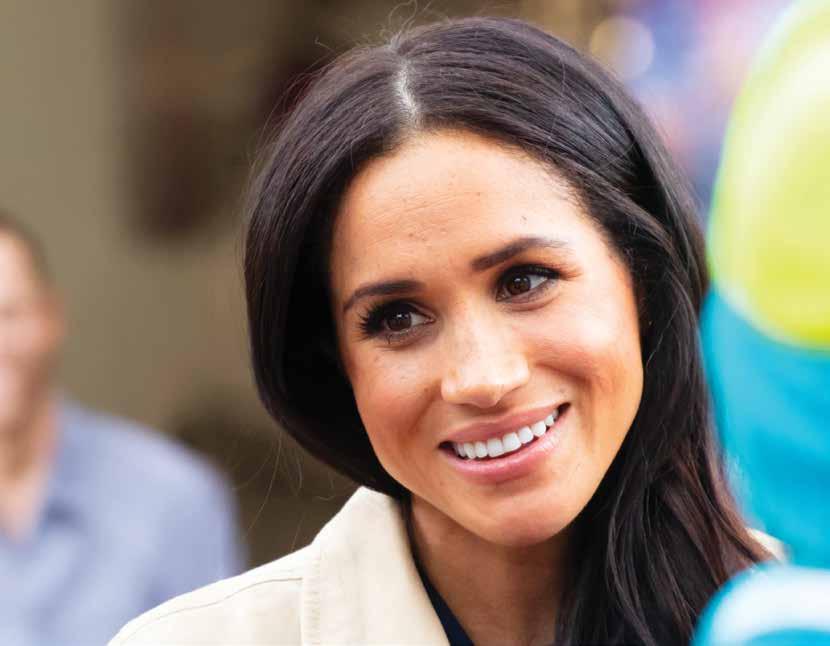
LEARNING FROM PRECEDENT
High-profile rebrands are not new. Some succeed by aligning closely with a figure’s authentic identity and passions. Others falter when the connection feels opportunistic. Gwyneth Paltrow’s Goop, for example, built its market position through a clear alignment with her wellness persona, sustained by a steady stream of content that reinforced its ethos. Conversely, other celebrity ventures have stumbled when the product offering appeared disconnected from the founder’s core narrative or when initial hype was not followed by substance.
In the lifestyle sector, authenticity is paramount. Consumers expect more than association; they expect alignment between the brand’s stated values and its tangible outputs. Without this, celebrity-led ventures can quickly become perceived as vanity projects.
DEFINING SUBSTANCE OVER IMAGE
For As Ever to succeed, it must offer genuine consumer value beyond Meghan Markle’s name recognition. This could mean a commitment to artisanal craftsmanship, a focus on sustainability, or a distinct lifestyle philosophy. Whatever the approach, the brand’s point of differentiation must be clear and consistently communicated.
Professional brand strategists will play a pivotal role here — shaping a coherent identity, anticipating reputational risks, and ensuring that every public touchpoint reinforces the brand story. With Meghan’s public image subject to intense dissection, strategic clarity is not optional; it is a prerequisite for longevity.
THE NETFLIX EFFECT
If leveraged effectively, Netflix could serve as a brand amplifier rather than a shield. The right format — whether a behind-the-scenes documentary, a thematic lifestyle series, or even a philanthropic project — could provide the emotional narrative that As Ever needs to embed itself in the public imagination. It could humanise Meghan’s entrepreneurial journey, giving audiences context for the rebrand while reinforcing the values underpinning it.
Yet Netflix cannot compensate for weak brand fundamentals. Even the most visually polished content will struggle to rehabilitate a concept that lacks clear direction or consumer relevance. The synergy must be mutual: As Ever must give Netflix compelling content, and Netflix must give As Ever an emotive, credible stage.
The rebrand from American Riviera Orchard to As Ever represents more than a change in visual identity; it is a strategic fork in the road. It hints at a shift towards something more personal, perhaps less tied to geographic or aspirational imagery and more focused on enduring principles. Whether this pivot will succeed depends on the convergence of three key factors:
• The authenticity and quality of any Netflix content associated with the brand.
• The clarity and credibility of As Ever’s standalone proposition.
• Meghan Markle’s ability to articulate a vision that resonates across diverse audiences.
If executed with precision, As Ever could transcend the polarised debate surrounding the Sussexes, carving a distinct space in the crowded lifestyle sector. If mishandled, it risks becoming another fleeting chapter in a narrative dominated by perception rather than product.
The gamble is substantial, but so is the potential reward. The coming months will reveal whether this understated name signals the start of a lasting brand legacy — or a brief interlude before the next reinvention. i
A PIVOTAL MOMENT IN THE SUSSEX STORY
ANNOUNCING AWARDS 2025
SUMMER HIGHLIGHTS
Once again CFI.co brings you reports of individuals and organisations that our readers and the judging panel consider worthy of special recognition. We hope you find our short profiles interesting and informative.
All the winners announced below were nominated by CFI.co audiences and
then shortlisted for further consideration by the panel. Our research team gathered additional information to help reach a final decision. In many cases, senior members of nominee management teams provided the judges with a personal view of what sets their companies and institutions apart from the competition.
As world economies converge we are coming across many inspirational individuals and organisations from developing as well as developed markets - and everyone can learn something from them. If you have been particularly impressed by an individual or organisation’s performance please visit our award pages at www.cfi.co and nominate.
CLIFFORD CHANCE LLP: LEADING BANKING & FINANCE LEGAL TEAM UK 2025

Clifford Chance LLP stands as a preeminent force in the UK legal market, with a globally respected banking and finance team renowned for its technical excellence, commercial acumen, and cross-border capabilities. The firm advises a diverse array of clients including leading financial institutions, corporates, sponsors, and government bodies on the most complex and high-value transactions across the debt and equity finance spectrum. Its UK practice plays a central role in structuring innovative solutions across leveraged finance, acquisition finance, real estate finance, restructuring, and
sustainable finance. Clifford Chance consistently demonstrates leadership in sustainable finance, helping clients navigate the transition to netzero through the development of green, social, and sustainability-linked financing frameworks. Its lawyers are highly regarded for their strategic insight and ability to anticipate regulatory developments, offering tailored legal advice that integrates global context and expertise. The firm’s collaborative, multidisciplinary approach ensures seamless delivery across jurisdictions, supported by legal technology and a culture of continuous learning. Clifford Chance’s
commitment to diversity, equity, and inclusion further strengthens its appeal to clients seeking forward-thinking, socially responsible legal partners. The team is also active in pro bono work and thought leadership, contributing significantly to the advancement of the legal profession and financial regulation. Its longstanding reputation for excellence is underpinned by consistent recognition in legal directories and peer reviews. The Capital Finance International (CFI.co) Judging Panel congratulates Clifford Chance LLP on winning the 2025 award for Leading Banking & Finance Legal Team (UK).
ARABIAN GULF FUND: EXCELLENCE IN PRIVATE CREDIT AND FIXED INCOME INVESTMENTS GLOBAL 2025

Arabian Gulf Fund has established itself as a discerning and disciplined participant in the global private credit and fixed income investment landscape. With roots that trace back to Wall Street, the firm's leadership brings four decades of experience in clientfocused financial services, particularly catering to high-net-worth individuals through bespoke alternative investment strategies. The firm’s origins in Dubai reflect a strategic attempt to unlock mid-market opportunities in regions traditionally constrained by access to finance. Although initial efforts centred around oil-linked
financial instruments and localised private equity, the firm pivoted toward the United States, concentrating on a lean, client-centric model that emphasises selectivity and control. Arabian Gulf Fund’s operations are characterised by deep due diligence, long-standing relationships, and a commitment to growth capital over speculative ventures. Its philosophy reflects a preference for established business models, deploying capital with terms that balance risk and reward while retaining alignment with investor interests. The firm has recognised emerging trends, including the integration of Qualified Opportunity Zones
HANDELSBANKEN: OUTSTANDING COMMUNITY ENGAGEMENT SWEDEN 2025
into its portfolio and leveraging technology for sourcing—while maintaining a people-first approach. Most notably, Arabian Gulf Fund’s focus on consolidating auto dealerships in the United States underlines analytical rigour and insight. By identifying resilient, multi-channel revenue businesses with significant arbitrage between public and private valuations, the firm continues to deliver stable, long-term returns. CFI.co Judging Panel congratulates Arabian Gulf Fund on winning the 2025 award for Excellence in Private Credit and Fixed Income Investments (Global).
Handelsbanken, one of Sweden’s most respected banking institutions, has built its reputation on a decentralised model that empowers local branches to make decisions based on a deep understanding of their communities. This approach fosters strong, longterm relationships with customers and enables the bank to respond quickly and effectively to local needs. Handelsbanken’s commitment to sustainability and social responsibility is integral to its operations, with particular emphasis placed on financial inclusion, education, and environmental stewardship. The bank actively supports initiatives that promote economic
resilience, including partnerships with non-profit organisations, local enterprises, and educational institutions. It contributes to social cohesion through inclusive employment practices, financial literacy programmes, and targeted support for vulnerable groups. Handelsbanken integrates ESG considerations across its lending and investment portfolios, reflecting its belief in responsible banking as a driver of positive societal change. In addition to reducing its own carbon footprint, the bank encourages customers to adopt sustainable financial behaviours through dedicated advisory services and green financial products. Its transparent governance, prudent
risk management, and emphasis on long-term value creation underpin the trust it enjoys across Swedish society. Handelsbanken’s community engagement is not an ancillary function but a core expression of its business philosophy—an approach that continues to yield tangible benefits for customers, communities, and shareholders alike. The bank also prioritises ethical conduct, transparency, and consistent dialogue with stakeholders at every organisational level. The Capital Finance International (CFI.co) Judging Panel congratulates Handelsbanken on winning the 2025 award for Outstanding Community Engagement (Sweden).
JONES DAY: OUTSTANDING DISPUTE RESOLUTION TEAM BELGIUM 2025
Jones Day has established a strong reputation in Belgium for its highly effective and strategically sophisticated dispute resolution practice, serving clients across a wide spectrum of industries. Operating from its Brussels office, the firm brings together global reach and local insight, offering comprehensive support in litigation, arbitration, and regulatory enforcement matters. The team is distinguished by its deep experience in crossborder disputes, competition litigation, and complex commercial conflicts, particularly those involving EU institutions and multinational corporations. Jones Day’s Belgian dispute resolution team includes multilingual lawyers with extensive knowledge of European legal frameworks, which enables the firm to provide precise, context-aware advice to clients navigating contentious regulatory or contractual challenges. The practice is also notable for its expertise in class actions, intellectual property disputes, and investor-
state arbitration. Leveraging its global footprint, Jones Day offers seamless coordination across jurisdictions, ensuring clients receive consistent, high-calibre representation in multijurisdictional cases. The team’s approach is characterised by rigorous preparation, agility in strategy, and a commitment to achieving practical, business-aligned outcomes. With a strong emphasis on ethical advocacy and client service, Jones Day continues to act as a trusted adviser in high-stakes, reputationally sensitive matters. Its contributions to legal scholarship, thought leadership, training, and further highlight the firm’s leadership in the field. The practice remains adaptive to global legal trends, ensuring clients benefit from timely, forward-thinking strategies. The Capital Finance International (CFI.co) Judging Panel congratulates Jones Day on winning the 2025 award for Outstanding Dispute Resolution Team (Belgium).

CUBE LABS: CHAMPION OF SCALABLE MARKET-READY HEALTHCARE VENTURES ITALY 2025

Cube Labs is redefining the intersection of science and entrepreneurship through its venture-building model, designed to create scalable, market-ready healthcare companies. Founded by a fifth-generation medical doctor, the company transitions cuttingedge academic research into viable businesses, bypassing traditional incubator and venture capital routes. As the first and only listed venture builder in Italy, Cube Labs joined the Euronext Growth Milan Pro segment in March 2023, achieving a market capitalisation of €34.1mn. As of March 31, 2025, the company's market capitalisation has increased to €42.7mn with a share price of €2.24, reflecting a growth of 12,5% since its IPO. According to Websim Corporate, the long-
term outlook (2030 and beyond) suggests a fair value per share of €16.22, representing a 7.51x upside compared to current market prices. Its end-to-end approach involves full ownership and operational control of portfolio companies, currently numbering 17, and includes partnerships with over 700 researchers and 88 academic institutions. The firm’s strategy centres on risk-bearing company creation, early-stage capital provision, and support in intellectual property, regulatory affairs, and commercialisation. With a strong emphasis on democratising healthcare, Cube Labs blends science, artificial intelligence, and fintech to broaden access and reduce barriers across both primary and emerging markets. Its AI capabilities
> BAWAG GROUP AG: BEST BANKING GROUP GOVERNANCE DACH 2025
BAWAG Group AG has demonstrated a disciplined and effective governance structure that has underpinned its strategic expansion and operational excellence across the DACH region. The company executed two major acquisitionsKnab Bank in the Netherlands, which brought with it a Dutch mortgage portfolio of €12.7bn, and Barclays Consumer Bank Europe in Hamburg, with both deals finalised in November and February respectively. These acquisitions, particularly Knab Bank's focus on serving selfemployed SMEs through digital-first solutions, have broadened BAWAG's market reach and bolstered its customer base from 2.1 million to over 4 million globally. The bank remains steadfast in its emphasis on seamless integration, reflecting a prudent approach to growth and risk management. Financially, BAWAG reported €760mn in net profit, enabling a dividend
increase from €5.00 to €5.50 per share-an indicator of sound capital management and shareholder value creation. Its strong governance framework is further evidenced by a return on tangible common equity that has increased to 26 percent, solidifying its status as one of the most profitable and resilient banks in the region. The company's digital focus, robust capital position, and customer-centric acquisition strategy illustrate a comprehensive governance model that balances innovation with accountability and long-term sustainability goals and regulatory standards. These factors collectively affirm BAWAG Group AG's leadership in banking governance, aligning stakeholder interests while navigating complex regulatory environments. CFI.co Judging Panel congratulates BAWAG Group AG on winning the 2025 award for Best Banking Group Governance (DACH).
serve as core drivers of productivity rather than auxiliary tools, reflecting a forward-thinking stance on the role of hybridised technologies in life sciences. The company’s global expansion spans Europe, North America, and Asia, underpinned by strategic alliances, including with India’s Modi Global Enterprises. Cube Labs has generated notable portfolio value increases and is recognised for its contribution to healthcare commercialisation. Transparent capital sourcing, ESG principles, and a focus on accessibility place the company at the forefront of systemic healthcare innovation. CFI.co Judging Panel congratulates Cube Labs on winning the 2025 award for Champion of Scalable Market-Ready Healthcare Ventures (Italy).
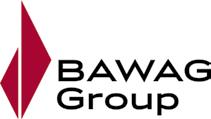
Allianz Polska has demonstrated consistent excellence in the Polish insurance market through its comprehensive and client-focused life insurance offerings. As part of the global Allianz Group, the company leverages international expertise while adapting to the specific needs of Polish customers, combining financial strength with local insight.
Allianz Polska offers a broad range of life insurance products, including risk protection, savings, and investment-linked policies, designed to provide security and long-term value for individuals and families. The company’s success is underpinned by a strong commitment to customer service,

digital innovation, and responsible business practices. Allianz Polska has invested significantly in digital transformation, streamlining access to policies, claims, and personalised advice through user-friendly platforms and mobile solutions. Its transparent communication and consultative sales model ensure customers are well-informed and supported at every stage of the policy lifecycle.
The firm’s emphasis on sustainability is reflected in its product development and investment strategies, aligning with ESG principles to support clients' values and long-term financial goals.
Allianz Polska also places great importance on
financial education and awareness, promoting informed decision-making among consumers and strengthening market resilience. Its performance in customer satisfaction surveys and industry rankings reinforces its reputation as a reliable, forward-thinking insurer. With a solid foundation in risk management, innovation, and ethical standards, Allianz Polska continues to set new benchmarks in the competitive life insurance sector. The Capital Finance International (CFI.co) Judging Panel congratulates Allianz Polska on winning the 2025 award for Outstanding Life Insurance Services (Poland).

OF GLOBAL
eCapital Corp has distinguished itself as a transformative force within the global SME financing landscape, addressing critical gaps left by traditional banking institutions. With a twodecade operational history, the company has, over the past five years, concentrated on scaling its impact through technological investment, enabling it to serve a broader spectrum of small and medium-sized enterprises across more than 80 industries. By integrating advanced technologies including artificial intelligence and machine learning, eCapital delivers real-time financial solutions precisely at the moment SMEs generate
revenue-generating assets, such as accounts receivable. Its platform evaluates funding requests in seconds, using proprietary algorithms to assess risk and automate funding, thereby reducing delays and operational inefficiencies. This capability has enabled the company to have served over 42,000 clients across dynamic economic sectors. eCapital’s strategic expansion into embedded finance ecosystems across multiple continents reflects its commitment to delivering universally applicable solutions that transcend regional financial frameworks and localised barriers. From transportation and staffing to healthcare and
manufacturing, the company provides tailored support in industries heavily dependent on timely working capital. Its digital-first model ensures SMEs have immediate access to critical liquidity, enabling sustained growth, resilience, and competitiveness in challenging markets. The company's operational footprint, spanning the United Kingdom, United States and Canada underscores its role in fostering inclusive economic development and empowering entrepreneurial ecosystems. The CFI.co Judging Panel congratulates eCapital Corp on winning the 2025 award for Champion of Global SME Funding Access (USA).
BANCO AZTECA: CHAMPION OF FINANCIAL LITERACY AND INCLUSION MEXICO 2025

Banco Azteca continues to stand as a pillar of financial inclusion in Mexico, serving more than 23 million clients through a network of over 2,000 branches and expanding portfolio of digital services. Founded on the conviction that every Mexican family deserves access to simple, reliable financial tools, Banco Azteca operates with a sense of duty that transcends commercial interests. It has earned national trust by consistently providing service in the most challenging conditions.
In parallel to its operational reach, Banco Azteca maintains a robust commitment to financial literacy. Through its flagship programme Aprende y Crece, the bank delivered specialised digital courses, in-person workshops, educational webinars and multimedia campaigns across Mexico, reaching over 1.68 million beneficiaries in 2024 alone. The initiative generated more
than 152 million direct impacts through digital platforms, branch activations, and partnerships with universities, public institutions and consulates. Content focused on essential topics such as savings, credit, fraud prevention, and digital financial habits, with a particular emphasis on women, youth and senior citizens.
During the COVID-19 pandemic, Banco Azteca remained open daily while others closed, supporting its customer base of informal workers and self-employed earners. Loan activity not only continued but expanded by over 40 percent, with more than 96 percent of clients maintaining payments without government support.
In the wake of Hurricane Otis in 2023, Banco Azteca reopened six Acapulco branches within nine days, becoming the first financial institution to restore access in the devastated city.
The bank also ensured community-wide access to its ATM network, waiving fees and maintaining operations amid power outages through generator support. This response reflected more than operational strength; it underscored Banco Azteca’s social purpose and commitment to communities in moments of greatest need.
This culture of resilience is not reactive but foundational, embedded in the bank’s practices and long-term strategy. By delivering consistent, community-based financial services, Banco Azteca facilitates mobility, stability, and recovery across urban and rural areas alike. It stands apart through permanence and purpose, positioning itself as a true instrument of social and economic resilience. CFI.co Judging Panel congratulates Banco Azteca on winning the 2025 award for Champion of Financial Literacy and Inclusion (Mexico).
BROADSPAN CAPITAL: CHAMPION OF CROSS-BORDER DEAL EXECUTION LATAM 2025

BroadSpan Capital has built a distinguished reputation as a premier independent investment banking firm focused on delivering sophisticated cross-border advisory solutions throughout Latin America and the Caribbean. Founded nearly 25 years ago, the firm has strategically positioned itself with a regional footprint, including offices in Miami, Mexico, Colombia, and Brazil, supported by a network of partner firms across 17 countries. This connectivity enables BroadSpan to offer clients boutiquestyle attention while replicating the execution capabilities of larger financial institutions. With a team composed of former senior bankers from major global firms, BroadSpan provides
a level of execution expertise and senior-level involvement that sets it apart from mid-sized competitors. The firm has executed recent landmark transactions, including the sale of a regional food service distribution business to a leading US group, the sale of a Brazilian logistics company to a Danish acquirer, and the restructuring of an international syndicated loan related to a power project in Peru. BroadSpan's client-centric model places emphasis on cross-border reach, evidenced by its ability to engage potential buyers and investors across diverse markets. Beyond M&A advisory, the firm continues to manage one of the leading restructuring advisory practices
BANORTE: SUPERIOR CORPORATE BANKING SERVICES MEXICO 2025
Banorte, one of Mexico’s leading financial institutions, plays a pivotal role in supporting corporate clients through a comprehensive suite of tailored banking solutions. As the only major Mexican bank with full local ownership, Banorte leverages its deep national presence and market insight to serve businesses of all sizes, from domestic enterprises to multinational corporations operating in the country. Its corporate banking division offers a wide array of services including structured finance, cash management, trade finance, treasury solutions, and sustainable financing options. Banorte distinguishes itself through
a consultative approach, where dedicated relationship managers work closely with clients to design strategies that align with their operational needs and growth ambitions. Technological innovation underpins the bank’s service model, with advanced digital platforms enabling seamless transaction processing, real-time account monitoring, and integration with systems. Banorte also stands out for its commitment to ESG principles, incorporating sustainability metrics into credit assessments and promoting green financing instruments. The bank has invested significantly in cybersecurity and risk management to ensure secure, resilient

RIMAC Seguros has earned distinction in Peru’s insurance sector through its comprehensive, innovative, and client-oriented approach to life insurance services. As the country's leading insurer with over 130 years of experience, RIMAC combines tradition and trust with strategies that address evolving customer expectations and societal needs. The company offers a robust portfolio of life insurance products, including individual and group policies, savings plans, and investment-linked solutions tailored to diverse income levels and life stages. RIMAC’s customerfirst philosophy is reflected in its user-friendly
digital platforms, streamlined claims processing, and commitment to financial education, which empowers clients to make informed decisions about financial protection. The firm actively promotes wellness and preventative care through initiatives that integrate life insurance with health services, creating value and engagement. Its investment in digital innovation and data analytics enhances risk management, underwriting, and personalisation, ensuring responsiveness in a rapidly changing market. Sustainability is embedded in its operational model, with products and investments aligned with ESG principles and
in the region, and is expanding its asset management offerings as well. Strategically, BroadSpan is investing in major markets such as Brazil and Mexico, while also capitalizing on growth opportunities in countries like Ecuador. BroadSpan’s active involvement in sovereign restructuring across the region combined with specialized transaction capabilities has positioned the firm as a resource for multilateral and development finance institutions, as well as private corporations. The Capital Finance International (CFI.co) judging panel congratulates BroadSpan Capital on winning the 2025 award for Champion of Cross-Border Deal Execution (LATAM).
support for its corporate clients in an evolving financial landscape. Its disciplined governance, financial strength, and client-focused culture have reinforced Banorte’s reputation as a trusted partner for corporate growth in Mexico. Continuous investment in talent development and data-driven decision-making further enhances its proposition. Banorte’s corporate banking arm exemplifies reliability, innovation, and strategic foresight in a highly dynamic market. The Capital Finance International (CFI. co) Judging Panel congratulates Banorte on winning the 2025 award for Superior Corporate Banking Services (Mexico).
impact goals. RIMAC’s strong market position is reinforced by consistently high ratings in customer satisfaction, financial strength, and governance. The company is also a recognised leader in talent development and inclusion, fostering a culture of excellence and shared purpose. With its dedication to trust, innovation, and client wellbeing, RIMAC Seguros continues to set benchmarks for life insurance in Peru and beyond. The Capital Finance International (CFI.co) Judging Panel congratulates RIMAC Seguros on winning the 2025 award for Outstanding Life Insurance Services (Peru).
> RIMAC SEGUROS: OUTSTANDING LIFE INSURANCE SERVICES PERU 2025
CRC Credit Bureau Ltd reaffirmed its position as Nigeria's premier credit information provider throughout 2024 by spearheading a series of impactful developments that enhanced both institutional capacity and market outreach. Central to its achievements was the launch of CRC Profile360, a transformative platform delivering comprehensive borrower insights, including bank statement analysis, credit report, credit scores, and dud cheque status, all accessible in a single report via web and API for enhanced decision-making. The rollout of its Account Aggregator platform further empowered underserved borrowers through consent-based data access, aligned with Open Banking principles. Through its innovative Reseller as a Service (RAAS) model, CRC enabled third parties to integrate key offerings-such as credit reports and alertsthus expanding its footprint and customer self-service options. Significant infrastructure upgrades, including advanced network and
AFRICAN
Sango Capital is a specialist investment firm dedicated to mid-market private equity opportunities across Africa, with a strong emphasis on long-term value creation and commercial excellence. The firm’s initial vision focused on unlocking value in a space where capital supplydemand dynamics favour investors and where domestic growth stories offer more resilient and diversified return streams than globally correlated exposures. Over the past decade, Sango Capital has evolved from a hybrid model—investing in both funds and primary companies—into a comprehensive platform that now includes secondary investments, technology-driven assets, and private credit strategies. It was the first of its kind to introduce high-quality private institutional capital into the African private equity space, and it has since built a reputation for being a preferred partner for globally minded, commercially
storage systems, were completed to ensure scalability and performance. Meanwhile, core application optimization improved operational efficiency and user experience. CRC also introduced automation tools for superior data quality and broadened its data sources by collaborating with student loan agencies, non-bank institutions, and BNPL lenders. Its commitment to financial education and stakeholder engagement was evident through the successful hosting of its CRC Finance and Credit Conference and dedicated webinars on credit awareness. Additionally, CRC's revitalized customer engagement framework ensured prompt issue resolution and strengthened stakeholder confidence. These strategic advancements illustrate CRC's unwavering dedication to innovation, financial inclusion, and excellence in credit risk management. CFl.co Judging Panel congratulates CRC Credit Bureau Ltd on winning the 2025 award for Best Credit Bureau (Nigeria).

focused investors. The firm maintains a dual strategy: backing top-tier fund managers while simultaneously co-investing directly, often in collaboration with regional partners. Sango Capital has also launched a permanent capital vehicle targeting upper mid-market opportunities, with an aim to build globally dominant platforms capable of scaling to valuations exceeding $1bn each. In parallel, it remains a pioneer in structuring secondary transactions, providing liquidity solutions to limited partners and general partners alike. This effort ensures a healthier and more dynamic middle market ecosystem. The firm continues to pursue category-defining technologyenabled growth assets that complement and disrupt the mid-market space. CFI.co Judging Panel congratulates Sango Capital on winning the 2025 award for Leader in African Mid-Market Private Equity (Africa).
BANK ONE LTD: BEST CUSTODIAN BANK INDIAN OCEAN 2025
As a distinguished provider of securities services, Bank One leverages a robust open architecture model that ensures neutrality and eliminates product conflicts. This approach has enabled the bank to foster strong, enduring partnerships with external asset managers and regional banks across Africa. With a B2B-centric strategy, Bank One serves over 20+ financial institutions, delivering bespoke custodial solutions backed by direct and responsive client service. The bank has made significant investments in digital infrastructure, enabling a fully reconciled, near-instantaneous reporting environment and delivering real-time valuation reports via integrated market feeds, including Bloomberg. Beyond custody, Bank One offers a complementary
suite of services, including treasury solutions and support for African currencies, creating added value for its institutional clients. Its deep presence across Africa, supported by its shareholders’ regional networks and on-theground teams in Kenya, Rwanda, Tanzania, and Uganda, enhances both client proximity and market responsiveness. Bank One has a direct relationship with Euroclear, a unique capability, enabling cost-efficient and strengthening its competitive positioning. The bank’s growing assets under custody are a testament to its sustained growth and client trust. CFI.co congratulates Bank One Ltd on this remarkable achievement and its continued contribution to financial infrastructure development in the Indian Ocean region.
SANGO CAPITAL: LEADER IN

BEST CUSTOMER SUPPORT GLOBAL 2025
XMTrading is an internationally recognised brokerage renowned for providing exceptional customer service tailored specifically to the needs of traders worldwide. With a robust online platform accessible via its intuitive website, XMTrading offers comprehensive trading services, including forex, commodities, equity indices, precious metals and energies, available to clients across diverse markets. Dedicated to cultivating customer loyalty, the brokerage operates round-the-clock multilingual customer support, empowering traders through immediate and effective assistance regardless of geographic location or time zone. XMTrading prioritises prompt responses, ensuring queries and technical
issues are addressed swiftly, enabling traders to continue uninterrupted trading activities. The firm has invested significantly in advanced training programmes for its customer service teams, consistently enhancing the quality of client interactions and ensuring personalised support tailored to individual trading styles and requirements. Furthermore, XMTrading emphasises transparency and reliability, implementing stringent security protocols that safeguard customer accounts and sensitive information, thereby fostering trust and confidence among its global client base. By continually refining its service approach and incorporating client feedback directly into operational
OUTSTANDING FOREX BROKER ASIA 2025
XMTrading, established as a prominent brokerage, provides extensive access to global forex markets, catering to retail and institutional clients with precision and reliability. The company has cultivated a distinguished reputation by offering comprehensive trading services, including forex, commodities, indices, and equity CFDs, facilitated through advanced, user-friendly trading platforms.
XMTrading places significant emphasis on client education, consistently delivering detailed resources such as webinars, market analyses, and tailored tutorials, empowering traders of all experience levels. Notably, it adheres stringently to transparent operational policies,
implementing rigorous regulatory compliance standards to maintain investor confidence and safeguard client funds through segregated accounts with renowned financial institutions.
XMTrading’s technology-driven infrastructure ensures rapid execution speeds and minimal latency, vital for traders seeking optimal trading conditions and efficient risk management. Furthermore, its multilingual customer support operates continuously, reflecting the company's commitment to client satisfaction and service excellence. Demonstrating strong market leadership, the company continues to innovate its trading instruments and enhance platform functionality, keeping pace with
MOST TRANSPARENT BROKER GLOBAL 2025
XMTrading has distinguished itself internationally by championing transparency and ethical practices within the online brokerage sector. The company provides clients across the globe with unrestricted access to a diverse array of financial instruments, including currencies, commodities, stocks, and indices, underpinned by clear and straightforward trading conditions. XMTrading emphasises transparency through its robust operational frameworks, offering clients detailed insights into pricing structures, fee schedules, and execution speeds without hidden costs or ambiguous terms. It utilises advanced technological infrastructure to deliver real-time reporting, swift trade execution,
and comprehensive transaction disclosures, enabling traders to operate with confidence and informed decision-making. Compliance with stringent regulatory standards further reinforces XMTrading's transparent reputation, promoting fairness and safeguarding investor interests. The company also actively engages in investor education, empowering clients with comprehensive resources and training materials designed to enhance financial literacy and transparency awareness. Its commitment to openness is reflected in rigorous internal audits and external certifications, ensuring continuous adherence to industry-leading transparency benchmarks. The brokerage's
improvements, XMTrading exemplifies a deeprooted commitment to customer satisfaction and excellence. This proactive approach, combined with frequent client satisfaction assessments and continuous upgrades to digital communication channels, highlights the firm's determination to exceed trader expectations consistently. Through detailed market resources, educational initiatives and dedicated support guidance, XMTrading demonstrates sustained commitment towards trader success, delivering measurable value across all customer support channels globally. The CFI.co Judging Panel congratulates XMTrading on winning the 2025 award for Best Customer Support (Global).
evolving market demands. With an unwavering focus on delivering superior service, robust trading infrastructure, and an exceptional client experience, XMTrading sets a benchmark within Asia’s competitive forex brokerage landscape. Its dynamic business model prioritises continuous improvement, reinforcing trust among a growing clientele and further cementing the brokerage’s established position as a reliable partner for traders across Asia’s increasingly sophisticated financial markets by consistently exceeding industry expectations and delivering measurable client outcomes. CFI.co Judging Panel congratulates XMTrading on winning the 2025 award for Outstanding Forex Broker Asia (Asia).
customer-centric ethos, combined with an uncompromising dedication to transparency, positions it as a trusted choice for both novice and experienced investors. XMTrading regularly solicits feedback from its client base, integrating constructive suggestions into practice, thus continually enhancing transparency and delivering superior client outcomes. Moreover, proactive communication strategies ensure information clarity and accountability throughout operations. The consistent reliability and clarity of XMTrading’s service provision affirm its status as an industry exemplar. CFI.co Judging Panel congratulates XMTrading on winning the 2025 award for Most Transparent Broker (Global).
Vistra is a leading provider of essential business services that helps organisations to invest, grow and operate efficiently and compliantly across the world. With a presence in over 50 markets and a network of trusted affiliates in other locations, Vistra provides expert guidance in tax, financial accounting, legal entity management, payroll and other services related to cross-border expansion. The company’s approach is distinguished by its ability to deliver a streamlined client experience, integrating advanced technology platforms with deep in-market expertise. Its digital solutions, including its proprietary Global Expansion Platform and in-built global AI compliance advisor, launched in March 2025, , enhance operational efficiency and compliance for clients operating across multiple jurisdictions. The company’s strategic expansion, including its 2023 combination with Tricor and 2024 acquisition of Phoenix American Fund Administration and Transfer Agency and 2025 acquisition of iiPay, has further strengthened its capabilities, particularly in the Asia-Pacific and
LegalOne Global Limited has distinguished itself as an independent global ratings and research company, providing support to senior executives, general counsel, and corporate decision-makers across sectors. Through tailored assessments and exclusive evaluations, LegalOne delivers insights into commercial transactions, dispute resolutions, and intellectual property matters, ensuring clients are equipped with intelligence to drive informed outcomes. The company’s commitment to accuracy, transparency, and sustainability is evidenced by adherence to internationally recognised standards such as ISO 9001:2015 and alignment with the International Capital Market Association’s (ICMA) Code of Conduct for ESG Ratings and Data Product Providers. LegalOne’s participation in initiatives like the Business Sector Integrity Charter and the ESG Pledge underscores its role as a
Americas regions. Vistra’s mission is to become the global business operating system, removing administrative friction and allowing clients to focus on core objectives. By continuously investing in technology, people, and service optimisation, Vistra is redefining the industry standard for international business operations. Its commitment to innovation includes AI-powered compliance solutions and automation-driven process enhancements, ensuring clients receive proactive, data-driven insights to navigate complex regulatory landscapes. The firm also prioritises talent development, fostering a high-calibre team of professionals across key global markets to deliver unparalleled expertise and reliability. Vistra’s ability to simplify international expansion enables organisations to operate across borders with ease, making global business operations feel frictionless and efficient. The CFI.co Judging Panel congratulates Vistra on winning the 2025 award for Outstanding Contribution to Cross-Border Business Expansion (Global).
principled industry leader. As a trusted source of ESG data and analysis, it continues to shape responsible corporate behaviour on a global scale. By integrating rigorous methodology with clientdriven insight, LegalOne positions itself as a reference for high-quality research and a catalyst for ethical transformation in business practices. Its suite of services and thought leadership have cemented its standing as an authority in both ratings and business intelligence, fostering resilience, innovation, and excellence across markets. The organisation’s engagement with regulatory developments and response to trends highlight its role as a forward-thinking pioneer with a focus on long-term value creation. CFI.co Judging Panel congratulates LegalOne on winning the 2025 award for Outstanding Independent Global Ratings Agency (Global) and the 2025 award for Global Business Intelligence Champion.
NEPAL SBI BANK: CHAMPION IN MODERN BANKING INNOVATION NEPAL 2025
Nepal SBI Bank, established in July 1993 as the first Indo-Nepal joint venture, has emerged as a transformative force in the country’s banking sector through a focus on digital integration and customercentric innovation. With the State Bank of India holding a 55 percent stake, and the remainder shared between Nepal’s Employee Provident Fund and the general public, the bank has built a trusted reputation among over 1.3 million deposit customers. Its expansive presence across 51 districts is supported by a suite of services including internet and mobile banking, SMS banking, and QR merchant acquiring. Nepal SBI Bank has introduced pioneering initiatives, notably becoming the first financial institution in Nepal to enable RuPay card acceptance at ATMs and POS terminals, supporting digitalisation and boosting tourism. Its flagship mobile application, YONO Nepal SBI,
offers a seamless omni-channel banking experience integrating services such as investment, insurance, e-commerce, and interfaces. The platform stands out for its security infrastructure, encompassing encryption, device integrity checks, and authentication validation. These features, combined with digital account opening, cardless withdrawal, and spend analysis tools, have positioned the bank at the forefront of technological adoption in Nepalese banking. Strategic collaborations with international banks and domestic financial institutions further enhance its offerings in trade finance and remittance. The bank’s investment in human capital, infrastructure, and automation underscores its commitment to sustainable progress.
CFI.co Judging Panel congratulates Nepal SBI Bank on winning the 2025 award for Champion in Modern Banking Innovation (Nepal).
ABF (AN BINH SECURITIES INVESTMENT FUND MANAGEMENT): VISIONARY IN CAPITAL GROWTH AND INVESTOR-CENTRIC SOLUTIONS VIETNAM 2025

ABF (An Binh Securities Investment Fund Management), headquartered in Vietnam, has become a notable force in the country's asset management industry. Although its private member fund ABEIF was established in 2017, ABF began focusing on fund management operations in 2020. Since then, it has achieved steady net asset value growth per certificate and scaled its presence, now ranking among the top five fund management entities in Vietnam. It operates the country’s largest private fund and the second-largest bond fund, a testament to
strategic positioning and capital stewardship. ABF’s success is grounded in a strong understanding of its clientele and focus on underserved segments. It has helped broaden investor participation by tailoring educational efforts and investment products to audiences unfamiliar with structured offerings. Amid economic challenges, including the COVID-19 pandemic and the 2022 bond market crisis, ABF showed resilience. Its funds weathered downturns and maintained stable performance. The firm credits this to its flexible investment style, investor engagement,
and robust distribution network. Looking ahead, ABF plans to sustain growth through innovation. Following the launch of the ABFVN Diamond ETF in June 2024, it is preparing to introduce a stock mutual fund and pension fund to meet investor demand. With support from governmental reform and a shifting investor mindset towards professional fund management, ABF is wellpositioned for expansion. CFI.co Judging Panel congratulates ABF on winning the 2025 award for Visionary in Capital Growth and InvestorCentric Solutions (Vietnam).
FBS MARKETS INC: EXCELLENCE IN SOCIAL RESPONSIBILITY WITHIN THE FOREX INDUSTRY ASIA 2025

FBS has demonstrated unwavering commitment to social responsibility through a comprehensive programme of philanthropic and community-focused initiatives across Asia and beyond. In 2024, the company delivered 16 CSR projects in seven countries, positively impacting over 14,000 individuals. Its efforts spanned education, humanitarian aid, and disaster relief, underscoring FBS’s dedication to creating tangible, long-term benefits for communities. In South Africa, the company partnered with Education Africa to enhance learning conditions at Masibambane College,
while in Indonesia, FBS supported the Peduli Anak Foundation by upgrading classroom environments. In Malaysia, FBS collaborated with SUKA Society to resource six preschools for Orang Asli children, enhancing access to early education. FBS also addressed urgent humanitarian needs; in Thailand, its partnership with Save the Children benefitted more than 8,500 refugee children, and following severe flooding in the country’s north, FBS provided aid to over 430 affected households. Seasonal campaigns such as the Ramadan initiative in Malaysia and the Christmas Gift-A-Meal
programme, run with the Dignity for Children Foundation, brought comfort to over 1,250 families. Collectively, these efforts were backed by donations exceeding $50,000 and implemented in cooperation with seven organisations. FBS captured these moments in a video to raise awareness and encourage participation. The company’s approach to CSR reflects a growing ethos of engagement, firmly embedded in its values. CFI.co Judging Panel congratulates FBS Markets Inc on winning the 2025 award for Excellence in Social Responsibility within the Forex Industry (Asia).
> BSE LTD: CHAMPIONS OF CAPITAL MARKET INNOVATION AND EFFICIENCY ASIA 2025

Founded over 150 years ago, BSE Ltd has established itself as a cornerstone of India's capital markets, recently marking its 150th anniversary with record-breaking achievements. The exchange reported revenue of $383m for the financial year ending March 2025, nearly doubling the $193m recorded the previous year. Net profit rose from $49m to $157m, representing an extraordinary 220 percent increase, with profit margins expanding to 40 percent—its highest ever. This growth is attributed to strategic expansion across market
segments, particularly equity derivatives, where revenue surged sevenfold to $166m and market share rose from 8 to 25 percent. Client participation doubled to 7m users, and intermediary partnerships grew from 250 to 550. BSE also celebrated a rise in institutional investor confidence, with foreign ownership increasing from 8 to 40 percent. The launch of initiatives such as a new identity, commemorative coin, and ‘BSE 150’ branding underline its commitment to modernisation. Its mutual fund platform, BSE StAR MF,
commands a 90 percent market share, with transactions rising 60 percent year-on-year. Under new leadership, BSE has prioritised efficiency, innovation and customer-centricity, achieving a CAGR of 34 percent in revenue and 50 percent in profit over the last 5 years. With strategic goals to grow its derivatives business and expand participation, BSE continues to set benchmarks in capital market efficiency. CFI.co Judging Panel congratulates BSE Ltd on winning the 2025 award for Champions of Capital Market Innovation and Efficiency (Asia).
Scottish Friendly
Our commitment to excellence has earned us many awards along the way. Including ‘Best Mutual Insurer’ for six years running at the CFI.co awards.
For over 160 years now, we’ve been helping families save and invest for their future.
Today we’re one of the UK’s largest mutuals looking after assets worth more than £4.6 billion as at 24/04/24.






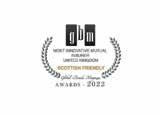





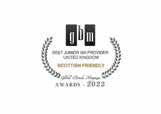

Ghana: Africa's Golden Opportunity Unearthing Riches Beyond Resources
Forget fleeting booms. Ghana offers a stable democracy, a youthful, dynamic population, and a diversified economy ripe for investment across agriculture, technology, manufacturing, and tourism. Discover the long-term potential in this West African powerhouse.

For too long, the narrative surrounding African investment has been dominated by the volatile allure of raw materials. While Ghana — the “Gold Coast” of old — still boasts substantial mineral wealth, a deeper analysis reveals a more compelling and sustainable proposition. This West African nation, a beacon of democratic stability in the region, is laying the groundwork for diversified economic growth, positioning itself as an attractive hub for long-term investors across a range of sectors.
Ghana’s enduring political stability remains one of its most valuable assets. Unlike several of its neighbours, Ghana has a proud track record of peaceful democratic transitions, underpinned by strong institutions and a consistent commitment to the rule of law. This political maturity creates a stable business environment in which long-term capital can be deployed with confidence. International institutions regularly rank Ghana favourably in governance metrics and ease of doing business — especially in the sub-Saharan African context. For investors sensitive to political risk, this predictability provides crucial reassurance.
The country’s demographic advantage adds another layer of appeal. With a median age of just 21, Ghana is home to a youthful, increasingly educated, and dynamic population. This demographic bulge provides a dual benefit: a deep labour pool for growing enterprises and an expanding consumer market hungry for modern products, services, and technologies. Sectors targeting this population — including education, technology, retail, and entertainment — are well positioned for sustained growth. The government has also recognised the importance of youth empowerment, investing in digital skills training, entrepreneurship programmes, and vocational education to ensure that the next generation is ready to meet the demands of a changing economy.
While gold, cocoa, and oil still contribute significantly to national revenues, Ghana’s commitment to diversification is becoming more apparent. Agriculture remains the backbone of rural livelihoods and a key pillar of national development. The government has taken active steps to modernise the sector, encouraging commercial farming, strengthening value chains, and improving access to financing and markets. For investors, there is strong potential in agro-processing, especially in adding value to crops such as cocoa, cashew, shea nuts, and mangoes. The development of organic agriculture and niche exports is also gaining traction. Programmes like “Planting for Food and Jobs” are providing farmers with subsidies, technical training, and other support, helping to create a more structured and investable agricultural ecosystem.
Meanwhile, Ghana’s technology sector is enjoying a wave of momentum. Fuelled by growing internet penetration, increasing
"The country’s demographic advantage adds another layer of appeal. With a median age of just 21, Ghana is home to a youthful, increasingly educated, and dynamic population. This demographic bulge provides a dual benefit: a deep labour pool for growing enterprises and an expanding consumer market hungry for modern products, services, and technologies."
smartphone use, and a young, tech-literate population, the country has become a lively hub for digital innovation. The fintech space is particularly vibrant, with opportunities ranging from mobile money services and digital lending platforms to microfinance and e-commerce. Software development, cybersecurity, and data analytics are also in demand. A growing network of tech hubs and incubators — including the Accra Digital Centre — is fostering innovation and entrepreneurship. Government policy has also leaned into this momentum, with initiatives aimed at improving digital infrastructure, promoting digital literacy, and supporting startups.
The manufacturing sector is another area of strategic emphasis. Ghana is actively working to reduce its reliance on imports by building domestic industrial capacity. Investors in sectors such as food and beverage processing, textiles, pharmaceuticals, and building materials will find growing opportunities as local demand increases and infrastructure improves. Industrial parks and special economic zones — such as the Tema Export Processing Zone — offer incentives including tax breaks, streamlined customs processes, and modern facilities, making them appealing entry points for manufacturers looking to scale production or serve regional markets. Public policy continues to support this trajectory through programmes that improve access to finance, invest in skills development, and reduce red tape for businesses.
Tourism, too, is a burgeoning sector with untapped promise. Ghana’s mix of cultural heritage, natural beauty, and hospitality makes it a compelling destination for global travellers. Its historical significance — particularly its role in the transatlantic slave trade — provides a powerful foundation for heritage tourism. Investment opportunities abound in eco-tourism, historical site restoration, and mid- to highend hospitality infrastructure. Niche segments such as adventure travel, wellness retreats, and cultural immersion experiences are also gaining popularity. The Ghanaian government is actively
promoting tourism as a pillar of economic growth through dedicated marketing campaigns, infrastructure investment, and policy support aimed at enhancing visitor experiences.
In addition, Ghana's strategic geographic location makes it a natural gateway to West Africa, home to more than 400 million people. With improved port infrastructure, expanding transport corridors, and growing trade under the African Continental Free Trade Area (AfCFTA), Ghana is well-positioned to become a regional logistics and manufacturing hub. Companies operating in Ghana not only benefit from the domestic market but can also tap into broader regional demand, facilitated by trade agreements and improving connectivity.
Taken together, Ghana’s macroeconomic and structural fundamentals make a strong case for long-term investment. The nation is pursuing a clear development path: one that moves beyond resource dependency and builds a resilient, inclusive, and diversified economy. Its institutions are stable, its population is young and growing, and its government is actively investing in the conditions necessary for privatesector success.
Challenges remain — including infrastructure gaps, bureaucracy, and periodic fiscal imbalances — but these are increasingly being addressed through reform and public-private partnerships. For forward-thinking investors willing to engage with the local context and take a long-term view, Ghana offers one of the most promising investment landscapes on the African continent.
As the global economy becomes increasingly multipolar and investors look for growth outside traditional markets, Ghana presents an opportunity to back a country on the rise. This is not a speculative gamble on commodities; it is a strategic bet on a nation building broadbased prosperity from the ground up. For those prepared to engage early and constructively, the returns — financial, developmental, and reputational — could be golden. i

> Lights, Camera, Cash Cow: Decoding the Blockbuster Blueprint
From Jaws to Avatar, Hollywood has long chased the elusive formula for box office dominance. In an age of escalating budgets and unpredictable audiences, is there a magic recipe — or is it simply a high-stakes gamble? This analysis examines the anatomy of the hits, the missteps that became cautionary tales, and the evolving quest for cinematic gold.
The term “blockbuster” evokes images of overflowing cinemas, record-breaking grosses, and cultural moments that transcend the screen. These are the films that dominate public conversation, influence trends in fashion and popular culture, and etch themselves into collective memory. While revenue is a defining marker, financial performance alone does not fully capture the essence of a blockbuster.
Historically, the most successful examples share certain characteristics. They tend to command large budgets that translate into lavish production values, extensive special effects, and the hiring of top-tier talent both in front of and behind the camera. They are designed for broad appeal, released simultaneously in vast numbers of theatres across multiple territories, and supported by marketing campaigns that saturate public consciousness long before opening night. True blockbusters also leave a cultural imprint — inspiring sequels, merchandise, theme park attractions, and even academic analysis. Many encourage repeat viewings, becoming social events as much as cinematic experiences.
Over decades, Hollywood’s most ambitious producers have tried to distil these attributes into a repeatable model. Studios have commissioned analyses of previous successes, broken down their components, and attempted to reverseengineer them. While no guaranteed formula has emerged, certain factors recur with striking regularity.
STORY, CHARACTERS, AND STAKES
A compelling narrative is almost always at the heart of a successful blockbuster. The most enduring examples tap into universal themes — the triumph of good over evil, the resilience of the human spirit, the call to adventure — presented in ways that are accessible but not simplistic. The hero’s journey, an archetype identified by mythologist Joseph Campbell, remains a staple because of its ability to resonate across cultures.
Equally important are characters that audiences can relate to on an emotional level. Flawed protagonists often prove more compelling than flawless ones, offering opportunities for growth and redemption. Even in high-concept spectacle,
"The blockbuster remains Hollywood’s most visible and ambitious product, combining artistic ambition with commercial imperative."
the ability to empathise with a character’s struggle can determine whether a film earns one viewing or several.
High stakes drive audience engagement. In the blockbuster arena, these stakes are frequently existential: the fate of a city, a planet, or humanity itself. The combination of personal jeopardy and global peril creates tension that sustains interest over lengthy running times.
SPECTACLE AND TECHNOLOGY
Blockbusters are also defined by their ability to deliver moments that can only be experienced in a cinema. Advances in visual effects, sound design, and cinematography have consistently pushed the boundaries of what is possible on screen. The integration of cutting-edge techniques — from the mechanical shark of Jaws to the 3D innovations of Avatar— has often been central to a film’s appeal.
Visual spectacle need not be purely computergenerated. Christopher Nolan’s Top Gun: Maverick, with its emphasis on practical aerial stunts, demonstrated that audiences still respond powerfully to physical feats captured in-camera. What matters is not the technology itself, but its use in service of immersive, aweinspiring moments.
TIMING, NOSTALGIA, AND GLOBAL REACH
The timing of a release can be pivotal. The concept of the “summer blockbuster,” popularised in the 1970s, capitalised on the leisure patterns of students and families. Holiday seasons offer similar opportunities, particularly for familyoriented titles. Strategic scheduling also involves avoiding direct clashes with competing tentpole releases.
Nostalgia remains a potent driver. Many of the most profitable blockbusters draw upon existing franchises or intellectual property with established fan bases. The revival of Star Wars in 2015, the continuation of Jurassic Park through Jurassic World, and the live-action reinterpretations of Disney classics have all leveraged audience familiarity while introducing new elements.
In the 21st century, the international market has become critical to a film’s success. Blockbusters increasingly aim to appeal across cultural boundaries, often by emphasising universal themes and avoiding overly localised references. China, in particular, has emerged as a market capable of significantly altering global box office rankings.
THE RISE OF THE MODERN BLOCKBUSTER
Although Hollywood had produced epic-scale spectacles before, the contemporary blockbuster era is generally dated to 1975 with the release of Jaws. Steven Spielberg’s thriller not only delivered record-breaking receipts but also pioneered the concept of a wide summer release supported by an unprecedented marketing push. It demonstrated that the combination of a highconcept premise, expertly managed suspense, and technical novelty could deliver both critical acclaim and commercial dominance.
The subsequent decades produced a string of influential examples. The late 1970s and 1980s introduced enduring franchises such as Star Wars, Indiana Jones, and Back to the Future. These films balanced adventurous storytelling with charismatic performances and groundbreaking effects, creating templates that studios still follow.
The 1990s saw advances in digital effects transform audience expectations. Terminator 2: JudgmentDay showcased liquid-metal morphing technology, while Jurassic Park brought photorealistic dinosaurs to life. Such innovations reinforced the link between technical spectacle and box office appeal.
In the 21st century, the superhero genre has dominated the blockbuster landscape, with the Marvel Cinematic Universe setting new

benchmarks for interconnected storytelling.
Avengers: Endgame, the culmination of more than a decade of interlinked narratives, not only broke records but also redefined audience engagement through multi-film investment.
THE BILLION-DOLLAR CLUB
A select group of films has crossed the billiondollar threshold, representing the commercial zenith of the industry. James Cameron’s Avatar reigned for a decade as the highest-grossing film of all time, combining technical innovation with a timely environmental message. His Titanic married historical tragedy to a sweeping romance, capturing audiences across demographics.
Avengers: Endgame achieved its position through scale and sentiment, bringing together an ensemble cast in a finale that rewarded years of viewer loyalty. Star Wars: The Force Awakens successfully balanced nostalgia with the introduction of a new generation of characters. Jurassic World revitalised a dormant franchise with a fully realised dinosaur theme park, while Disney’s TheLionKingremake leveraged cuttingedge CGI to reintroduce a beloved story.
Surprise entries have also emerged. Greta Gerwig’s Barbie became a global sensation with its mix of satire, vibrant design, and feminist commentary, while Top Gun: Maverick demonstrated that practical stunts and character-driven storytelling could still achieve staggering returns.
WHEN BLOCKBUSTERS BOMB
The flip side of the blockbuster equation is failure — often on a similarly grand scale. The reasons are varied. Weak or confusing scripts can alienate viewers despite visual grandeur. Misjudged tone
or lack of chemistry between leads can undercut otherwise strong elements. Poor marketing campaigns may fail to build awareness or set appropriate expectations.
Some failures become industry cautionary tales. Disney’s John Carter suffered from marketing that left audiences uncertain about its premise. The Lone Ranger combined high costs with an uneven tone, resulting in underperformance despite bigname talent. Cutthroat Island and Heaven’s Gate became synonymous with budget overruns and financial disaster. More recently, The Marvels struggled to energise even loyal MCU fans, and Disney’s Strange World underperformed despite critical praise — illustrating the difficulty of breaking through in a crowded media landscape.
In some cases, the issue is timing. Films released in the shadow of another major event film can see their potential audience cannibalised. In others, it is simple audience fatigue: too many instalments in too short a span can erode even the strongest brands.
THE FUTURE OF THE BLOCKBUSTER
The industry is in flux. Streaming platforms have altered viewing habits, offering audiences highquality content at home and making it harder for studios to lure them into cinemas. Theatrical releases must now compete by offering experiences that feel irreplaceable — largeformat visuals, immersive sound, and communal excitement.
Intellectual property remains a cornerstone of the blockbuster strategy. Adaptations of comic books, video games, and popular novels offer recognisable branding and built-in audiences.
Yet reliance on familiar material carries the risk of creative stagnation.
International markets will continue to shape production and content decisions. Studios are increasingly mindful of casting choices, plot points, and marketing approaches that will play well across cultures. Social media has added both opportunity and risk: positive buzz can create global momentum, but negative sentiment can spread just as quickly.
There is also a growing recognition of the commercial potential in diversity and inclusion. Films that reflect a broader range of experiences and identities have found strong support from audiences seeking fresh perspectives.
AN ENDURING PURSUIT
The blockbuster remains Hollywood’s most visible and ambitious product, combining artistic ambition with commercial imperative. While there may never be a definitive formula, the pursuit of one continues to drive innovation in storytelling, technology, and marketing. The stakes are high — fortunes can be made or lost with a single release — but the rewards, when everything aligns, are transformative.
As the industry navigates changing technologies and audience expectations, one thing is clear: the dream of creating the next cinematic phenomenon remains as powerful as ever. Whether in the form of a meticulously planned franchise entry or an unexpected cultural lightning strike, the blockbuster will continue to be both Hollywood’s most alluring prize and its most calculated gamble. i
> Shielding Shareholders, Fuelling Fortunes: The Rise and Reign of Limited Liability Companies
From medieval guilds to modern multinational corporations, the concept of limited liability has reshaped the global business landscape, encouraging investment and innovation by separating personal assets from corporate risk. Yet this protection is not uniform worldwide, with variations in legal interpretation and enforcement creating a complex environment for companies operating across borders.
The limited liability company (LLC) is a foundation of modern commerce. It is a legal innovation that has altered the course of economic history, allowing individuals to invest in and own companies without exposing their personal wealth to the same risks borne by the business itself. This simple but powerful separation between ownership and liability has fuelled entrepreneurship, attracted vast amounts of capital, and facilitated the growth of enterprises of every size. Understanding the origins of the LLC, the economic rationale behind its creation, and how protections vary internationally is essential for anyone seeking to navigate today’s global business environment.
ORIGINS OF THE LIMITED LIABILITY CONCEPT
The principle of limiting liability is far older than the modern corporation. In medieval Europe, trade guilds and partnerships often contained elements of shared but limited responsibility, shielding members from the total collapse of their personal fortunes if a venture failed. These arrangements were rudimentary, but they planted the seeds for a legal doctrine that would later transform capitalism.
One of the most famous early examples was the British East India Company, chartered in 1600. While not a modern LLC, it introduced the idea that investors could participate in large-scale ventures without assuming unlimited personal liability for the company’s debts. This marked a significant shift from traditional partnerships, where every partner’s entire personal wealth could be at risk.
However, the journey to widespread adoption was far from straightforward. The South Sea Bubble of 1720 — a speculative frenzy that collapsed spectacularly — led to the Bubble Act in England, which severely restricted joint-stock companies for over a century. The mistrust of large incorporated enterprises slowed the spread of limited liability, but industrialisation would eventually force a change.
By the early 19th century, the scale of capital required for railways, factories, and mining
"By the early 20th century, the limited liability concept had become embedded in most advanced economies, creating the conditions for capital markets, industrial conglomerates, and global trade as we know them today."
operations made unlimited liability increasingly untenable. The UK’s Joint Stock Companies Act of 1844 allowed public registration of companies but withheld the shield of limited liability. It was the Limited Liability Act of 1855 that finally codified protection for shareholders, capping their exposure at the value of their investment. The Companies Act of 1862 then consolidated this framework and introduced the modern private company, making the limited liability model accessible beyond large public enterprises.
Across the Atlantic, New York State enacted the first true limited liability law in 1811 for manufacturing companies, and by the mid19th century most US states had followed suit. France’s Société à responsabilité limitée (SARL) emerged in the late 19th century, and Germany’s Gesellschaft mit beschränkter Haftung (GmbH) followed in 1892, offering small and mediumsized enterprises the same protections as large corporations.
By the early 20th century, the limited liability concept had become embedded in most advanced economies, creating the conditions for capital markets, industrial conglomerates, and global trade as we know them today.
THE ECONOMIC LOGIC OF LIMITED LIABILITY
The success of the LLC lies in its ability to align risk-taking with innovation and capital formation. By protecting personal assets, limited liability lowers the barrier to entry for investors and entrepreneurs. Without such protection, many would simply avoid backing ventures with any significant risk profile.
Reducing personal risk encourages investment from a broader base of participants, from small shareholders to large institutional funds. It also fosters entrepreneurship by allowing founders to experiment, iterate, and pivot without the fear of personal bankruptcy. This is particularly important in industries such as technology, where high failure rates are offset by the potential for extraordinary success.
It also facilitates business expansion. When liability is capped, companies find it easier to issue shares and attract new partners. Lenders are often more willing to extend credit to corporate entities with clear legal structures, knowing that enforcement mechanisms and statutory protections are in place.
Crucially, limited liability also supports the separation of ownership from management. Shareholders can provide capital without engaging in daily operations, enabling companies to hire professional executives to run the business. This division of labour has been instrumental in building the modern corporation, where scale and complexity demand managerial expertise.
VARIATIONS IN PROTECTION ACROSS JURISDICTIONS
While the broad principle of limited liability is widely recognised, the degree of protection afforded to shareholders varies. In countries such as the United States, United Kingdom, Singapore, Switzerland, and the Cayman Islands, the legal doctrine is well established and courts are generally reluctant to pierce the corporate veil except in cases involving fraud, gross undercapitalisation, or blatant disregard for corporate formalities. Delaware, for example, has become a favoured home for US companies due to its specialised Court of Chancery, which delivers consistent, predictable rulings in corporate disputes.
Other jurisdictions adopt a more interventionist stance. In certain European states, directors can face personal liability for unpaid taxes, environmental damage, or breaches of fiduciary duty even without fraudulent intent. Some emerging markets, where judicial independence is less secure, may also see courts more willing to hold shareholders directly responsible for corporate debts.
There are also statutory carve-outs in many countries that override limited liability in specific sectors, particularly banking, insurance, and environmental management. These exceptions aim to ensure that companies operating in highrisk or high-impact industries cannot evade responsibility for catastrophic failures by hiding behind corporate status.
For multinational businesses, these variations can present both opportunities and risks. Jurisdictions with strong protections may attract holding companies and investment vehicles, while those with narrower interpretations of liability may require more conservative capital structuring and governance measures.
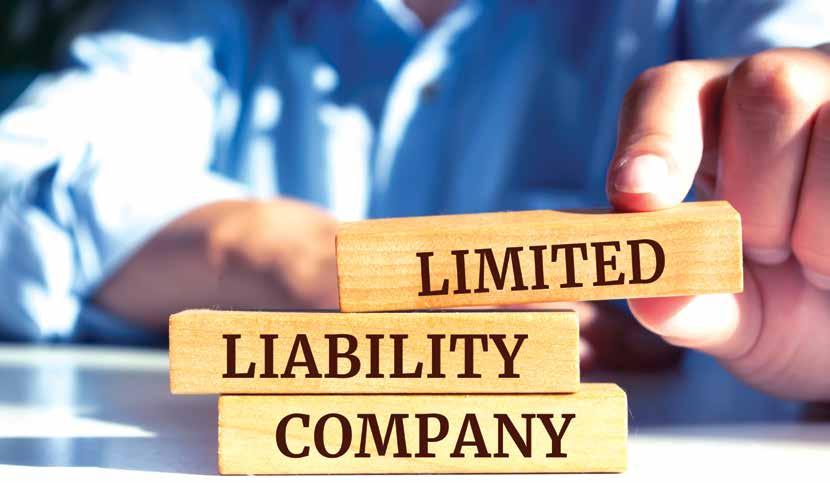
GLOBALISATION AND THE CHANGING ROLE OF LIMITED LIABILITY
In an era of globalised trade and finance, limited liability has taken on new dimensions. The rise of cross-border corporate structures, offshore subsidiaries, and complex supply chains means that the protective shield offered by one jurisdiction can be tested in another. The global financial crisis of 2008 reignited debates about moral hazard, with critics arguing that executives and shareholders of failing institutions were insulated from the consequences of excessive risk-taking.
Regulators have since introduced measures to balance the benefits of limited liability with greater accountability. These include higher capital requirements for banks, stricter corporate governance rules, and more aggressive enforcement of environmental and social responsibility standards. The European Union’s Corporate Sustainability Due Diligence Directive, for example, could increase personal liability exposure for directors who fail to address human rights abuses or environmental damage in their value chains.
CASE STUDIES IN LIMITED LIABILITY’S IMPACT
The history of corporate failures provides ample evidence of both the strengths and weaknesses of limited liability. In the case of Enron’s collapse in 2001, shareholders lost billions but were not liable beyond the value of their shares. However, certain executives faced criminal charges, illustrating that personal liability still applies for fraud and misconduct.
Conversely, in Germany’s Wirecard scandal, questions arose about whether stricter personal liability for directors might have prevented one
of Europe’s largest corporate frauds in decades. While limited liability protected shareholders, the fallout prompted legislative reforms to tighten oversight and auditing standards.
The concept’s benefits are equally visible in success stories. Many of today’s largest technology firms, from Apple to Amazon, scaled rapidly thanks to the ability to raise capital from public markets under the LLC model. Investors could participate in high-risk, highreward ventures without risking their homes and savings, enabling unprecedented innovation and wealth creation.
THE FUTURE OF LIMITED LIABILITY
Looking ahead, the role of limited liability will continue to evolve in response to societal expectations, technological change, and geopolitical pressures. The growing emphasis on environmental, social, and governance (ESG) standards may lead to targeted reforms that impose greater personal responsibility for harm caused by corporate actions. Climate change litigation, for example, could test the boundaries of liability protection in unprecedented ways.
Digital assets and decentralised autonomous organisations (DAOs) also present novel challenges. These blockchain-based entities often lack the formal legal structures that underpin traditional limited liability, creating uncertainty about investor protections and accountability. Regulators in several jurisdictions are exploring ways to extend or adapt limited liability principles to these new organisational forms.
Meanwhile, the global competition for business incorporation remains intense. Jurisdictions
that combine strong liability protection with transparent regulation, tax efficiency, and political stability are likely to remain favoured destinations for company formation. Others may seek to differentiate themselves by offering enhanced protections for creditors and communities affected by corporate activities.
A LASTING LEGACY
More than a century and a half after its formalisation, the limited liability company remains one of the most influential legal innovations in economic history. It has enabled the rise of the modern corporation, expanded access to investment opportunities, and supported the development of global capital markets. At the same time, it has prompted legitimate concerns about risk-taking, accountability, and fairness, which continue to shape its evolution.
As the business world navigates new frontiers in technology, sustainability, and crossborder regulation, the balance between protecting shareholders and ensuring corporate responsibility will remain a central challenge. Yet the fundamental principle — that personal assets should be shielded from corporate liabilities — has proven remarkably resilient, adapting to the needs of successive generations of entrepreneurs and investors.
The limited liability company is, in many respects, a mirror of the economic systems it serves. Its strengths, vulnerabilities, and adaptability reflect broader trends in global commerce. While its exact contours will continue to shift, its central role as a cornerstone of modern business is unlikely to diminish. i

Middle East: Crown Prince MBS Drives
Business Transformation in the Desert Kingdom
Crown Prince Mohammed bin Salman’s ambitious reform agenda is reshaping Saudi Arabia’s economic landscape—reducing oil dependency, catalysing entrepreneurship, and attracting record levels of foreign investment.

The winds of change are sweeping across Saudi Arabia, and at the heart of this transformation is Crown Prince Mohammed bin Salman. Since his rise to power, the Crown Prince—widely known as MBS—has spearheaded a series of bold initiatives to diversify the Kingdom’s economy, reduce its dependency on oil, and empower a new generation of Saudi entrepreneurs. His vision, articulated through the sweeping Vision 2030 blueprint, marks a radical departure from the past and aims to forge a more resilient, innovative, and globally competitive private sector.
For decades, oil was the bedrock of Saudi Arabia’s economy. The Kingdom’s vast hydrocarbon reserves underpinned national wealth, but also engendered a structural dependency that MBS and others recognised as unsustainable. Vision 2030, launched in 2016, charts a path toward long-term economic resilience by promoting growth in non-oil sectors including tourism, entertainment, technology, and manufacturing. This diversification is not only fiscally prudent but vital to ensuring that Saudi Arabia can thrive in an increasingly globalised and interconnected world.
One of the cornerstones of the reform programme is the advancement of entrepreneurship. Historically, the Saudi business environment was dominated by a handful of powerful conglomerates, many with strong government ties. Today, MBS is seeking to cultivate a culture of innovation and calculated risktaking, particularly among the Kingdom’s youthful population. Institutions such as the Mohammed bin Salman College of Business and Entrepreneurship (MBSC), established in collaboration with Babson College in the United States, are equipping young Saudis with the skills and frameworks necessary to launch and grow their own ventures. The establishment of MBSC signals a wider commitment to nurturing a new generation of Saudi business leaders.
Another critical element in the reform agenda is the creation of the Ministry of Investment— formerly the Saudi Arabian General Investment Authority (SAGIA)—tasked with attracting foreign direct investment (FDI). The Ministry has taken steps to overhaul regulatory frameworks that previously disincentivised foreign participation, offering streamlined processes and compelling incentives. These efforts are yielding results, with FDI volumes rising despite global headwinds and geopolitical volatility. International corporations are increasingly viewing Saudi Arabia not just as a market, but as a regional hub for operations, research, and manufacturing.
However, MBS’s ambitions extend well beyond the pursuit of foreign capital. His reforms are geared towards constructing an entire business ecosystem capable of supporting high-growth sectors. Flagship infrastructure projects such as NEOM—a futuristic, $500bn megacity
"The Kingdom’s financial sector is also undergoing significant transformation. The Saudi Stock Exchange (Tadawul) is being modernised and progressively opened to international investors, thereby expanding access to capital for domestic firms."
envisioned as a global hub for innovation and technology—represent the scale and scope of these efforts. Similarly, the Red Sea Development Project and Qiddiya, an entertainment and leisure destination, aim to build sustainable industries in hospitality and tourism. These projects are not merely symbolic; they form part of a coherent strategy to shift the centre of economic gravity within the Kingdom and create lasting value for future generations.
The Kingdom’s financial sector is also undergoing significant transformation. The Saudi Stock Exchange (Tadawul) is being modernised and progressively opened to international investors, thereby expanding access to capital for domestic firms. Parallel to this, the government is encouraging the development of fintech and venture capital markets—essential pillars for fostering innovation and supporting emerging businesses. Regulatory frameworks are being refined to encourage digital banking, peer-topeer lending, and financial inclusion, which are all seen as vital to a competitive 21st-century economy.
A milestone in the diversification drive was the initial public offering (IPO) of Saudi Aramco. While the listing of the world’s largest oil company may appear at odds with the objective of reducing reliance on hydrocarbons, it served a dual purpose: raising substantial capital and signalling Saudi Arabia’s intent to participate in global capital markets. Proceeds from the IPO have been earmarked for investment in Vision 2030 initiatives, further embedding the diversification effort.
MBS’s reforms also involve a concerted effort to enhance the Kingdom’s broader business environment. Regulatory streamlining, administrative simplification, and improvements in government service delivery are all designed to reduce friction for both domestic and international enterprises. Labour market reform remains a central focus, with policies such as the Nitaqat programme aiming to boost employment among Saudi nationals—especially women— while reducing over-reliance on expatriate labour in key industries.
A key driver behind these reforms is the Public Investment Fund (PIF), Saudi Arabia’s sovereign
wealth fund. Under MBS’s leadership, the PIF has assumed a pivotal role in financing domestic development and acquiring strategic assets abroad. Its investments span sectors as diverse as real estate, technology, and entertainment, and are intended not only to generate returns but to seed new industries and employment opportunities. The PIF is a principal investor in many of the giga-projects and has also taken steps to support Saudi start-ups and SMEs.
Despite the scope and ambition of the reforms, the path forward is not without obstacles. The rapid pace of transformation has introduced economic and social disruptions, and while many reforms have been lauded by international observers, they have also drawn criticism. Some argue that the pace of change may risk alienating more conservative segments of society, while others raise concerns about political freedoms and human rights. The government’s anticorruption drive, though widely supported, has also attracted scrutiny over due process and transparency.
The COVID-19 pandemic further complicated matters, temporarily halting momentum and reshaping priorities. Fluctuations in global oil prices continue to test the Kingdom’s fiscal resilience, underscoring the importance of economic diversification. Moreover, successfully managing the scale of ongoing development— logistically, socially, and financially—remains a formidable challenge.
Nonetheless, the trajectory is unmistakable. Saudi Arabia is emerging as a more dynamic, diversified economy—one that seeks not only to reduce oil dependency but to position itself as a global centre for innovation, investment, and enterprise. The opportunities for Saudi businesses, from global conglomerates to fledgling start-ups, are expanding rapidly.
The ultimate legacy of Crown Prince Mohammed bin Salman may well be the creation of a reimagined Saudi Arabia: one that preserves its cultural heritage while embracing the possibilities of modernity and economic liberalisation. The journey is ongoing, but the groundwork for a transformative future has been firmly established—built, quite literally, upon the foundations of Vision 2030 i

The Vanishing Vault: Has Online Banking Erased More Than Just Queues?
As physical bank branches vanish from high streets across EuropeandNorthAmerica,theshifttodigitalbankingoffers speedandefficiency—butatwhatcost?CFI.coexploreswhat’s been lost in the transition and whether a hybrid model can restorethehumantouch.
The grand marble halls, the hushed atmosphere, and the familiar clatter of the teller’s drawer—these once defined the physical presence of a bank branch. For generations, they were pillars of the community: places to open a first account, apply for a mortgage, or seek trusted financial advice. Today, these scenes are fading into history. With the rise of mobile banking and digital platforms, physical branches are closing at an accelerating pace.
In many respects, the shift is understandable. Online banking offers convenience, cost savings, and 24/7 access. But it also raises questions about accessibility, trust, and the long-term role of human interaction in financial services. Is something vital being lost in the rush to digitise? And in this new landscape, is there still room for a reimagined version of the traditional bank branch?
A DECADE OF DECLINE
Across Europe and North America, physical bank branches have been disappearing for over a decade. In Spain, the post-2008 financial crisis prompted a wave of banking consolidation, resulting in thousands of branch closures. In the UK, the decline has been equally stark, intensified by the COVID-19 pandemic, which drove more customers online. According to some British banks, over 70% of their customers now engage primarily through digital channels.
For financial institutions, this shift delivers clear benefits. Digital banking slashes operational costs and increases efficiency, enabling banks to reinvest in technology, data infrastructure, and service innovation. From their perspective, physical branches are a legacy burden.
BUT NOT WITHOUT CONSEQUENCES
Yet this digital evolution is not universally beneficial. Branch closures disproportionately affect rural communities, where broadband access is patchy and mobile signals unreliable. For the elderly, the digitally excluded, or people living with disabilities, online banking is often not
a viable alternative. Many older adults still rely on face-to-face services for managing their money, and branch closures risk leaving them behind.
Accessibility challenges also extend to small businesses, particularly those reliant on cash transactions. Without nearby branches, depositing funds or accessing change becomes time-consuming and costly. Community organisations—often dependent on local banking for daily operations—suffer too, losing not just a financial service, but a trusted point of contact.
THE HUMAN FACTOR
There is also a deeper, more intangible loss: the erosion of human relationships. Digital platforms are efficient, but often impersonal. For routine transactions, they suffice. But when customers face complex issues—such as resolving disputes, applying for mortgages, or planning for retirement—the reassurance and insight of a knowledgeable advisor cannot be easily replaced by a chatbot or FAQ page.
The emotional connection forged in face-toface interactions builds loyalty, trust, and confidence—qualities that underpin long-term customer relationships. While banks continue to invest in digital customer service tools such as video calls and AI-powered assistants, these cannot always replicate the empathy, immediacy, and nuance of in-person support.
NOT OBSOLETE—BUT EVOLVING
To suggest that physical branches are obsolete, however, would be premature. A significant number of accounts, particularly those involving complex financial products, are still opened in person. Many customers, across demographics, value the ability to walk into a branch, speak to an expert, and receive tailored guidance.
This suggests that the future of the bank branch lies not in mass closure, but in reinvention. Rather than serving as transaction hubs, tomorrow’s branches may evolve into compact, tech-enabled advisory centres—spaces focused on financial

planning, problem-solving, and education rather than routine operations.
Tellers, too, are transforming. No longer just cash handlers, they are becoming relationship managers—trained to help customers navigate both physical and digital services effectively.
EMBRACING THE HYBRID MODEL
Modern technology will play a pivotal role in this transformation. Many banks are already integrating smart kiosks, advanced ATMs, and AI-enabled customer service tools into branch operations. These systems handle routine tasks, freeing staff to concentrate on delivering personalised, high-value services.

This omnichannel approach—seamlessly blending physical and digital banking—can offer the best of both worlds. It enables banks to serve tech-savvy customers efficiently while ensuring vulnerable or high-need clients continue to receive the support they require.
For banks willing to invest, the opportunity is clear: position themselves as relationshipdriven institutions that combine digital agility with a human-centric ethos. This means not just preserving a few branches, but reimagining them as strategic assets—well-staffed, digitally enhanced, and designed to meet complex client needs.
A NEW KIND OF BANKING EXPERIENCE
Such a hybrid model could serve as a competitive differentiator. Banks that invest in both technology and people could attract customers who value digital ease but also crave personal service. This includes older generations, small business owners, and those concerned about cybersecurity—a growing worry in an increasingly digital world.
The physical branch, reimagined, can also serve broader community purposes. It might host financial literacy workshops, provide workspaces for local entrepreneurs, or partner with community initiatives. In this way, branches can reassert their role as social and economic hubs.
THE VAULT STILL MATTERS
The rapid digitisation of banking has undoubtedly streamlined many aspects of financial life. But it has also underscored what technology alone cannot provide: trust, empathy, and human connection.
As banks recalibrate their strategies for the future, the most successful may be those who refuse to see the physical branch as an outdated relic. Instead, they will view it as a vital part of a new financial ecosystem—smaller, smarter, more purposeful, but no less essential.
The vanishing vault may indeed be evolving—but its story isn’t over yet. i
Whispers from a Water World: Life’s Footprints Found on Distant K2-18b?
In a monumental discovery that ignites the age-old question of our cosmic loneliness, scientists have detected compelling biosignatures in the atmosphere of exoplanet K2-18b – a world orbiting a red dwarf star, potentially harbouring vast oceans and now, tantalising hints of life itself. Could this be the dawn of a new era in our understanding of life beyond Earth?
For millennia, humanity has gazed into the night sky, tracing constellations, charting the movements of planets, and wondering whether we are alone in the universe. Across cultures and centuries, that question has remained one of the most profound we can ask. Now, a new signal has emerged from 120 light-years away – faint, fragile, yet brimming with promise.
The source is K2-18b, an exoplanet long recognised for its potentially water-rich atmosphere. Recent research has revealed something extraordinary within its skies: the possible presence of dimethyl sulfide (DMS), a molecule that on Earth is almost exclusively produced by life. While the evidence is not yet conclusive, it has sent ripples of excitement –and caution – through the scientific community.
A MOLECULE WITH MEANING
The findings, published in a leading peerreviewed journal, were made using data from the James Webb Space Telescope (JWST), the most advanced observational platform humanity has yet placed in space. By studying the light passing through K2-18b’s atmosphere as it transits its star, JWST’s instruments can detect the “spectral fingerprints” of specific molecules. Among the familiar signals of water vapour and carbon dioxide emerged something far more intriguing: the chemical signature of DMS.
On Earth, DMS is produced predominantly by marine microorganisms, particularly phytoplankton, and plays a role in cloud formation and climate regulation. Detecting it in significant quantities elsewhere raises the possibility of biological activity. As Dr Clara Sousa-Silva, an astrobiochemist unaffiliated with the study, observed: “Abiotic processes can produce DMS, but on Earth, abundant DMS is a strong indicator of life. Finding it in such quantities on another world is, at the very least, a reason to look much closer.”
THE ALLURE OF A HYCEAN WORLD
K2-18b orbits a cool red dwarf star, K2-18, in what astronomers call the “habitable zone” – the orbital distance where temperatures could allow liquid water to exist. But unlike Earth, it falls into a category of planets between the size of our world and Neptune, referred to as “hycean” planets.
Hycean worlds are theorised to possess deep global oceans beneath thick, hydrogen-rich atmospheres. Such environments are alien compared to our terrestrial experience, but they could provide stable, life-supporting conditions. A vast ocean, shielded from harmful radiation by a dense atmosphere, might host ecosystems utterly different from anything on Earth – or, intriguingly, perhaps not so different in their basic biochemical underpinnings.
Earlier observations by the Hubble Space Telescope had hinted at the presence of water vapour and other gases in K2-18b’s atmosphere. JWST’s enhanced capabilities have now sharpened that view, bringing the possible detection of DMS into focus. If confirmed, it would be the first time a known biosignature molecule has been found in the atmosphere of an exoplanet.
THE NEED FOR CAUTION
Despite the excitement, the research team stresses that this is not proof of life. Our understanding of exoplanet chemistry is still developing, and unknown non-biological processes might produce DMS under the right conditions. Establishing the origin of the molecule will require further study, including repeated observations to confirm its presence and abundance.
Future campaigns with JWST and other advanced telescopes will aim to search for additional biosignatures, such as methane or oxygen in certain ratios with DMS, that could strengthen the case for biology. On Earth, DMS forms part of a complex cycle involving a range of organisms and interacting chemical processes; finding evidence of similar patterns elsewhere would be compelling.

IMPLICATIONS FOR OUR PLACE IN THE COSMOS If life – even microbial – is confirmed on K2-18b, the implications would be profound. It would challenge the notion that life is a rare cosmic accident, instead suggesting that biology may emerge wherever the right conditions exist. Given that red dwarf stars are the most common in the galaxy, and that many of their planets fall within their habitable zones, such a discovery would vastly expand the range of worlds where life could potentially thrive.
It would also transform our scientific priorities. A confirmed detection of extraterrestrial life would likely focus research efforts on understanding its biochemistry, evolution, and adaptability. Would alien life share fundamental characteristics with Earth’s organisms, such as carbon-based molecules and water as a solvent, or would it be

founded on entirely novel principles? The answer could redefine our understanding of biology itself.
THE ROAD AHEAD
For now, K2-18b represents both promise and patience. The JWST has provided humanity with its first credible glimpse of a biosignature on another world, but science demands rigorous confirmation. Over the coming years, astronomers will seek to refine their measurements, rule out non-biological explanations, and deepen our understanding of the planet’s atmosphere and environment.
Alongside these targeted studies, surveys of other exoplanets will continue, widening the net in the search for life. Each detection – or absence – will help build a statistical picture of how common life-bearing worlds might be. The discovery
process is as much about ruling out false positives as it is about finding the true signals of biology.
A SHARED HUMAN QUEST
The search for life beyond Earth is not merely a scientific endeavour; it is also a profoundly human one. It speaks to our curiosity, our drive to explore, and our desire for connection across the gulfs of space. Whether we find ourselves part of a living universe or a solitary exception, the answer will shape our self-understanding in ways both subtle and profound.
The faint chemical whisper from K2-18b may yet prove to be an echo of life – or a trick of unfamiliar chemistry on a distant, ocean-wrapped world. Either way, it marks a turning point in our exploration of the cosmos. The tools we now possess are powerful enough to detect the
signatures of life across vast distances, and the discoveries they bring will only grow in number and significance.
As we look up at the night sky, the knowledge that we can, in effect, “sniff” the atmospheres of worlds light-years away is a reminder of how far human ingenuity has carried us. K2-18b’s DMS signal might be just the first of many such findings, each one bringing us closer to answering the question that has echoed through human history: are we alone?
For now, the answer remains just beyond our reach – a whisper across the interstellar dark, urging us to listen more closely, to look more deeply, and to keep searching. The next chapter in this unfolding story promises to be one of the most remarkable in the history of science. i
> From Dubai Chocolate to AI: The Middle East in Transition
Asweet retail success in Dubai reflects a deeper transformation across the Middle East — from exporting goods to exporting knowledge, from tradition to advanced technology.
In July 2025, Dubai Duty Free (DDF) reported record half-year sales of AED 4.1bn (USD 1.12bn), up 6.4 per cent on the previous year. Confectionery was a standout, generating AED 412.5m (USD 112.3m), a 62.7 per cent increase year-on-year.
The star product was Dubai Chocolate. In six months, 2.5 million bars were sold, worth AED 165m (USD 45m) — accounting for 40 per cent of confectionery sales and around 4 per cent of total DDF revenue.
Its success is more than a retail achievement. Dubai Chocolate is emblematic of a wider regional shift: from cultural exports to innovation-led economies, and from consumer goods to the export of data, knowledge, and technology.
A GENERATIONAL SHIFT
Across co-working spaces in Amman, AI bootcamps in Riyadh, coding academies in Cairo, and design studios in Beirut, a new generation is shaping the future. Raised on mobile-first platforms and global digital networks, they are not following the world’s lead — they are building with originality.
Their work is increasingly global in scope. Students in Alexandria and Ramallah are co-authoring AI research; regional artists are selling generative works on international Web3 platforms; engineers are developing Arabic-first large language models; and founders are creating tools that cross linguistic, currency, and infrastructure barriers.
Where the Middle East once exported goods and talent, it is now exporting intellectual property, platforms, and leadership.
THE HUMAN ADVANTAGE IN AI
The region’s growing role in AI reflects more than technical adoption. Boston Consulting Group estimates that the value composition of AI is 10 per cent technology, 20 per cent data and process, and 70 per cent people and culture. In the Arab world, cultural heritage is an asset — shaping ethical frameworks, linguistic models, and trust systems embedded into innovation.
The shift is not only in coding, but in infusing identity into the architecture of digital systems.
NEW LEADERSHIP MODELS
The Chief AI Officer (CAIO) role is expanding
By Bashar Kilani
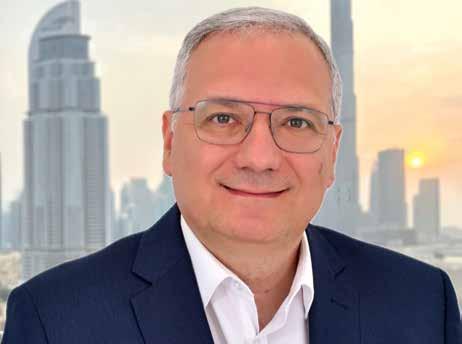
Author: Bashar Kilani
rapidly worldwide, with McKinsey predicting adoption by 38 per cent of global enterprises within a few years. In the Middle East, governments are appointing CAIOs to guide smart city strategies; enterprises are embedding AI across customer engagement, supply chains, and decision-making; and startups are hiring AI leads to manage models and proprietary data.
Universities, incubators, and sovereign tech hubs are training leaders who combine strategy with ethics and governance — a new leadership style designed for the complexity of the AI era.
AN EMERGING INTELLIGENCE ECONOMY
The Arab world’s intelligence economy is distributed, interoperable, and borderless. Models trained in Amman can support chatbots in Riyadh; agricultural AI built in Cairo can be deployed in Basra; and sovereign compute tokens issued in Abu Dhabi can give developers in Beirut and Tunis verified infrastructure access.
What binds this ecosystem is a shared narrative: youth creating for the world, collaboration across cities, and a cultural legacy translated into digital design. The result is not just a cluster of “tech hubs” but a connected network of intelligence with its own values and export potential.
BEYOND GOODS TO KNOWLEDGE
Dubai Chocolate’s success illustrates the underlying principle: value built on local identity,
competitive in global markets. The same approach applies to technology — regional innovation grounded in heritage yet designed for global relevance.
The next phase will not be defined solely by physical exports, but by the scale and trust of the systems the region creates — platforms, protocols, and frameworks that serve both local and global needs.
A GENERATION WRITING THE FUTURE
From Cairo to Dubai, from Amman to Beirut, a generation is emerging that will not simply consume AI but shape it. They will write the prompts, design the protocols, and govern the platforms of tomorrow’s digital society. Their measure of success will not only be revenue or exports, but their ability to scale ideas, earn trust, and set standards for how technology serves society. i
ABOUT THE AUTHOR
Bashar held senior leadership positions at global technology and consulting firms, Accenture and IBM, in addition to several board memberships at corporates, universities and future foresight institutions before founding AI360 Innovations Ltd, an advisory firm focusing on the digital economy at the Dubai AI Campus at DIFC and becoming Managing Partner at Boyden, a leading Leadership Consulting and Executive Search firm.


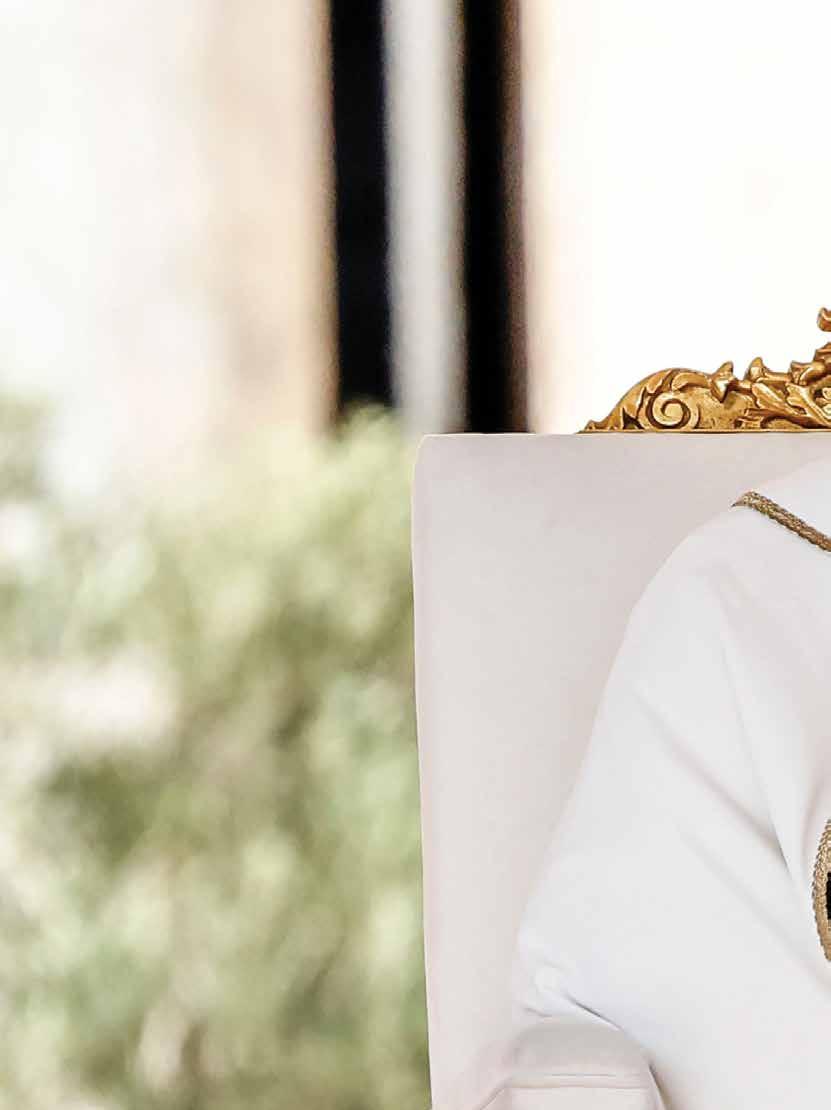
Argentina Mourns:
Nation Pays Final Tribute to Pope Francis
From the working-class streets of Flores to the solemn grandeur of Plaza de Mayo, Argentina fell into deep mourning following the passing of Pope Francis. A son of Buenos Aires and the first Latin American pontiff, his legacy of humility, justice and spiritual leadership has left an indelible mark on the nation and the world.

The news reverberated through the cobbled streets of Buenos Aires, across the windswept pampas and into every Argentine home: Pope Francis, born Jorge Mario Bergoglio, had passed away. It was not merely the end of a papacy; for Argentina, it marked the departure of a spiritual father and a national icon. Revered not only as the global head of the Catholic Church, Francis embodied the voice of the humble, the dignity of the marginalised, and the resilience of his homeland.
Argentina, a country long shaped by the complexities of faith, identity and social struggle, responded with a unity rare in recent memory. From government halls to football stadiums, and from urban cathedrals to remote mountain chapels, a single sentiment echoed: profound, personal loss.
THE ECHOES OF FLORES
The epicentre of national mourning was the modest neighbourhood of Flores, where Bergoglio spent his formative years. The Basilica of San José de Flores, the site of his childhood prayers and early spiritual calling, became a shrine for thousands. Candles lined the pavement, and spontaneous vigils stretched into the early hours. Residents recounted memories of a man known for his quiet wisdom, integrity and ability to connect with people from all walks of life.
“He was one of us,” said an elderly neighbour who remembered the future pope handing out food during Argentina’s economic crises. “He never acted above anyone. He always listened.”
Photographs circulated of a younger Bergoglio riding the subte, greeting street vendors, or walking alone through city parks. These images—now imbued with nostalgia—served as reminders that the Pope who led the world’s 1.3 billion Catholics remained intimately connected to the Argentine people.
A NATION IN MOURNING
The government declared three days of national mourning. Flags across the country were lowered to half-mast, while presidential addresses struck a sombre, unifying tone. “We mourn not just a pope, but an Argentine who carried the heart of this nation into the world,” stated President Javier Milei in a rare moment of bipartisan reflection.
But the public grief extended well beyond official proclamations. Churches across Argentina held special services, with long queues forming at the Buenos Aires Metropolitan Cathedral. The cathedral bells tolled in measured cadence, evoking scenes reminiscent of a state funeral.
The iconic Obelisk in Buenos Aires was illuminated with images of Pope Francis, and makeshift memorials appeared across major cities and small towns alike. San Lorenzo football club, where Francis held lifelong
"As Argentina bids farewell to its most globally recognised son, its people are left with a profound sense of reflection. In a time of economic uncertainty and political turbulence, Francis’s life stands as a reminder of the power of conscience over convenience, of simplicity over spectacle."
membership, held a mass at the stadium grounds—symbolically uniting sport, faith and memory.
The national media offered round-the-clock retrospectives. Documentaries on his early life aired alongside interviews with theologians, civic leaders and ordinary citizens. Argentine radio stations—typically a cacophony of political debate and football commentary— paused for prayers and silent moments. Theatres and cultural centres hosted public readings of his writings, and university forums were convened to reflect on his moral and philosophical legacy.
A LEGACY ANCHORED IN SOCIAL JUSTICE
Pope Francis’s moral authority in Argentina was not confined to his ecclesiastical position. As Archbishop of Buenos Aires, he was known for his quiet advocacy, frequently visiting villas miserias (informal settlements) and speaking out against corruption, inequality and moral indifference. He eschewed privilege, declined to live in the archbishop’s palace, and preferred the company of the disenfranchised to the corridors of power.
This ethos carried into his papacy. Francis challenged global economic systems that, in his words, “sacrifice human lives on the altar of profit.” He was an outspoken critic of consumerism, environmental degradation and indifference to migrants. For many Argentines, particularly the working class and those on the margins of society, he represented not merely a religious leader but a moral force—rooted in their own national narrative.
He also altered the tone of global Catholicism. Where previous popes focused heavily on doctrine and liturgical precision, Francis shifted the emphasis to pastoral care, mercy and engagement with the modern world. His leadership style—simple, direct and grounded— resonated with secular and religious audiences alike.
A COMPLICATED AFFECTION
Yet his relationship with Argentina was not without ambivalence. Despite his global visibility, Francis never returned to his homeland as pope—a decision that puzzled and disappointed many. Political speculation ensued, with some suggesting he sought to avoid being co-opted by the country's polarised political landscape.
Others saw in his absence a form of silent protest against persistent dysfunction at home.
His progressive stance on climate change, LGBTQ+ issues and interfaith dialogue also drew criticism from conservative factions within Argentina’s clergy and political elite. While internationally celebrated for his openness and advocacy, Francis occasionally found himself at odds with domestic institutions and segments of the faithful. Still, even among critics, his integrity and global influence commanded respect.
A PONTIFF OF THE GLOBAL SOUTH
Pope Francis’s death marks more than the loss of a national figure; it signals the end of a papacy that redefined the role of the Global South within the Catholic Church. His origins in Latin America, his alignment with liberation theology’s concern for the poor, and his sustained critique of Western excess altered the Vatican’s tone and agenda. He forged ties with developing nations, supported debt relief, and advocated a global ethic of care—a message that found resonance well beyond Rome.
Argentina, long wrestling with its own cycles of crisis and renewal, found in Francis a mirror and a moral anchor. In international forums, his voice often echoed the concerns of nations without power, insisting that dignity be restored to those most ignored.
AN ENDURING INFLUENCE
As Argentina bids farewell to its most globally recognised son, its people are left with a profound sense of reflection. In a time of economic uncertainty and political turbulence, Francis’s life stands as a reminder of the power of conscience over convenience, of simplicity over spectacle.
His teachings will remain embedded in the nation’s soul—quoted in pulpits and parliament alike. His emphasis on inclusion, humility and justice may well influence a new generation of civic and spiritual leaders.
In life, Jorge Mario Bergoglio rose from a modest Buenos Aires household to the world stage, never forgetting where he came from. In death, he has returned home—not in body, but in memory, prayer and spirit. His journey now belongs not only to the Church, but to the people of Argentina, who grieve, remember, and carry his message forward. i


> The Evolution of Elite: A History of Hedge Funds
From modest beginnings with A.W. Jones to today’s trillion-dollar industry, hedge funds have transformed the financial landscape. This is the story of their rise, their strategies, and their impact on global markets.
The world of finance is a complex and constantly evolving ecosystem, home to a wide array of investment vehicles. Among them, hedge funds occupy a distinctive and often controversial position. Known for their sophisticated strategies, appetite for innovation, and pursuit of outsized returns, they have grown from a niche experiment to a formidable force in global capital markets. To appreciate their significance, it is necessary to trace their journey from humble origins to their current role as influential – and sometimes disruptive – players on the world stage.
THE GENESIS OF HEDGING – A.W. JONES AND THE BIRTH OF A MODEL
The hedge fund story begins in 1949, when Alfred Winslow Jones, an Australian-born sociologist and former journalist, founded A.W. Jones & Co., a private investment partnership. Jones’s approach combined three core elements that would define the industry for decades.
First was the principle of hedging itself: taking both long positions in shares expected to rise and short positions in those expected to fall. The aim was to reduce exposure to broad market swings and generate returns regardless of direction – an approach that gave the sector its name.
Second was the use of leverage. By borrowing capital to expand his positions, Jones could amplify returns, albeit at the cost of magnifying losses when trades went wrong.
Finally, Jones introduced a performance-based fee model. Instead of charging solely on assets under management, he took a management fee and a percentage of profits – later codified as the now-standard “two and twenty.” This aligned the manager’s financial incentives with those of the investors.
Jones’s methods delivered impressive results, outperforming mutual funds and attracting wealthy backers. In 1966, a Fortune magazine profile brought his success to a wider audience, sparking interest and imitation. The modern hedge fund industry was born.
EARLY GROWTH AND GROWING PAINS
The 1960s saw a handful of new managers adopt Jones’s long/short equity model, but the sector remained small. The 1970s and early 1980s
"First was the principle of hedging itself: taking both long positions in shares expected to rise and short positions in those expected to fall."
were challenging years, marked by market turbulence and high inflation. Some funds failed, but others refined their strategies, laying the groundwork for broader expansion. By the late 1980s, a combination of deregulation, global market liberalisation, and technological progress had created fertile ground for a new generation of hedge funds to thrive.
THE RISE OF THE TITANS
The 1980s and 1990s ushered in a transformative era. The industry attracted institutional investors, from pension funds to university endowments, seeking higher returns and portfolio diversification. Computers and sophisticated analytical tools made it possible to process vast quantities of market data and execute increasingly complex trades.
The period also produced larger-than-life figures whose track records became the stuff of financial legend. George Soros’s Quantum Fund embodied the “global macro” strategy, making bold, concentrated bets on currencies, bonds, and commodities based on macroeconomic analysis. His most famous trade – shorting the British pound in 1992 – netted over $1 billion in profit and forced the UK’s withdrawal from the European Exchange Rate Mechanism.
Julian Robertson’s Tiger Management became one of the most successful funds of the 1990s, compounding returns at over 30 percent annually. Robertson’s emphasis on deep fundamental research and identifying undervalued companies created a blueprint followed by many of his protégés, known as the “Tiger Cubs,” who went on to run prominent funds of their own.
A CRISIS OF COMPLEXITY – LTCM’S COLLAPSE
The meteoric rise of hedge funds also brought cautionary tales. The 1998 implosion of Long-
Term Capital Management (LTCM) exposed the risks of extreme leverage and overconfidence in quantitative models. Founded by former Salomon Brothers trader John Meriwether and staffed with Nobel Prize-winning economists, LTCM used arbitrage strategies reliant on assumptions about normal market conditions. When the Russian debt crisis triggered market dislocations, those assumptions failed.
The fund’s huge borrowings meant its losses threatened global financial stability. The Federal Reserve Bank of New York brokered a privatesector bailout to avert wider damage. The episode underscored the systemic risks that highly leveraged hedge funds could pose and prompted calls for greater oversight.
THE 21ST CENTURY – EXPANSION AND REGULATION
By the early 2000s, hedge funds had entered the mainstream of institutional investing. Assets under management swelled into the trillions. Strategies proliferated beyond the traditional long/short equity model, encompassing event-driven trading, relative value arbitrage, credit strategies, and systematic quantitative approaches.
The 2008 financial crisis was a defining test. Many hedge funds suffered sharp losses, and investors withdrew capital. The crisis spurred regulatory changes, including the US DoddFrank Act, which mandated greater transparency and reporting. Although some funds closed, others adapted, proving the industry’s resilience and capacity to evolve under new rules.
A DIVERSE ARSENAL OF STRATEGIES
Today’s hedge funds deploy a wide range of approaches. Long/short equity remains a staple, but global macro managers still take sweeping bets on economic trends. Event-driven specialists seek to profit from corporate mergers, restructurings, and bankruptcies. Relative value strategies exploit pricing inefficiencies between related securities. Credit arbitrage targets mispricings in bond and credit derivative markets, while quantitative funds rely on algorithms and machine learning to identify statistical edges.
CHANGING INVESTOR BASE
Once the preserve of wealthy individuals, hedge funds now count pension funds, insurance companies, sovereign wealth funds, and

university endowments among their largest investors. Funds of funds – vehicles that invest across multiple hedge funds – have also provided diversified access for smaller institutions and high-net-worth individuals.
ROLE AND CONTROVERSY
Supporters argue that hedge funds contribute to market efficiency, provide liquidity, and drive innovation in financial instruments and risk management. They also offer investors returns that may be uncorrelated with mainstream asset classes. Critics counter that the use of leverage
can increase market volatility, that opacity makes it hard to assess true risk, and that the fee structure may encourage excessive risktaking. The potential for systemic risk remains a recurring concern for regulators.
LOOKING AHEAD
The hedge fund industry continues to adapt to shifting market conditions, technological advances, and evolving regulation. Artificial intelligence, big data analytics, and automation are reshaping strategy design and execution. Investors increasingly demand transparency,
robust risk controls, and lower fees. Competition has intensified, forcing managers to demonstrate clear value beyond passive market exposure.
From A.W. Jones’s modest experiment to an industry commanding trillions, hedge funds have become an integral part of modern finance –capable of driving innovation, influencing global markets, and, at times, sparking controversy. Their future will depend on balancing the pursuit of alpha with prudent risk management in an environment where scrutiny is high and capital is more discerning than ever. i
> When Trust Erodes: Unpacking the Anatomy of Corporate Scandals
Corporate scandals, from Wells Fargo’s fake accounts to Enron’s fraudulent accounting, shatter public trust and leave lasting damage. We explore the root causes, consequences, and the difficult path to redemption for companies caught in the crosshairs.
In 2015, a revelation shook the American banking industry and rippled into households nationwide. Wells Fargo, long regarded as a pillar of financial stability, was exposed for a massive and sustained deception. Under relentless pressure to meet aggressive sales quotas, employees had opened millions of accounts without customer consent, forging signatures and misusing personal information in a widespread breach of trust.
The scale was staggering. For years, bank staff surreptitiously created checking and savings accounts, issued credit cards, and enrolled customers in online services purely to hit internal targets. Customers were left with unauthorised fees, damaged credit scores, and little recourse. Public outrage was swift. Investigations mounted, fines were issued, lawsuits followed, and CEO John Stumpf resigned. Wells Fargo’s reputation—once one of the industry’s strongest—was left in tatters, with recovery far from assured.
Though remarkable in scope, the Wells Fargo scandal was not unique. Corporate history is littered with crises—fraud, corruption, and ethical breaches—that have upended industries, destroyed companies, and eroded confidence in the institutions on which economies depend.
A CATALOGUE OF INFAMY
Enron’s 2001 collapse remains a defining case. Once a darling of the energy sector, the company concealed vast debts through a maze of offbalance-sheet entities, projecting a façade of profitability. When reality emerged, shareholder value evaporated and thousands lost their jobs.
WorldCom followed in 2002. Executives had inflated profits by improperly capitalising operating expenses, artificially boosting earnings by billions. The scandal triggered the largest bankruptcy in US history at the time and deepened the post-Enron crisis of investor confidence.
Tyco International’s troubles took a more personal turn. In the early 2000s, CEO Dennis Kozlowski and other executives misappropriated hundreds of millions of dollars, funding lavish lifestyles that included extravagant homes, private parties, and art purchases—all billed to the company.
"A culture of silence can be equally damaging. In some firms, whistleblowers are ignored, sidelined, or punished, allowing wrongdoing to persist unchecked."
In 2015, Volkswagen’s emissions scandal revealed systematic deception. Engineers had installed “defeat devices” in millions of diesel vehicles, enabling them to pass emissions tests while polluting far above legal limits. The fallout was global, tarnishing not only Volkswagen but also trust in the wider automotive industry.
Theranos, a Silicon Valley start-up, promised to revolutionise blood testing with technology that could analyse a few drops of blood. Founder Elizabeth Holmes convinced investors and the public alike, but the technology never worked as claimed. Convicted of fraud, Holmes’s downfall exposed the perils of hype and hubris in the startup ecosystem.
Wirecard, a German fintech firm, was once a stock market star. In 2020, auditors revealed €1.9 billion missing from its accounts. The collapse exposed years of inflated revenues and falsified statements, raising serious questions about oversight in the financial sector.
A LONGER HISTORY OF MISCONDUCT
Although many modern scandals are amplified by the speed of media and the globalised economy, corporate misconduct is hardly new. In the early 18th century, the South Sea Company in Britain collapsed after a speculative bubble burst, wiping out fortunes and sparking parliamentary inquiries into insider dealing. In the United States, the 1920s saw the Kreuger & Toll scandal, in which Swedish industrialist Ivar Kreuger manipulated global match markets and falsified accounts, leading to a collapse that echoed the later accounting frauds of Enron and WorldCom.
These historical parallels underscore that the forces driving unethical corporate behaviour— ambition, greed, weak oversight—are constants. What changes over time are the scale, the complexity, and the speed with which such scandals unfold and are exposed.
WHY SCANDALS HAPPEN
Despite their differences, most scandals share common drivers. Foremost is relentless performance pressure. From quarterly earnings expectations to internal sales quotas, targets can foster environments where cutting corners or falsifying results feels like survival. Wells Fargo’s account-creation scheme and Enron’s accounting manipulations both thrived under such conditions.
Greed and hubris also play a role. Executives may rationalise excess as deserved reward or believe themselves beyond accountability, as at Tyco or Theranos. Weak governance compounds these risks. Boards that fail to challenge management, auditors with conflicts of interest, and inadequate internal controls create fertile ground for misconduct.
A culture of silence can be equally damaging. In some firms, whistleblowers are ignored, sidelined, or punished, allowing wrongdoing to persist unchecked. Complexity and opacity further shield misconduct; Enron’s labyrinthine financial structures were designed precisely to obscure reality from outsiders.
The role of external checks—regulators, the media, and shareholder activism—varies significantly across jurisdictions. In countries with robust investigative journalism, scandals are often brought to light earlier. In others, opacity and political connections can delay exposure for years, sometimes until financial collapse forces transparency.
SECTOR-SPECIFIC PATTERNS
The financial sector is particularly vulnerable due to its reliance on complex instruments and leverage. Fraud in banking and investment often exploits regulatory loopholes or insufficiently monitored products, as in the mortgage-backed securities market before the 2008 crisis.
In technology, scandals frequently arise from overpromising and underdelivering. The rapid

pace of innovation and intense competition for capital can tempt founders to exaggerate capabilities, a dynamic evident in Theranos and, to a lesser extent, in overstated user metrics at certain social media platforms.
Automotive scandals, like Volkswagen’s, often stem from regulatory pressures—such as fuel efficiency or emissions targets—that collide with intense competitive market demands. In energy, failures are more often tied to environmental shortcuts or safety lapses, sometimes with catastrophic and far-reaching consequences, as with BP’s Deepwater Horizon oil spill in 2010.
THE DAMAGE DONE
The impact of a corporate scandal extends far beyond legal penalties. Financial losses can be immense, with share prices collapsing and market value erased in days. Companies often face regulatory fines, costly litigation, and in severe cases, bankruptcy.
Reputational damage is often deeper and longerlasting. Customers may sever relationships, partners may withdraw, and investors may lose confidence. Wells Fargo continues to contend with trust deficits years after its misconduct was exposed.
The erosion of public trust has systemic implications. Confidence in markets and institutions suffers, influencing consumer behaviour and investment flows. In cases such as Volkswagen’s emissions fraud or BP’s Deepwater Horizon disaster, the harm includes social and environmental costs that reverberate well beyond balance sheets.
REBUILDING AFTER RUIN
Recovery from scandal demands more than a public apology. Accountability must be clear, with those responsible removed, compensation reclaimed, and full cooperation with investigators ensured. Transparency is vital—companies must acknowledge wrongdoing and disclose its full extent.
Cultural change is the most difficult and essential step. Incentive structures may need to be redesigned, ethical codes rewritten, and open dialogue encouraged. Stronger governance mechanisms—independent boards, empowered audit functions, and rigorous risk management— are critical to prevention.
Compliance systems must be strengthened and embedded in daily operations, supported by regular training and advanced monitoring tools. Stakeholder engagement is equally
important; companies should report progress, invite feedback, and participate in initiatives that demonstrate a renewed commitment to responsibility.
Examples of recovery are mixed. Johnson & Johnson, during the 1982 Tylenol cyanide crisis, acted decisively, recalling products and overhauling safety protocols—steps that restored public trust. By contrast, companies that respond slowly or defensively, such as Arthur Andersen in the wake of Enron, often fail to survive.
LESSONS THAT ENDURE
From these episodes emerge enduring truths. Ethical conduct is non-negotiable, not merely a regulatory requirement but the foundation of sustainable success. Trust, once broken, is difficult to restore. No organisation is immune to failure, and the consequences of misconduct— financial, reputational, legal, and social—can be devastating.
A resilient corporate culture, grounded in transparency, accountability, and stakeholder engagement, remains the best defence against scandal. Companies that embrace these principles may not only recover but also emerge stronger, with reputations rebuilt on integrity rather than image. i

Greenland’s Icy Economy: Thawing Barriers to Trade and Development
As Arctic ice retreats, Greenland’s geostrategic position and untapped resources are drawing international interest—unveiling new economic opportunities alongside profound environmental and political challenges. Greenland, the world’s largest island and a self-governing territory within the Kingdom of Denmark, is on the cusp of transformation. Long defined by its isolation and economic dependence on fishing and Danish subsidies, Greenland is now attracting international attention as climate change, technological advancement and shifting geopolitical dynamics reshape its economic trajectory. Once locked beneath permafrost and ice, the island’s natural resources—and its trade potential—are increasingly accessible.

For centuries, Greenland’s economy relied almost exclusively on subsistence hunting and fishing. Harsh climatic conditions, sparse population and geographical remoteness hindered industrial development and stifled diversification. However, as global attention turns to the Arctic, Greenland’s economic importance is thawing into focus.
AN ECONOMY HISTORICALLY DEPENDENT ON DENMARK
Greenland’s economy has long been underpinned by support from Denmark. Annual grants from Copenhagen account for around two-thirds of the government’s revenue, helping to finance healthcare, education, infrastructure and public services. While politically autonomous in most domestic affairs, Greenland’s economy has remained tethered to this financial arrangement.
Fishing remains the island’s economic mainstay. Shrimp and Greenland halibut dominate exports, with Royal Greenland—a state-owned company—at the helm of global seafood trade. Yet the overreliance on marine resources exposes Greenland to volatility in fish stocks, international pricing, and ecological shifts. The need to reduce economic concentration and build resilience is becoming increasingly urgent.
A CHANGING CLIMATE, A CHANGING ECONOMY
One of the most striking and controversial forces reshaping Greenland’s future is climate change. While globally catastrophic, the melting of Arctic ice has opened up new shipping routes, shortened logistical distances, and unveiled mineral resources once trapped beneath glaciers. These developments—complex and deeply paradoxical— are simultaneously threats to the environment and catalysts for economic change.
Geologists have identified substantial reserves of rare earth elements, zinc, copper, uranium, gold, and potentially offshore oil and gas. These materials are critical for technologies underpinning the global green transition—from electric vehicles to wind turbines and semiconductors. With global powers racing to secure supply chains for these materials, Greenland’s potential as a strategic mining hub has become increasingly evident.
GEOPOLITICAL IMPORTANCE AND TRADE REORIENTATION
Greenland’s strategic location—between North America and Europe, and adjacent to the polar shipping lanes—has reawakened geopolitical interest. The island sits at the centre of emerging Arctic trade routes and potential military significance. In recent years, the United States, China, and other major powers have sought to expand diplomatic and economic engagement with Greenland, viewing the territory as both a partner and a strategic asset.
This renewed attention could facilitate a reorientation of Greenland’s trade relationships. Currently, the island’s trade remains heavily concentrated, with Denmark serving as its principal partner for both imports and exports. However, interest from non-traditional players is rising, suggesting that new trade corridors and
commercial alliances could emerge in the near future.
TRADE DYNAMICS: EXPORTS, IMPORTS AND EMERGING SECTORS
Greenland’s export profile is evolving. While fish and shellfish continue to dominate, there is growing anticipation around the export potential of critical minerals. Mining projects underway or under review could see minerals become a substantial revenue stream, potentially eclipsing fisheries in the coming decades. This would not only diversify the export base but could help wean the economy off Danish financial support.
On the import side, Greenland relies heavily on goods from Denmark—ranging from machinery and fuel to food and consumer products. As the economy develops, import patterns are likely to shift, particularly with the potential for increased construction, infrastructure development and technology adoption.
Interest from the United States, China and European states could lead to new trade agreements, infrastructure investment and market access, positioning Greenland as an emerging player in northern trade corridors.
ECONOMIC DIVERSIFICATION: MINING, TOURISM AND ENERGY
The Greenlandic government recognises that diversification is key to long-term sustainability. Mining, tourism and renewable energy are central to its economic development strategy.
Mining remains the most promising sector. Projects such as the Kvanefjeld rare earth mine and other ventures targeting zinc, iron ore and uranium are in various stages of exploration and approval. The opportunities are vast, but so are the challenges. High extraction costs, environmental concerns, and regulatory uncertainty could delay or limit development. Infrastructure constraints— particularly in transport and energy—further complicate investment viability.
Tourism, though still modest, is growing steadily. Greenland’s glaciers, fjords, and wildlife have captured the imagination of adventurous travellers, and cruise tourism is on the rise. The sector presents opportunities for job creation and cultural exchange. However, the short operating season, limited transport links, and fragile ecosystems necessitate cautious growth and thoughtful planning.
Renewable energy is another promising avenue. Greenland has immense hydropower potential— already harnessed for local consumption in some settlements—and strong prospects for wind energy. Clean energy could reduce reliance on imported diesel, lower carbon emissions, and possibly support green industrial projects such as data centres or hydrogen production in the longer term.
DEVELOPMENTAL CHALLENGES AND CONSTRAINTS
Despite growing optimism, Greenland faces
formidable obstacles on the path to sustainable growth.
Infrastructure remains underdeveloped. There are no roads connecting settlements, and air and sea transport are essential but costly. Ports, airports, and telecommunications require substantial modernisation. The scale of investment needed— relative to population and revenue—poses a significant barrier to economic expansion.
Environmental concerns are front of mind for many Greenlanders. The irony of benefiting economically from the consequences of climate change—through mining or Arctic navigation— has sparked debate. Protecting fragile ecosystems, ensuring responsible resource management, and involving local communities in environmental governance will be vital.
Social cohesion is another priority. With a population of just over 56,000—many living in small, dispersed communities—economic development can bring disruption. The risk of inequality, cultural dislocation, and external influence is real. Greenland’s political leaders must strike a careful balance between opening to the world and preserving the fabric of indigenous culture and community.
POLITICAL AUTONOMY AND ECONOMIC AMBITION
At the heart of Greenland’s economic journey is a broader political aspiration: greater independence. While Denmark remains a valued partner, there is a growing desire within Greenland to take greater control over its economic and political future. Achieving fiscal independence is seen as a prerequisite for meaningful sovereignty.
Developing Greenland’s natural resources and trade capacity is therefore not merely a commercial goal—it is a nation-building strategy. However, this process requires careful calibration. Political stability, robust institutions, environmental safeguards and human capital development will all be essential to ensure that independence, if achieved, is not only symbolic but sustainable.
LOOKING AHEAD: AN ARCTIC NATION ON THE RISE
Greenland stands at a pivotal moment. What was once considered a frozen frontier is now emerging as a focal point in global conversations on climate, trade, energy and sovereignty. The island’s unique confluence of geography, geology and governance gives it a role far beyond its size.
The years ahead will be critical. Decisions made now—on infrastructure, investment, environmental regulation and international partnerships—will shape Greenland’s trajectory for generations. The potential is extraordinary, but so too are the risks.
Greenland’s economic thaw will not occur overnight, nor without trade-offs. But with foresight, cooperation and strategic vision, the island may yet transform its natural wealth into lasting prosperity—anchored in sustainability, cultural resilience and an increasingly independent voice on the global stage. i

> Kellogg Insight: How Your Business Can Adapt to Tariffs — and Come Out Ahead
By Marc Hogan. Based on insights from Sunil Chopra, IBM Professor of Operations Management & Information Systems; Professor
Companies around the world will have to adapt to the Trump administration’s new tariffs, which may have significant—and varying—effects on supply chains. The uncertainty around the extent and durability of the tariffs complicates planning, but firms can shift to alternative sourcing locations, find or build alternative supply sources in the absence of readily available ones, and take a holistic view of all the risks they face, rather than focusing on tariffs in isolation.
The Covid-19 pandemic was a shock to the global supply chain with little precedent. While companies eventually adapted to the new normal, some issues for manufacturers and retailers lingered for years.
Now, many of those same firms are facing another seismic supply-chain test that may have profound effects on the ways they source materials and products.
On April 2, President Donald Trump announced sweeping tariffs, including a baseline 10 percent tax on all imports and higher import taxes for about 60 countries.
To be sure, those tariffs are still wending their way through the courts and being negotiated in trade talks. And, working through executive orders, Trump has already changed his tariff policies repeatedly since reentering the White House. But tariffs on imports to the United States are still likely to end up higher than before, according to Sunil Chopra, professor of operations at the Kellogg School.
“I can’t predict what the tariffs will be,” he says, “but we’re not going back to the old days.”
For business leaders, a parallel with Covid is the need to rethink their supply chains, Chopra notes. But he cautions that Trump’s tariffs are among a host of factors reshaping global trade. Tariffs between non-U.S. countries, for instance, will probably continue to fall, Chopra says.
So how can manufacturers adapt to the uncertain new reality of international tariffs? Chopra offers some suggestions.
SHIFT TO ALTERNATIVE SOURCING LOCATIONS
One aspect of the recently imposed U.S. tariffs is relatively straightforward, according to Chopra—
“I can’t predict
what the tariffs will be,
but we’re not going back to the old days.”
Sunil Chopra
companies need to reckon with the extra cost as they would any other rise in expenses. A tariff of, say, 20 percent on imports from a particular country adds 20 percent to the cost of bringing products from that country.
“If you’re just thinking of the numbers, you can think of this as a transport cost increase from a foreign destination to the U.S.,” he explains. “Whether we call it a tariff or a transportationcost increase, the net effect is the same.”
The United States previously imposed tariffs on imports from China in 2018, Chopra notes. When that tariff went into effect, global supply chains reacted in part by shifting some sourcing away from China. For example, Apple shifted sourcing to India and Vietnam. The 2020 Covid supply-chain shock also drove Apple to diversify its sourcing, Chopra notes.
For manufacturers with more than one supply source, deciding what to do in the face of tariffs is “the easy part,” Chopra says. When tariffs are higher on imports from one country than on those from another, companies that source from multiple locations can simply choose to source more from the locations that work best for them.
“In fact, the first thing that Apple did when the U.S. imposed higher tariffs on China this time was to start flying more phones from India to the U.S.,” Chopra says, “because the tariffs on India were much lower than the tariffs on China.”
Chopra says he would be surprised if Apple doesn’t eventually raise prices to some extent
too, given that production in India is more expensive than in China.
Companies that were considering changes anyway have seized the tariff situation as a moment to implement them. Chopra mentions one company that had production capacity in both Canada and the United States. U.S. sales had grown to more than 70 percent of its overall market. So the company will lean into the tariff uncertainty.
“What they have decided to do is go ahead and shut down the Canadian facility and expand the U.S. facility,” Chopra says. “Now, this is actually taking a bet. It will pay off if the tariffs stay in place. But it will have added to costs if the tariffs do not.”
In the meantime, the company—a maker of water fountains for public parks—has already raised its prices to match the cost of tariffs. Indeed, if there is scarcity, manufacturers almost have no choice but to do so, Chopra says.
If you don’t have current alternatives, build them.
For companies that don’t have more than one supply source, the tariff uncertainty presents an opportunity to explore the possibilities.
“Most companies are going to take a wait-andsee approach,” Chopra says. “But to me, ‘wait’ doesn’t mean ‘do nothing.’ Wait means looking for optionality—which, if you didn’t build it earlier, now there is another reason to think about building optionality.”
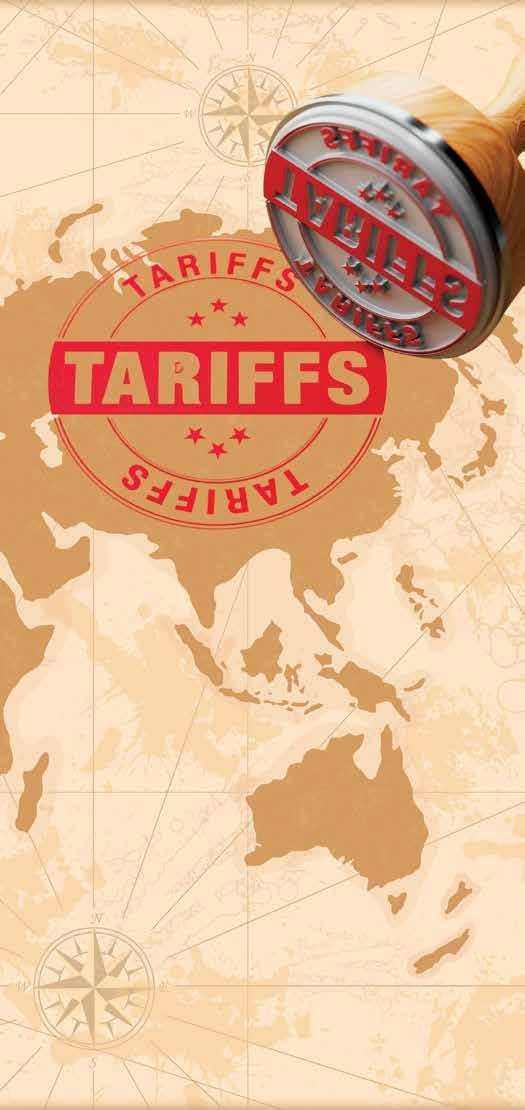
The problem, he explains, is that building optionality is costly in the short term and only pays off in the long term, so it’s common for business leaders to take what he calls “the ostrich approach.” Chopra suggests getting their heads out of the sand, despite the short-term expense.
“My advice to most companies at this stage would be, this is actually a very good time to be thinking about what optionality you should be building,” he says.
Companies should factor in broader shifts in global trade patterns. Chopra says that the U.S. share of global trade will probably shrink, while tariffs between non-U.S. markets such as the United Kingdom and India, or India and the European Union, will likely keep going down.
“Tariffs between the U.S. and other countries will be higher than before,” Chopra says. “Tariffs between other countries will be lower than before. So in a very fundamental way, that is completely different from Covid.”
TAKE A HOLISTIC VIEW
When considering building alternative sourcing, Chopra advises companies to take into account all of the risks they have experienced in the last several years. Tariffs are merely another reason companies must think about how they structure their production.
Chopra was recently in conversation with leaders of a company which had been planning to shut down its plant in China and open a plant in Mexico. They likely won’t reverse that decision overnight due to the new U.S. tariffs on products from Mexico, according to Chopra.
“Even with the tariffs, the math doesn’t change,” he says. “So don’t let tariffs be the sole driver. Think of them as an additional risk and say, ‘Given these risks, is it worth having more optionality than we currently have?’”
For example, manufacturers of refrigerators and washing machines for the U.S. market have found that it makes sense to make their products in the United States because of the high transportation costs of such products and the improved ability to match supply and demand with local sourcing.
Similarly, many European and Japanese automakers have added production capacity in the United States over the last 20 years, and not because of tariffs. BMW, for one, produces its X5 model for the entire world from the United States.
“When you have such a large market, it makes sense to produce in that market.” i

Sunset Stripped Bare? Unpacking the Reality Behind Netflix's Real Estate Empire
Netflix’s hit series SellingSunset offers a glossy glimpse into the rarefied world of Los Angeles luxury real estate. But beyond the staged drama and million-dollar listings, how accurately does it capture the intricacies, challenges, and realities of this hyper-competitive market?
The sun-drenched hills of Los Angeles have long held a near-mythical allure. Hillside mansions with sweeping views, sprawling estates steeped in stories of Hollywood royalty and tech fortunes, and a skyline punctuated by architectural ambition form the backdrop of one of the world’s most glamorous property markets. Here, multimillion-dollar transactions are the norm, and the agents brokering them are as much a part of the spectacle as the homes themselves.
Since its debut in 2019, Selling Sunset has captivated a global audience with its potent blend of luxury property tours, interpersonal drama, and aspirational lifestyles. The series follows the agents of The Oppenheim Group as they navigate this rarefied space, moving between the Hollywood Hills, Beverly Hills, and Bel Air. Viewers see homes meticulously staged, open houses executed with theatrical flair, and complex deals taking shape – all against a backdrop of rivalries, alliances, and personal intrigue.
For many, the series offers a tantalising invitation into a world otherwise inaccessible. The scale of the homes – often boasting infinity pools, cuttingedge amenities, and eight-figure price tags – is intoxicating. The agents, with their high-fashion wardrobes and relentless ambition, embody the energy of a market where fortunes can be made in a single deal. Yet the question remains: does Selling Sunset deliver genuine insight into the Los Angeles property market, or is it a carefully curated illusion?
THE GLAMOUR AND THE GRIND
One of the series’ defining traits is its focus on opulence – designer wardrobes, exotic trips, champagne-fuelled events. While top Los Angeles agents can indeed command substantial earnings, the show often underplays the grind underpinning that success.
The realities of securing listings, cultivating client relationships, analysing market data, and
"The concentration on ultra-luxury listings can also distort perception. The high-end segment is significant but represents only a fraction of the city’s real estate activity."
negotiating under pressure are often condensed into minutes of screen time or sidelined in favour of more dramatic narratives. The triumphs –closing a record-breaking sale – are celebrated, while the failures, delays, and hard graft required to get there are largely invisible.
The concentration on ultra-luxury listings can also distort perception. The high-end segment is significant but represents only a fraction of the city’s real estate activity. Most transactions involve mid-range properties catering to a broad spectrum of buyers and sellers. By focusing almost exclusively on the top tier, the show presents a narrow – if alluring – slice of the market.
RELATIONSHIPS, RIVALRIES, AND REPUTATION
Much of Selling Sunset’s appeal lies in the interplay between its cast members – shifting alliances, personal conflicts, and romantic subplots. While relationships do matter in real estate, the constant interpersonal tension appears heightened for television.
In reality, reputation is one of an agent’s most valuable assets. Repeat business and referrals are the lifeblood of long-term success, and cooperation – even among competitors – is more common than the show suggests. Still, the emphasis on personal branding is accurate: in an increasingly digital marketplace, an agent’s

social media presence and personal image can be as critical as their negotiation skills.
MARKET FORCES IN
THE BACKGROUND
The programme provides striking visuals of open houses and property tours but rarely unpacks the economic and regulatory forces shaping the market. Interest rate fluctuations, inventory shortages, zoning changes, and neighbourhood trends are integral to pricing and demand – yet these receive minimal attention.
Similarly, while the series showcases headlinegrabbing asking prices, it seldom explores valuation methods, negotiation strategies, or the prevalence of price adjustments. Buyers’ perspectives, including the challenges of securing financing or prevailing in bidding wars, are largely absent.
ARCHITECTURE AND LOCATION AS CHARACTERS
Where Selling Sunset does excel is in its visual celebration of Los Angeles architecture and neighbourhood character. The series takes viewers inside homes defined by bold design and cutting-edge features, offering an informal portfolio of the city’s most exclusive enclaves. Even without explicit commentary, the backdrop conveys the unique appeal of areas from the Hollywood Hills to the Pacific Palisades.

DRAMA AS A SELLING TOOL
It is important to remember that SellingSunsetis a reality show – a hybrid of fact and productioncrafted narrative. Storylines are shaped for pacing and engagement, with heightened drama ensuring viewer retention. The agents are real, and the properties exist, but the framing is designed to entertain rather than instruct.
WHERE IT RINGS TRUE
Despite the embellishments, the series does capture key truths about the Los Angeles luxury property market:
• High stakes and significant rewards are inherent in ultra-premium sales.
• Competition among agents is fierce, and securing a listing is a victory in itself.
• Presentation – from staging to marketing – can make or break a sale.
• Personal branding is increasingly essential in a crowded market.
ENTERTAINMENT OVER EDUCATION
Ultimately, Selling Sunset delivers on spectacle but only partially on substance. It offers viewers a visually compelling introduction to a rarefied segment of the market but omits the broader complexities and daily challenges that define real estate in Los Angeles.
For a true understanding of the sector, serious investors and observers would be better served by comprehensive market analyses, detailed regulatory briefings, and the nuanced insights of seasoned professionals. The platinum curtain
of Selling Sunset may part just enough to intrigue, but the full story of Los Angeles real estate – complex, competitive, and often far less glamorous – lies well beyond what is presented on screen. i Image:VanityFair
The Oppenheim Group: Who's Who in LA's Luxury Real Estate Scene
Selling Sunset revolves around the glamorous agents of The Oppenheim Group, a high-end real estate brokerage specializing in luxury properties across Los Angeles. Here's a quick introduction to the key players:
• Jason and Brett Oppenheim: Twin brothers and the owners of The Oppenheim Group. They are fifth-generation real estate brokers and oversee the operations of the agency.
• Chrishell Stause: A former actress, Chrishell is known for her work on soap operas before transitioning to real estate. She's a prominent figure in the show, navigating both her career and personal life in the spotlight.
• Mary Fitzgerald: One of the senior agents at the O Group, Mary has a close professional and personal relationship with Jason. She's known for her strong work ethic and ability to close deals.
• Amanza Smith: A real estate agent and interior designer, Amanza brings a unique perspective to the team. She's known for her vibrant personality and dedication to her clients.
• Emma Hernan: A former model and entrepreneur, Emma is a successful real estate agent with a strong connection to the Los Angeles social scene.
• Chelsea Lazkani: A British-Nigerian luxury real estate agent, Chelsea brings a fresh perspective and a competitive edge to the Oppenheim Group.
• Nicole Young: One of the agency's longeststanding and top-producing agents, Nicole joined the main cast in later seasons.
• Bre Tiesi: A real estate agent with a background in modelling, Bre is known for her high-profile connections and confident approach to the luxury market.
Selling Sunset: Bitchiness, Brokenness, or Just Good TV?
Is there a deeper reason for the cattiness we see on screen?
Selling Sunset — the name alone conjures images of sun-soaked Los Angeles, multi-million-dollar mansions, and a cast of impeccably dressed real estate agents. But behind the luxury façade lies a workplace that often resembles a viper’s nest. The Netflix hit is as famous for its interpersonal feuds as it is for its sweeping property shots. Accusations of backstabbing, bullying, and outright bitchiness are as common as champagne toasts, prompting viewers to ask: what’s really going on?
The women of SellingSunset make compelling television. They are ambitious, driven, and successful, navigating an industry where appearances matter as much as results. Yet they are also locked in frequent conflict, from petty gossip to high-stakes confrontations. Is this simply drama engineered for ratings — or does something deeper fuel the on-screen hostility?
A GLIMPSE BEHIND THE GLOSS
Some suggest the cast’s behaviour is shaped, at least partly, by their personal histories. Several have spoken openly about difficult backgrounds and painful life events.
Chrishell Stause has described a turbulent upbringing marked by instability and financial hardship, with her divorce from actor Justin Hartley unfolding in front of the cameras. Amanza Smith has candidly shared the challenges of raising children alone after her exhusband’s disappearance. Mary Fitzgerald has also discussed past relationship trauma.
Psychotherapist Dr Jenn Mann believes such experiences can shape how individuals navigate conflict. “When people have endured significant pain, they may develop coping mechanisms that aren’t always healthy,” she explains. “This can include lashing out, being overly competitive, or forming alliances for self-protection.” Still, she cautions against drawing direct lines between past trauma and present behaviour: “Everyone processes experiences differently — no single narrative explains it all.”
THE REALITY OF REALITY TV
It’s equally important to remember that Selling Sunset is designed as entertainment. Conflict
is a proven ratings driver, and reality shows are often edited to heighten drama. Scenes may be selectively cut, conversations reframed, and storylines shaped to keep audiences hooked.
“There’s a performative element,” notes media psychiatrist Dr Carole Lieberman. “The women know that drama gets screen time, so tensions can be amplified or even provoked.” Prolonged filming in high-pressure situations — often in close quarters — adds fuel to the fire.
Jason Oppenheim, owner of The Oppenheim Group, has acknowledged that while the show’s conflicts are real, certain situations are deliberately magnified for dramatic impact. The result is a portrayal of the workplace that, while grounded in truth, is far from the whole story.
THE AMERICAN DREAM… OR NIGHTMARE?
There’s also the broader cultural backdrop to consider. Los Angeles is a city steeped in ambition, competition, and the relentless pursuit of success. In the luxury property market, where commissions can reach six or seven figures, the pressure to outperform is immense.
Dr Drew Pinsky links this to a “win-at-all-costs” mentality: “In a culture that prizes success above all else, competition can become aggressive and even cutthroat.” For women in particular, the dual pressure to excel professionally and maintain an image of perfection can lead to heightened insecurity — and, at times, defensive behaviour.
The city’s obsession with image adds another layer. Unrealistic beauty standards and the need to project an aura of wealth and influence can be exhausting, fostering environments where rivalries flourish and tensions simmer.
A LAYERED REALITY
So, are the cast members’ spats born of unresolved trauma, reality TV manipulation, or the high-pressure culture of Los Angeles? The answer is likely a combination of all three. Personal histories can make people more sensitive to conflict. The demands of reality television encourage performance and amplify tension. And the competitive, image-driven nature of LA real estate provides fertile ground for rivalry.

What keeps audiences watching is not just the drama but the moments of vulnerability, resilience, and camaraderie that break through. Selling Sunset may be known for its cattiness, but it also offers glimpses of genuine connection — proof that even in the most competitive arenas, humanity still shines through. i
The Post-Pandemic Pendulum: Navigating a World Transformed
The COVID-19 pandemic acted as an accelerant, forcing abrupt changes to work, technology, society, and geopolitics. Its enduring legacies are complex — some positive, others more troubling — and they continue to shape a world in flux.
The year 2020 is indelibly etched into the global consciousness — a marker of rupture on a scale few living had experienced. A microscopic virus triggered cascading effects that touched every facet of life. Businesses closed, supply chains buckled, and human interaction migrated to screens. “Normal” became an abstract concept.
Several years on, the acute crisis has passed, but the pandemic’s impact persists in altered economic models, geopolitical dynamics, and societal attitudes. Understanding these changes — and their mixed consequences — is essential for navigating what comes next.
DIGITAL TRANSFORMATION: CATALYST AND CAUTION
The most immediate effect of the pandemic was the hyper-acceleration of digital adoption. Forced into remote operations, organisations and individuals embraced technology at unprecedented speed. E-commerce surged, opening access to goods and services for those in remote locations or with mobility limitations. Video conferencing and collaboration tools became indispensable, sustaining work, education, and personal connections. Telemedicine shifted from niche to mainstream, improving healthcare access for many, though raising questions about equity and the limits of virtual care.
Yet this leap forward exposed and, in some cases, widened the digital divide. Those without reliable internet or adequate digital literacy risked exclusion from services, education, and work. Cybersecurity vulnerabilities multiplied as sensitive data moved online, and privacy concerns deepened. Constant connectivity blurred work-life boundaries, fuelling burnout. The initial enthusiasm for remote work has, for some, given way to renewed appreciation for the structure, camaraderie, and spontaneous creativity of in-person collaboration.
WORK TRANSFORMED: FLEXIBILITY WITH FRICTION
The pandemic’s enforced remote-work experiment demonstrated that many roles could be performed effectively outside traditional office settings. Hybrid work models, combining remote and in-office days, are now widely adopted, offering employees greater flexibility over schedules and locations. Benefits include
improved work-life balance, reduced commuting time and costs, and expanded recruitment pools untethered from geography.
However, these arrangements present cultural and operational challenges. Maintaining cohesion and a shared sense of purpose among dispersed teams requires deliberate effort. Ensuring fair access to opportunities for remote and on-site staff, managing productivity without invasive monitoring, and fostering innovation without casual encounters demand new leadership skills.
The gig economy, already expanding prepandemic, accelerated as businesses sought flexible staffing and individuals sought alternative income streams. This shift has created opportunities but also raised concerns over job security, benefits, and worker protections. The long-term impact on urban centres, many of which relied on commuter footfall for economic vitality, is still emerging.
GLOBALISATION’S STRESS TEST
The pandemic revealed the fragility of interdependent supply chains. Border closures, production stoppages, and sudden spikes in demand caused shortages and price volatility. These shocks have prompted a reassessment of single-source suppliers and just-in-time inventory practices, leading to increased interest in reshoring, nearshoring, and supplier diversification.
Geopolitically, COVID-19 accelerated trends towards multipolarity and intensified competition between major powers. Early competition for medical supplies and vaccines exposed vulnerabilities and fuelled nationalist responses. Disputes over vaccine distribution and intellectual property further strained relations. While the crisis highlighted the need for global cooperation in confronting shared threats, it also underscored the difficulty of achieving meaningful multilateralism in a fragmented political environment. The trajectory of global trade and the future architecture of globalisation remain unsettled.
SOCIAL EXPOSURES: INEQUALITY AND MENTAL HEALTH
The pandemic magnified existing inequalities. Frontline workers — often in lower-paid roles — bore disproportionate risks. Vulnerable

communities, already facing poverty and limited access to healthcare, suffered more severe health and economic consequences. Disparities in infection rates and mortality among racial and ethnic groups forced deeper scrutiny of systemic inequities.
The psychological toll has been profound. Isolation, health fears, financial uncertainty, and bereavement have contributed to widespread anxiety, depression, and burnout. While awareness of mental health has increased and stigma has begun to recede, access to affordable, quality care remains uneven.
For many, the crisis also prompted a reevaluation of priorities and purpose. Confronted with mortality and stripped of routine distractions, individuals reconsidered their relationships, careers, and definitions of success. This introspection was a factor in the “Great Resignation,” as workers left

roles that no longer aligned with their values or aspirations.
ENVIRONMENTAL AWARENESS: OPPORTUNITY AND REGRESSION
Initial lockdowns offered a glimpse of environmental reprieve: reduced travel and industrial activity brought cleaner air and quieter cities. These improvements underscored the environmental impact of human activity and sparked calls for a “green recovery.”
However, as economies reopened, emissions rebounded and environmental priorities were often sidelined by immediate economic concerns. The increased use of single-use plastics for hygiene added new environmental burdens. While awareness of ecological interconnectedness has grown, translating that into sustained policy action remains challenging.
LESSONS IN RESILIENCE
The pandemic demonstrated extraordinary adaptability. The rapid development and deployment of vaccines was an unprecedented scientific achievement. Businesses pivoted operations — from manufacturing medical equipment to shifting entirely online — with remarkable speed. Communities rallied to support vulnerable members, revealing reserves of social solidarity.
For organisations, agility, diversification, and investment in digital infrastructure emerged as non-negotiable strategic priorities. Individuals acquired new skills, adapted to altered social and work structures, and found ways to endure prolonged uncertainty.
NAVIGATING THE HYBRID FUTURE
The post-pandemic world is not a return to a pre-2020 baseline but a hybrid reality shaped
by accelerated trends and newly embedded behaviours. For business leaders, navigating this environment demands flexibility, investment in digital and operational resilience, and a focus on employee wellbeing.
Societal expectations have shifted; businesses are now judged not only on profitability but also on their contribution to equity, sustainability, and community. Policymakers face the dual challenge of fostering economic recovery while addressing vulnerabilities exposed by the crisis.
The pandemic’s legacies — the good and the bad — will continue to influence decisions for years to come. The pendulum has swung, and its eventual resting point will depend on how effectively we balance innovation with inclusion, efficiency with resilience, and economic growth with environmental stewardship. i
Digital Health’s Q1 2025 Unicorn Baby Boom: Investors Bet Big on Innovation >
The first quarter of 2025 saw an unprecedented rise in the valuation of digital health startups, with a surge of companies achieving “unicorn” status. Powered by advances in AI, personalised medicine, and remote patient monitoring — and reinforced by strong investor confidence — this ‘unicorn baby boom’ signals a pivotal stage in the sector’s evolution.
The opening months of 2025 have brought a sharp inflection point in digital health, marked by an extraordinary wave of newly minted unicorns — privately held startups valued at $1bn or more. This boom reflects not just surging capital inflows but also growing conviction that digital health technologies are ready to deliver on their transformative potential. Unlike previous hype cycles, the current wave is underpinned by more mature platforms, measurable patient outcomes, and clearer paths to profitability — pointing to a structural trend rather than fleeting enthusiasm.
THE ENGINES OF GROWTH
Several converging forces have driven this acceleration. The steady maturation of core technologies — particularly artificial intelligence (AI), machine learning (ML), and the Internet of Medical Things (IoMT) — has enabled more sophisticated solutions across the care spectrum. AI algorithms are now embedded in workflows ranging from early disease detection and personalised treatment recommendations to optimising administrative processes and accelerating drug discovery. Wearable sensors and connected devices are generating continuous data streams, delivering unprecedented insights to both patients and clinicians.
The rising emphasis on personalised and preventative medicine has further fuelled innovation. Investors are targeting companies harnessing genomics and advanced analytics to tailor treatments and identify health risks before they escalate — a proactive model that promises better outcomes and lower long-term costs.
The adoption of telehealth and remote patient monitoring (RPM), accelerated during the pandemic, has normalised virtual consultations, remote diagnostics, and at-home monitoring. This shift has unlocked new markets for providers able to deliver high-quality care outside hospital settings, including underserved populations and those with chronic conditions.
Finally, significant inflows from venture capital, private equity, and strategic corporate investors — including established healthcare groups — have underpinned the sector’s expansion.
Demographic shifts, rising healthcare costs, and demand for more patient-centric models are reinforcing investor confidence, as are the scaling successes of earlier digital health pioneers.
WHERE THE UNICORNS ARE EMERGING AI and ML in Diagnostics and Therapeutics
ClarityDx, which achieved unicorn status in February, has built an AI-powered imaging platform that supports radiologists in early cancer and critical disease detection. Its algorithms, trained on vast datasets, are improving diagnostic accuracy and speed, enabling earlier interventions. PharmAI, another Q1 entrant, uses ML to accelerate drug discovery by analysing complex biological data to identify promising candidates, predict efficacy and safety, and optimise trial design — cutting development time and cost while addressing unmet medical needs.
Personalised Medicine and Genomics
GeneSight Analytics reached the $1bn threshold in March with genomic testing that predicts patient responses to medication, enabling clinicians to optimise prescriptions, reduce adverse reactions, and improve treatment efficacy. NutriPrecision, also joining the unicorn ranks, applies genetic, lifestyle, and microbiome analysis to design tailored nutrition plans aimed at preventing chronic disease and optimising wellness.
Remote Patient Monitoring and Advanced Telehealth
HealthBridge, which became a unicorn in January, offers a full suite of wearable sensors and analytics for continuous chronic care monitoring, enabling earlier intervention and reducing hospital admissions. VirtualCare Pro has developed an integrated telehealth platform combining AI diagnostics, remote vital sign monitoring, and secure data sharing. Designed for seamless integration with electronic health records (EHRs), it offers a virtual care experience comparable to in-person consultations.
Mental and Behavioural Health Technologies
MindStrong AI, valued at over $1bn in February, applies AI and natural language processing to analyse “digital biomarkers” — subtle patterns in smartphone usage and communication — to detect early signs of depression, anxiety, and other conditions. Its proactive approach aims to enable earlier intervention and improve access to mental health services.
IMPLICATIONS FOR THE HEALTH ECOSYSTEM
The Q1 2025 unicorn surge underscores

the sector’s potential to address structural challenges in healthcare — from rising costs and limited access to the need for more personalised, preventative care.
For patients, this wave heralds more accessible, tailored, and convenient services. Virtual consultations, continuous monitoring, AIassisted diagnostics, and customised care plans empower individuals to take greater control of their health.
For providers, these technologies promise gains in efficiency and clinical accuracy. AI tools can

ease administrative burdens, allowing more time for patient care, while RPM can reduce emergency interventions by enabling proactive management of chronic illness.
At a system level, innovation and capital infusion can drive efficiency, reduce costs, and improve population health. The integration of digital health into mainstream care delivery is no longer speculative; it is a reality gaining momentum.
CHALLENGES AHEAD
The sector’s rapid expansion will test regulatory agility, as frameworks must adapt to keep
pace with innovation while safeguarding safety and efficacy. Data privacy and security are paramount as more sensitive patient information is digitised. Ensuring interoperability across platforms and integration with existing systems is essential to maximise value.
Equitable access also remains a priority. Without targeted efforts to bridge the digital divide, there is a risk that advances will deepen rather than narrow disparities in healthcare.
A DEFINING QUARTER
The Q1 2025 unicorn baby boom marks a
defining moment in digital health’s maturation. Fuelled by technological advances, a global pivot towards personalised, preventative models, and strong investor conviction, these companies are well placed to disrupt entrenched models and redefine care delivery.
The coming years will determine whether they can translate promise into sustainable impact. If they succeed, the first quarter of 2025 may be remembered as the point at which digital health truly came of age — setting the stage for a more accessible, personalised, and efficient healthcare future. i

Down Under, Upside:
Australia's Economic Promise in a Turbulent World
Australia, a land of vast landscapes and vibrant cities, boasts a resilient economy anchored in natural wealth, human capital, and institutional stability. With its strategic position in the Asia-Pacific, the nation is poised to thrive—yet success will depend on how it navigates climate challenges, geopolitical tensions and economic transformation in a rapidly changing global landscape.

Australia is often seen through the lens of sun-drenched coastlines, red deserts and laid-back living. But beneath the postcard images lies a dynamic, globally integrated economy with strong fundamentals and a forward-looking policy framework. The country’s abundant natural resources, highly skilled workforce and robust democratic institutions have long underpinned its prosperity. Combined with a strategic geographic position in the Asia-Pacific—one of the world’s most economically vibrant regions—Australia enters the mid-21st century with formidable potential.
Yet, promise alone does not guarantee progress. As global conditions become increasingly volatile—driven by climate pressures, geopolitical realignment, and structural shifts in trade and technology—Australia’s success will depend on its ability to adapt, innovate and lead.
NATURAL RESOURCES: A HISTORIC DRIVER OF GROWTH
One of Australia’s enduring economic advantages lies beneath its soil. The country is a global mining powerhouse—among the top exporters of iron ore, coal, gold and lithium. These commodities have fuelled growth for decades, helped balance public finances, and served as key trade assets in the Asia-Pacific.
Iron ore, in particular, remains a crucial export to China, while emerging demand for lithium and rare earths positions Australia as a supplier of critical minerals for the global energy transition. The nation is also a significant agricultural exporter, supplying wool, wheat, beef and wine to international markets. This diversity of natural wealth provides a strong base—but it also exposes Australia to global price fluctuations and environmental risks.
HUMAN CAPITAL AND INSTITUTIONAL STRENGTH
Australia’s economic model is reinforced by its human capital. A strong education system, internationally ranked universities and a skilled workforce make the country competitive in advanced industries. Its services sector—including finance, technology, and education—continues to expand, attracting foreign students, talent and investment.
Equally important are Australia’s governance foundations. A stable political environment, independent judiciary and transparent regulatory system create a climate of predictability for business and investment. Australia ranks consistently high on global indices of economic freedom, ease of doing business, and institutional quality—factors that have helped it weather global shocks with remarkable resilience.
STRATEGIC GEOGRAPHY AND TRADE INTEGRATION
Situated at the southern edge of Asia, Australia is uniquely positioned to benefit from the economic rise of China, India, Indonesia and other regional powers. Trade has been a pillar of Australia’s growth model, with free trade agreements securing access to key markets across Asia, Europe and North America.
Bilateral and regional partnerships—such as the Comprehensive and Progressive Agreement for Trans-Pacific Partnership (CPTPP) and free trade deals with China, Japan and South Korea— enhance market access. The country’s proximity to populous and fast-growing economies makes it a natural partner for trade in energy, food, education and services.
Export diversification remains a priority, particularly as geopolitical tensions heighten risks around overreliance on any single partner. Canberra’s evolving Indo-Pacific strategy reflects both economic ambition and diplomatic pragmatism.
RESILIENCE IN THE FACE OF GLOBAL TURBULENCE
Australia’s economic track record is enviable. It avoided recession during the 2008 global financial crisis—a feat unmatched by most developed economies—thanks to strong regulatory oversight and China-fuelled demand for minerals. The economy rebounded swiftly from the COVID-19 pandemic, supported by timely fiscal and monetary responses.
This resilience is not accidental. It stems from sound macroeconomic management, an open economy, and structural flexibility. With low public debt by international standards and a floating currency, Australia has policy space to respond to external shocks.
EMERGING HEADWINDS AND STRUCTURAL RISKS
Nonetheless, Australia’s future is not without significant challenges. Climate change represents both an existential and economic threat. The country is increasingly vulnerable to rising sea levels, extreme weather events, and prolonged droughts—disruptions that directly impact agriculture, tourism, infrastructure and insurance sectors.
Australia also faces intensifying regional competition. As Southeast Asian nations industrialise and India liberalises, Australia must work harder to maintain its relevance in global value chains. In advanced services, innovation and technology, the country will need to continually upgrade capabilities to remain competitive.
Geopolitical uncertainty adds further complexity. Strategic tensions between China and the United States have implications for Australia, given its deep economic ties with both. Navigating these tensions will require deft diplomacy, strategic autonomy and enhanced regional engagement.
Perhaps the most enduring vulnerability is Australia’s continued reliance on commodity exports. While they bring significant revenues, they also expose the economy to demand volatility, price swings and environmental critique. Diversifying into higher-value-added sectors is not just an option—it is a necessity for long-term stability.
PATHWAYS TO PROSPERITY: STRATEGIC PRIORITIES
Australia’s economic future will depend on bold and well-calibrated reforms across key domains.
1. Renewable Energy Transition
As a sun-drenched and windswept continent, Australia has some of the world’s most promising renewable energy potential. Solar and wind power are already expanding rapidly, and investments in green hydrogen, battery storage and transmission infrastructure could position the country as a clean energy superpower. Developing a reliable, low-carbon energy grid will also make Australian exports more attractive in a carbon-constrained world.
2. Innovation and New Industry Development
Fostering a knowledge economy is essential. Australia must deepen investment in research and development, support start-ups, and build ecosystems for digital innovation, biotech, advanced manufacturing and fintech. Leveraging university-industry collaboration and improving access to venture capital will be critical for scaling new sectors.
3. Trade and Diplomatic Engagement
Expanding trade relationships while strengthening diplomatic ties in the Indo-Pacific must remain a priority. Australia has opportunities to build bridges with ASEAN economies, India and Africa. Modernising trade infrastructure, improving port capacity and aligning standards with regional partners will enhance competitiveness.
4. Skills Development and Workforce Transformation
The digital age demands a workforce that is adaptable and skilled. Investment in STEM education, vocational training and lifelong learning will help workers transition into emerging industries. Immigration policy will also play a key role in filling skills gaps and sustaining demographic growth.
5. Sustainable and Inclusive Development
Future growth must be environmentally sustainable and socially inclusive. Protecting natural ecosystems, enforcing environmental standards, and supporting sustainable tourism are vital. At the same time, addressing inequality, improving access to healthcare and education, and empowering Indigenous communities will ensure that prosperity is shared.
A NATION AT A STRATEGIC CROSSROADS
Australia’s economic promise is built on strong foundations—natural endowments, institutional credibility, a skilled population, and regional access. But the global context is shifting. Climate imperatives, digital disruption and geopolitical realignment are redefining what constitutes competitive advantage.
The question is no longer whether Australia can grow, but how it will grow. Will it lean into innovation, decarbonisation and inclusive growth? Or will it remain reliant on the comforts of historical advantage?
The policy choices made today—in infrastructure, energy, education, diplomacy and industry—will determine Australia’s trajectory for decades. If well executed, they will unlock a new era of sustainable prosperity, resilience and global relevance.
In a turbulent world, Australia has the tools and the talent to chart a steady course. The upside is real—but it must be earned. i
> Built on Trust, Powered by Client Commitment: The XMTrading Standard
In the world of trading, trust is the ultimate currency, and transparency is the gold standard.
XMTrading, a broker that embodies both, was recognized with three prestigious honours from CFI.co in 2025: Best Customer Support Global, Outstanding ForexBrokerAsia, and MostTransparent Broker Global. These awards are more than a mark of recognition — they reflect the values that the company has upheld since its inception over a decade ago.
In an oversaturated market, XMTrading has managed to stand out with a presence in more than 110 countries, and a client base exceeding one million traders. The company has earned its reputation as a global broker based on fairness, integrity, and genuine support.
PUTTING PEOPLE FIRST
XMTrading’s recognition for Best Customer SupportGlobal2025reflects the company’s core belief that trader support should be fast, human, and helpful. Even better if it’s multilingual — as they offer support in various languages, delivering timely assistance across time zones. In an industry where service can often feel transactional, XMTrading distinguishes itself through its client-first culture.
A TRANSPARENT APPROACH
The Most Transparent Broker Global 2025 award highlights XMTrading’s unwavering dedication to transparency and fairness. With well-defined offerings, ultra-fast market execution and no hidden fees, the company removes unnecessary complexity and instils confidence. Transparency here is not a marketing point — it is a fundamental operating principle. Full regulatory alignment has been secured as well, as XMTrading is regulated by the Seychelles Financial Services Authority (FSA) and the Mauritius Financial Services Commission (FSC).
EXCELLENCE ACROSS ASIA
The Outstanding Forex Broker Asia 2025 award is a testament to XMTrading’s established presence in one of the most dynamic regions for financial growth. With region-specific service models, tailored support, and exclusive promotions, XMTrading fosters deep trust among Asian traders — while maintaining global reach and consistency across all its operations.
A COMPREHENSIVE TRADING EXPERIENCE
XMTrading is more than just a gateway to the


financial markets — it offers a complete trading experience designed to empower users to achieve their goals faster and smarter. Traders can benefit from copy trading, participate in regular competitions, and take advantage of loyalty programs and attractive promotions.
This is backed by high-speed execution, a wealth of educational resources, and access to over 1,400 instruments across forex, stocks, indices, energies, and more.
Its platforms — including MetaTrader 4 and 5 — are built for speed, efficiency, and ease of use, offering seamless access to traders of every level.
Ultimately, XMTrading’s 2025 awards highlight a broader commitment to delivering an honest, supportive, and empowering trading experience. In a competitive environment where credibility can be fleeting, XMTrading stands out by being consistent, transparent, and responsible. i
Hung Tran and Otaviano Canuto: Asian Economic Integration Led by Trade Liberalisation: A Lesson for Other Regions
As global supply chains are reshaped by geopolitical tensions and economic fragmentation, Asia offers a compelling model of pragmatic regional integration. Its approach to trade liberalisation and economic cooperation offers critical lessons for other developing regions—particularly Africa and Latin America.
Developing countries have limited tools to counter the rising tide of protectionism and uncertainty in global trade. However, regional economic integration presents a viable path forward. Asia, in particular, has demonstrated that proximity, economic complementarity, and cultural familiarity can be harnessed to build a resilient, high-growth economic region.
ASIA’S TRADE-LED INTEGRATION MODEL
Asia has emerged as the world’s largest economic region, accounting for 36.1% of global GDP in nominal terms and 55% in purchasing power parity (PPP)—up from 48% a decade ago. The region contributes 53% of global goods trade and has driven two-thirds of world growth in recent years.
Unlike Europe, which relies on a top-down model underpinned by binding treaties and centralised institutions, Asia has adopted a gradual, bottom-up approach centred on trade and investment liberalisation. While intraregional trade accounts for approximately 65% in both Asia and Europe, Asia has achieved this level of integration without a monetary union or political federation.
EUROPE: INSTITUTIONAL INTEGRATION AND ITS CONSTRAINTS
Europe’s economic integration began with the European Coal and Steel Community (ECSC) and evolved into the European Union (EU), culminating in the eurozone. These institutions have supported peace and prosperity but exposed weaknesses—notably the euro area’s vulnerability to asymmetric shocks and persistent tensions over regulatory harmonisation and fiscal policy.
The absence of a fiscal union and divergent economic structures have triggered periods of instability, notably the eurozone debt crisis of 2010–11. Popular frustration over perceived loss of sovereignty has contributed to rising populism and institutional disputes, evidenced by Brexit and ongoing friction with member states such as Hungary and Slovakia.
"Asia has emerged as the world’s largest economic region, accounting for 36.1% of global GDP in nominal terms and 55% in purchasing power parity (PPP)— up from 48% a decade ago."
ASIA: A PRAGMATIC, MARKET-LED PATH
Asia’s success has stemmed from a pragmatic approach to liberalisation. The region encompasses advanced economies (Japan, South Korea, Taiwan, Australia, New Zealand), high-value service hubs (Singapore, Hong Kong), emerging giants (China, India, ASEAN nations), and resource-rich developing countries.
Rather than imposing supranational governance, Asia has fostered integration through trade liberalisation and capital flows. The 1997 Asian Financial Crisis marked a turning point, prompting greater coordination and the adoption of modern trade agreements.
Key frameworks include:
• Comprehensive and Progressive Agreement for Trans-Pacific Partnership (CPTPP): Established in 2018 and led by Japan following the U.S. withdrawal. With 11 Pacific Rim countries plus the UK, it represents 14.5% of global GDP.
• Regional Comprehensive Economic Partnership (RCEP): Launched in 2022, it is the world’s largest trade pact by GDP and population. It simplifies rules of origin and facilitates crossborder trade among 15 Asia-Pacific economies.
These frameworks support global supply chains, attract FDI, and encourage regulatory alignment without undermining national autonomy.
ASEAN: EVOLUTION WITHOUT CENTRALISATION
Founded in 1967, the Association of Southeast Asian Nations (ASEAN) has expanded to 10 members and advanced regional integration through a series of agreements. ASEAN Vision 2020 and the ASEAN Economic Community (AEC) initiative aim to create a cohesive production base, while agreements such as ATIGA, ACIA, ATISA and various MRAs have strengthened trade, investment and labour mobility.
While intra-ASEAN trade remains modest at around 21–22%—partly due to FDI-driven manufacturing aimed at external markets—the
bloc has made meaningful strides in cross-border infrastructure and policy coordination.
Innovations such as the Local Currency Transaction (LCT) initiative and adoption of ISO 20022-compliant payment systems are helping reduce reliance on major currencies while enhancing financial interoperability. ASEAN’s gradual, modular approach contrasts with the rigidity of the European model.
LATIN AMERICA: UNDERPERFORMING POTENTIAL
Latin America’s regional integration remains limited. Intra-regional trade accounts for less than 20% of the total, and despite frameworks like Mercosur, the Pacific Alliance and CAFTADR, integration has been shallow.
Challenges include:
• Continued dependence on commodities and limited regional value chains.
• Poor infrastructure and geographic fragmentation.
• A legacy of inward-looking industrial policy and high trade barriers.
As Ricardo Hausmann has noted, Latin American countries often produce what their neighbours do not demand—underscoring structural mismatches in production and trade.
Asia’s experience offers actionable lessons:
• Prioritise cross-border infrastructure and transport connectivity.
• Focus on pragmatic sectoral cooperation over large institutional designs.
• Enhance interoperability across financial and labour markets.
• Promote mutual recognition of skills and qualifications to boost mobility.
• Involve the private sector in supply chain integration and regional investment.
AFRICA AND THE AfCFTA: A CRITICAL JUNCTURE
Africa faces similar integration challenges. Although endowed with natural resources and demographic dynamism, intra-African trade remains around 15%, hindered by fragmented markets, weak logistics, and overlapping regional institutions.
The African Continental Free Trade Area (AfCFTA), launched in 2018, marks a pivotal development. Built upon earlier regional efforts such as ECOWAS, COMESA and SADC, AfCFTA aims to establish the world’s largest free trade area by membership.
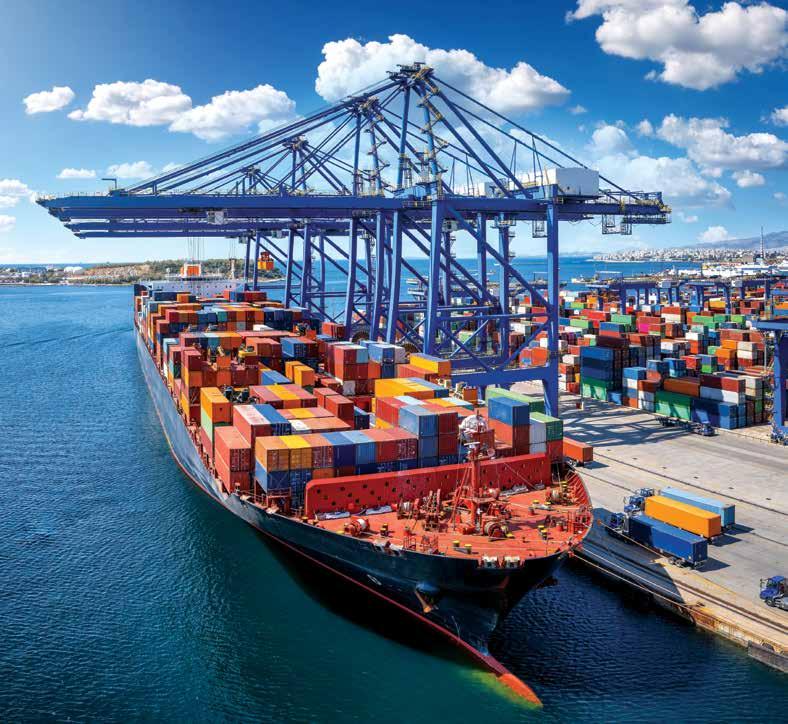
However, implementation remains uneven:
• The African Union lacks fiscal independence to fully support AfCFTA.
• Coordination among regional economic communities remains problematic.
• Key initiatives—such as the African Mineral Development Centre—have not been fully ratified.
Africa’s integration agenda must focus on building regional value chains in agriculture and minerals, developing digital and transport infrastructure, and enabling payment interoperability. According to the World Bank, full implementation of AfCFTA could boost intra-African trade by 104% and increase incomes by 7% by 2030.
Drawing from Asia’s model, Africa can pursue stepwise integration—focusing on standards harmonisation, supply chain coordination, and practical regulatory reforms—rather than rushing towards monetary union or supranational structures.
INTEGRATION BY DESIGN, NOT DEFAULT
Asia’s model of trade-led, pragmatic integration presents a compelling alternative to rigid institutionalism. Its stepwise liberalisation, respect for sovereignty, and emphasis on physical and regulatory connectivity have underpinned its rise as a global growth engine.
Africa and Latin America—though shaped by different histories and geographies—can adapt Asia’s approach to their own contexts. By building sectoral cooperation, enhancing infrastructure, supporting private-sector-led development, and promoting interoperability, both regions can forge stronger, more resilient economic communities.
Integration need not be uniform to be effective—but it must be intentional, datadriven and grounded in mutual benefit. That is the enduring lesson Asia offers to the rest of the world. i
ABOUT HUNG TRAN
Hung Tran is a senior fellow at the Policy Center for the New South and a nonresident senior fellow at the Atlantic Council’s Geoeconomics Center; and a former senior official at the International Institute of Finance and International Monetary Fund.

Author: Hung Tran
> LegalOne: Driving Innovation and Financial Inclusion for National Development
LegalOne Global Limited has established itself as a trusted authority in independent ratings and business intelligence, delivering rigorous research and critical insights to corporate leaders, general counsel, and decision-makers worldwide.
With expertise spanning commercial transactions, dispute resolution, and intellectual property matters, LegalOne ensures that organisations can navigate complexities with precision and confidence while maintaining integrity within financial and legal frameworks.
LegalOne's commitment to excellence and integrity is reinforced by its ISO 9001:2015 Quality Management System Certification, awarded by the International Organization for Standardization. This recognition underscores the company’s dedication to quality, accuracy, and continuous improvement, ensuring that its methodologies align with international best practices. LegalOne applies these stringent standards across its operations, reinforcing consistent evaluation criteria that businesses worldwide rely upon to make informed decisions.
Beyond quality management, LegalOne is recognised by the International Capital Market Association (ICMA) as a signatory to the Code of Conduct for ESG Ratings and Data Product Providers, demonstrating its commitment to transparency and ethical business practices. As sustainability and responsible investing become integral to global financial markets, LegalOne’s adherence to international ESG guidelines enables businesses to align their strategies with ethical financial principles, ensuring regulatory compliance and stakeholder trust.
KNOWLEDGE LEADERSHIP & INDUSTRY INFLUENCE
LegalOne is not only an industry leader in ratings and intelligence—it is also a prominent contributor to knowledge advancement, shaping thought leadership in the corporate sector. Its research publications, including LegalOne Deals of the Year, are archived in national and university libraries, including the United States Library of Congress, The British Library, China National Library, Cambridge Library, Princeton Library, etc., under ISBN 978-988-70486-6-4, ensuring accessibility for scholarly reference, corporate analysis, and industry benchmarking.
LegalOne has also obtained a Digital Object Identifier (DOI: 10.62436), reinforcing its role as an authoritative source in business intelligence. Its collected cases and

transactions have been cited by universities, research institutions, and corporate advisory firms, showcasing the impact of its research within academic, legal, and financial communities.
By integrating cutting-edge analytics with industry expertise, LegalOne has established itself as a go-to resource for organisations seeking independent ratings, governance assessments, and ESG intelligence. Its datadriven methodology enables businesses to identify risks, enhance resilience, and seize opportunities in an increasingly complex global economy.
COMMITMENT TO TRANSPARENCY & FUTUREFOCUSED STRATEGY
LegalOne’s commitment to transparency and ethical governance drives its mission to elevate industry standards across global markets. Through its meticulously researched intelligence, it helps businesses build sustainable frameworks that align with best
practices, ensuring competitiveness while fostering ethical corporate behaviour.
Through its independent evaluations, forwardthinking research, and data-driven insights, LegalOne continues to shape corporate decisionmaking, offering customised business intelligence solutions that enhance strategic planning, investment analysis, and risk mitigation.
LegalOne is committed to developing advanced methodologies and analytical tools that ensure the reliability of its ratings and business intelligence solutions. As industries evolve, LegalOne remains at the forefront, providing insights that empower organisations to adapt, innovate, and excel.
With its dedication to accuracy, governance, and knowledge leadership, LegalOne Global Limited exemplifies the future of independent ratings and business intelligence—where expertise meets integrity and research drives responsible transformation. i
Publisher of LegalOne: Kim Cheung
The MBA Edge: Is Business School Still the Golden Ticket?

In an era of rapid disruption, does the traditional MBA still hold its weight? We explore the enduring value of business graduate degrees, examining their impact on career trajectories, earning potential, and leadership development.
The Master of Business Administration has long been regarded as a passport to the upper echelons of corporate life. For decades, it symbolised ambition and intellectual rigour, producing graduates armed with strategic frameworks, financial expertise, and networks capable of opening boardroom doors. Yet in a business landscape shaped by relentless technological change, shifting economic conditions, and the rise of alternative learning routes, the question persists: is an MBA still worth it?
The degree was once designed to mould leaders for a relatively stable corporate order. Today, volatility and disruption dominate, prompting a reassessment of whether the traditional model retains its power. Despite this, the MBA’s core value proposition remains compelling. Business schools still provide a structured environment where students develop strategic thinking, financial literacy, leadership capability, and the ability to operate under pressure. The academic setting allows them to analyse complex business problems, formulate effective plans, and gain mastery over disciplines from accounting to investment analysis. Leadership potential is tested and refined through case studies, collaborative projects, and immersive experiences, while the connections forged—with fellow students, faculty, and visiting industry leaders—often prove invaluable over an entire career.
The career advantages remain well documented. Studies consistently show that MBA graduates
tend to command higher salaries than their peers without the degree, with the gap often widening over time. The qualification also enhances career mobility, enabling individuals to pivot into new industries, move into senior management roles, or work across borders. Many of the world’s leading employers still target MBA graduates for recruitment, recognising the combination of technical competence, strategic vision, and resilience that such programmes are designed to cultivate.
Yet the context in which the MBA operates has changed dramatically. The rise of artificial intelligence, automation, and digital platforms has transformed business models and introduced entirely new skill requirements. At the same time, the growth of the gig economy is reshaping career paths, making them more fluid and less linear. Prospective students now have access to an expanding range of alternatives, from online executive courses to intensive boot camps and micro-credential programmes that offer faster, cheaper routes to market-ready skills. Added to this is the mounting cost of traditional MBAs, especially those from top-tier institutions, where tuition and associated expenses can easily reach six figures—making return-on-investment analysis more important than ever.
In response, business schools have begun reshaping their offerings. Many now embed technology-focused modules into their curricula, covering areas such as data analytics, cybersecurity, and digital strategy. Entrepreneurship has moved closer to the centre of the MBA experience, with incubators, venture funding, and mentorship programmes available to students aiming to launch their own businesses. Flexible delivery models, including online, hybrid, and part-time programmes, are making it easier for working professionals to
participate without stepping off the career ladder. There is also a growing emphasis on soft skills, such as emotional intelligence and cross-cultural communication, recognising that leadership in a globalised, unpredictable business environment requires more than technical mastery.
The modern MBA still provides a competitive edge, but it is no longer a guaranteed career escalator. It remains a respected credential that signals ambition, discipline, and capability, but the ultimate value depends on how effectively students use the resources available to them. The most successful graduates treat the programme not as an end in itself, but as a platform from which to build, adapt, and expand their influence.
For prospective students, the decision to pursue an MBA should be grounded in a clear understanding of personal career goals and the specific strengths of different programmes. Financial considerations are critical—not just the headline tuition fee, but also the opportunity cost of stepping away from full-time work. Maximising the MBA experience requires full engagement in networking, internships, and extracurricular activities, as well as a willingness to keep learning long after graduation.
While the business environment will continue to evolve at pace, the MBA retains its relevance for those who approach it with purpose and commitment. By combining academic rigour with practical application, and by adapting their curricula to match the demands of the digital age, business schools are ensuring that their graduates remain well positioned to lead in a volatile, opportunity-rich world. For the right candidate, the MBA is still more than a qualification—it is a catalyst for transformation. i
> Driving Digital Transformation: Nepal SBI Bank Leads Nepal’s Banking Revolution
With a pioneering spirit and deep-rooted Indo-Nepalese collaboration, Nepal SBI Bank Ltd. is redefining the banking landscape through cutting-edge digital solutions, strategic partnerships, and a steadfast focus on inclusive, customer-centric services.
Nepal SBI Bank Ltd., established in July 1993 as the first Indo-Nepal joint venture bank, has become a transformative force within Nepal’s financial ecosystem. Born from a strategic alliance between the State Bank of India (which holds a 55% majority stake), Nepal’s Employee Provident Fund, and the General Public, the Bank has successfully combined Indian financial expertise with a deep understanding of local market dynamics.
Over three decades of steady growth have earned Nepal SBI Bank the trust of more than 1.3 million deposit customers nationwide. Operating across 51 districts, it has built an extensive footprint that delivers banking services to a broad cross-section of the population. However, it is the Bank’s commitment to innovation—particularly in the digital space—that sets it apart as a true industry leader.
CHAMPIONING DIGITAL INCLUSION
Nepal SBI Bank has been at the forefront of the country’s digital banking evolution. It was the first bank in Nepal to enable RuPay card acceptance at ATMs and POS terminals, marking a significant milestone not only for digital payments but also for cross-border financial integration. The acceptance of RuPay aligns well with Nepal’s efforts to foster financial inclusion and support its growing tourism economy by easing access to financial services for visiting Indian nationals.
The Bank’s digital offerings are extensive and accessible. Its flagship mobile banking application, YONO Nepal SBI, represents a comprehensive leap into omni-channel banking. The platform goes far beyond traditional mobile banking—integrating investment tools, insurance services, e-commerce, and more into a seamless user experience. Designed to cater to tech-savvy and digitally curious customers alike, YONO Nepal SBI is supported by enterprise-grade security features, including advanced encryption protocols, real-time device integrity checks, and multi-factor authentication.
INNOVATION IN EVERYDAY BANKING
Nepal SBI Bank’s drive for innovation manifests in practical, customer-focused solutions. The bank has introduced online account opening services, allowing users to access banking facilities without visiting a branch—an important development for rural customers and young professionals alike.

Its cardless cash withdrawal service enhances convenience and security at ATMs, while its inapp spend analysis tools help users manage personal finances more effectively.
Through its QR Merchant Acquiring network, the Bank supports small businesses and informal merchants by enabling digital payment acceptance with minimal infrastructure, thereby accelerating Nepal’s transition to a cash-lite economy. This initiative plays a crucial role in expanding the reach of financial services to underserved segments of society, helping bridge the gap between formal banking institutions and grassroots commerce.
STRATEGIC COLLABORATION AND FORWARD-LOOKING VISION
Nepal SBI Bank’s success is also underpinned by strategic partnerships and robust international linkages. Collaborations with global banks and regional financial institutions have strengthened its trade finance and remittance capabilities— vital pillars of Nepal’s economy. These crossborder banking services have facilitated smoother financial flows, making it easier for Nepali expatriates and businesses to operate across boundaries.
Internally, the Bank continues to invest in human capital development, infrastructure upgrades, and process automation. This commitment to institutional resilience ensures that the Bank remains agile and well-prepared to meet the needs of a rapidly evolving financial landscape.
A SUSTAINABLE BANKING MODEL
Nepal SBI Bank’s forward-thinking approach extends to sustainability and governance. The Bank actively promotes responsible banking by integrating ESG (Environmental, Social, and Governance) considerations into its operations. It also maintains transparent governance standards, ensuring long-term value for stakeholders and contributing to national economic development.
GLOBAL RECOGNITION
In recognition of its commitment to modern banking innovation and inclusive digital growth, the CFI.co Judging Panel names Nepal SBI Bank Ltd. the winner of the 2025 award for Champion in Modern Banking Innovation (Nepal). This accolade affirms the Bank’s status as a model institution in South Asia, one that is not only keeping pace with global banking trends but also setting benchmarks in digital inclusion and customer engagement.
As Nepal continues its journey towards a digitally integrated economy, Nepal SBI Bank stands at the vanguard—bridging tradition and transformation with purpose and precision. i
Kathmandu, Nepal: Swayambhunath Temple
The Lost Generation: Echoes of Disillusionment

They came of age in the shadow of global war, their ideals shattered, their futures uncertain. The writers and artists of the Lost Generation forged a new identity in the aftermath of chaos.
The guns fell silent, but the silence was deafening. For those born between 1883 and 1900, the world had been irreversibly altered. World War I, with its unprecedented carnage, tore through the fabric of society, leaving a generation adrift. They became known as the Lost Generation—a term coined by Gertrude Stein and immortalised by Ernest Hemingway—whose collective story was one of disillusionment, defiance, and the search for meaning in a fractured world.
This was the first generation to endure the full force of industrialised warfare. The romantic notions of heroism and honour, so entrenched in the pre-war imagination, dissolved in the mud, blood, and futility of the trenches. Those who returned often found themselves strangers in their own homes, unable to reconcile their lived experience with the values and certainties of their elders. The trauma lingered: some bore visible injuries, others were marked by the invisible wounds of what is now recognised as PTSD. Shell shock haunted their nights, and daylight offered little comfort in a society eager to move on.
Yet their exile was not always geographic. While many—including Hemingway, F. Scott Fitzgerald, and Ezra Pound—sought refuge in Paris, the alienation was also spiritual. The Lost Generation questioned the moral codes, religious doctrines, and faith in progress that had defined their parents’ world. They had seen the folly of nations at war and struggled to build a foothold among its ruins. In Paris’s bohemian enclaves,
"The movement extended beyond literature. Visual artists such as Pablo Picasso, who mingled with these writers in Paris, were similarly breaking from tradition—dismantling classical forms and reassembling reality in jagged, unsettling ways."
they discovered both refuge and reinvention. The French capital, with its vibrant cafés, salons, and relative freedom from American social strictures, offered a stage for experimentation—in art, literature, and life itself. Here, communities of like-minded expatriates pursued new forms of expression and embraced unconventional lifestyles.
It was a generation defined by contradictions. The “Roaring Twenties,” with its jazz rhythms, flappers, and feverish pursuit of pleasure, was in part a rebellion against the grim memories of the battlefield—a bid to wring joy from a world that had revealed its capacity for destruction. Yet the exuberance often masked an emptiness. Fitzgerald’s The Great Gatsby, for all its champagne and glitter, exposes the hollow core of the American Dream. The pursuit of wealth and social status, so central to the decade’s ethos, emerges as a fragile substitute for the ideals the war had destroyed. The bright, frantic energy of the Jazz Age was, for many, a distraction—an attempt to drown out the echoes of the guns.
The Lost Generation was not only a cohort of wounded survivors; it was a creative vanguard. Hemingway’s spare, unadorned prose, T.S. Eliot’s fractured and haunting verse, and John Dos Passos’s collage-like narratives captured the disjointed texture of modern life. Their works reflected alienation, moral ambiguity, and the solitary search for meaning in a world that seemed to have lost its bearings. They rewrote the literary rulebook, stripping away Victorian sentimentality and embracing a modernist sensibility that mirrored the uncertainty of their age.
The movement extended beyond literature. Visual artists such as Pablo Picasso, who mingled with these writers in Paris, were similarly breaking from tradition—dismantling classical forms and reassembling reality in jagged, unsettling ways. The cross-pollination of ideas among writers, painters, and musicians created an artistic ferment that would ripple through decades, influencing disciplines far beyond their original scope. Jazz, with its improvisational freedom, became the era’s soundtrack; painting, poetry, and prose converged in their search for new forms to match a new reality.
The Lost Generation’s legacy is as complex as its contradictions. They were the chroniclers of a world unmoored from its past, but they were also its innovators, determined to make art out of the rubble. Their disillusionment fuelled creativity, producing works that remain timeless in their portrayal of human vulnerability and resilience. In their defiance of convention and their insistence on authenticity, they left a body of work that continues to resonate—reminding us that even in the wake of ruin, the human spirit seeks to create, to connect, and to endure. i






Stalin’s Daughter Finds Fortune and Freedom in US Book Deals
Svetlana Alliluyeva, daughter of Joseph Stalin, defected to the United States and found herself at the centre of a publishing storm. Her memoirs offered a rare view of life as a Soviet insider, while revealing the personal cost of living in the shadow of a tyrant.
Svetlana Alliluyeva’s dramatic defection to the United States in 1967 sent shockwaves across the world. The daughter of Joseph Stalin—one of the 20th century’s most feared leaders—had not only renounced her Soviet citizenship but sought refuge in the very heart of Cold War opposition. The move instantly transformed her into a figure of intense fascination, particularly in the West, where her arrival was hailed as a symbolic victory in the ideological battle between superpowers.
American publishers moved swiftly. Here was a woman uniquely placed to offer insight into the inner workings of the Kremlin, the domestic life of a dictator, and the pressures of growing up in the orbit of absolute power. Beyond the politics, they saw a human drama—one that promised intrigue, tragedy, and the possibility of redemption.
TWENTYLETTERSTOAFRIEND
Her first and most celebrated work, TwentyLetters to a Friend, became an immediate sensation. Presented as a series of personal letters, the memoir blended intimate recollections of family life with reflections on the political system in which she had been raised. It offered glimpses of Stalin not only as a ruler but as a father—by turns affectionate, distant, and terrifying.
The timing could not have been more advantageous. At the height of Cold War tensions, Western readers devoured anything that pierced the Soviet veil, and Alliluyeva’s memoir provided an unprecedented perspective. It humanised a man widely viewed as a brutal autocrat, while also revealing the psychological scars of his rule.
The book’s commercial success was staggering. It became an international bestseller, translated into multiple languages, and secured Alliluyeva a substantial advance—catapulting her into sudden wealth. For a woman accustomed to a relatively restrained life in the Soviet Union, the transition to fame and fortune in America was as disorienting as it was liberating. Public appearances, interviews, and endless media scrutiny became part of her new reality.
ONLYONEYEAR
Encouraged by the success of her debut, Alliluyeva published a second memoir, Only One Year, chronicling her initial experiences in the

PhotographbyGasperTringale
United States. The book provided further insights into her personal transformation, her encounters with American culture, and her evolving views on her homeland.
While Only One Year did not replicate the commercial triumph of TwentyLetterstoaFriend, it still drew significant attention, offering readers a more reflective and at times critical view of life in the West. Yet the novelty of her story was fading, and with it, the intense public interest that had greeted her arrival.
SHIFTING FORTUNES
Over time, Alliluyeva’s relationship with her adopted country became more complicated. She moved frequently, rarely settling for long, and even made a brief return to the Soviet Union before resettling in the West. Her early fortune dwindled, much of it spent or lost through the instability that marked her personal life.
Later attempts at writing and publishing failed to reignite the excitement of her first book deals. The literary market had moved on, and her subsequent works—while still of historical interest—lacked the immediate shock value of her debut. Increasingly, she lived outside the glare of publicity, a more private and elusive figure.
A DEFECTOR’S WORDS
Svetlana Alliluyeva’s American publishing chapter remains one of the most compelling episodes of her life. Her memoirs not only secured her financial independence—at least temporarily—but also preserved a rare personal account of life at the heart of the Soviet elite. They stand as valuable historical records, blending political insight with the raw perspective of a daughter grappling with the legacy of her father’s rule.
Her story also reflects the broader trajectory of many defectors: initial celebration and opportunity, followed by the challenge of carving out a lasting identity between two worlds. Alliluyeva’s writings illuminate the complexities of exile, the limits of fame as a form of freedom, and the enduring struggle to reconcile past and present.
In the end, her words offered a human counterpoint to political propaganda, providing Western audiences with a deeply personal lens on a regime they had only known from the outside. They continue to resonate, a reminder that even the most infamous figures in history leave behind children—and that those children, too, carry the burden of that legacy. i
The Man Who Broke the Ruble: The Contentious Legacy of Viktor Gerashchenko >
Viktor Gerashchenko, who died on May 11, 2025, was a central banker of immense influence in Russia, serving at critical junctures in its economic history. His career, spanning the collapse of the Soviet Union and the turbulent transition to a market economy, is marked by periods of both crisis and recovery. He earned the moniker "the world's worst central banker" for his role in the "Black Tuesday" Ruble crash of 1994, yet he also oversaw a period of relative stability after the 1998 financial crisis. His legacy remains a subject of intense debate among economists and historians.
Viktor Vladimirovich Gerashchenko, a towering figure in Russian banking, passed away at the age of 87. His death closes a chapter on a career that intertwined with some of the most dramatic economic upheavals in Russia's history. Gerashchenko's tenure as head of the Russian central bank, the Bank of Russia, was marked by both periods of deep crisis and unexpected stability, earning him a place in history as one of the most controversial and influential central bankers of the modern era.
Born in Leningrad (now Saint Petersburg) on December 21, 1937, Gerashchenko hailed from a family with deep roots in the Soviet financial system. His father was a prominent banker, holding key positions within the Soviet financial bureaucracy. This lineage paved the way for Gerashchenko's own ascent through the ranks of the Soviet banking system. He graduated from the Moscow Finance Institute, and his early career saw him hold positions in various Soviet banks, including a significant stint at the Moscow Narodny Bank in London. His early exposure to international finance would later prove crucial in navigating Russia's complex integration into the global economy.
Gerashchenko's career trajectory saw him rise to become Chairman of the USSR State Bank (Gosbank) in 1989, a position he held until the dissolution of the Soviet Union in 1991. This role placed him at the heart of the Soviet Union's crumbling economic system, as it grappled with increasing instability and the challenges of perestroika. He was the last head of Gosbank, presiding over the institution during its final, turbulent years.
The collapse of the Soviet Union ushered in a period of profound economic transformation for Russia. The transition from a centrally planned economy to a market-based system was fraught with challenges, including hyperinflation, economic instability, and the emergence of a new financial landscape. It was in this chaotic environment that Gerashchenko's actions as a central banker came under intense scrutiny.
Gerashchenko's first tenure as head of the Central Bank of Russia began in 1992. This period was characterised by a lack of clear economic policy direction, and the bank's actions were often seen as contributing to the hyperinflation that plagued the Russian economy. Critics argued that Gerashchenko's policies, including the provision of large credits to state-owned enterprises, fuelled the inflationary spiral and undermined the fragile stability of the nascent market economy.
The most infamous episode of this period was the "Black Tuesday" of October 11, 1994. On this day, the Russian Ruble experienced a dramatic and sudden collapse, losing a significant portion of its value against other currencies. The crash sent shockwaves through the Russian economy, eroding public confidence and exacerbating the economic uncertainty of the time. Gerashchenko was widely blamed for this crisis, with critics pointing to the central bank's monetary policies and lack of effective currency management as contributing factors.
The "Black Tuesday" crash led to Gerashchenko's resignation later that year. His departure was seen by many as a necessary step towards

restoring confidence in the Russian financial system and implementing more orthodox economic policies. The period that followed saw attempts to stabilise the Ruble and bring inflation under control, though these efforts were often hampered by political instability and economic challenges.
However, Gerashchenko's time out of the central bank was relatively short-lived. In the aftermath of the 1998 Russian financial crisis, he was once again appointed to the position of Governor of the Bank of Russia. The 1998 crisis was a major economic shock, marked by a default on Russia's sovereign debt and a sharp devaluation of the Ruble. The crisis exposed the vulnerabilities of the Russian economy and led to a period of deep recession.
Gerashchenko's return to the central bank in the wake of this crisis was met with scepticism by many observers. His previous track record, particularly his association with the 1994 Ruble crash, raised concerns about his ability to effectively manage the crisis and restore stability to the economy. However, his second tenure at the helm of the Central Bank proved to be surprisingly successful.
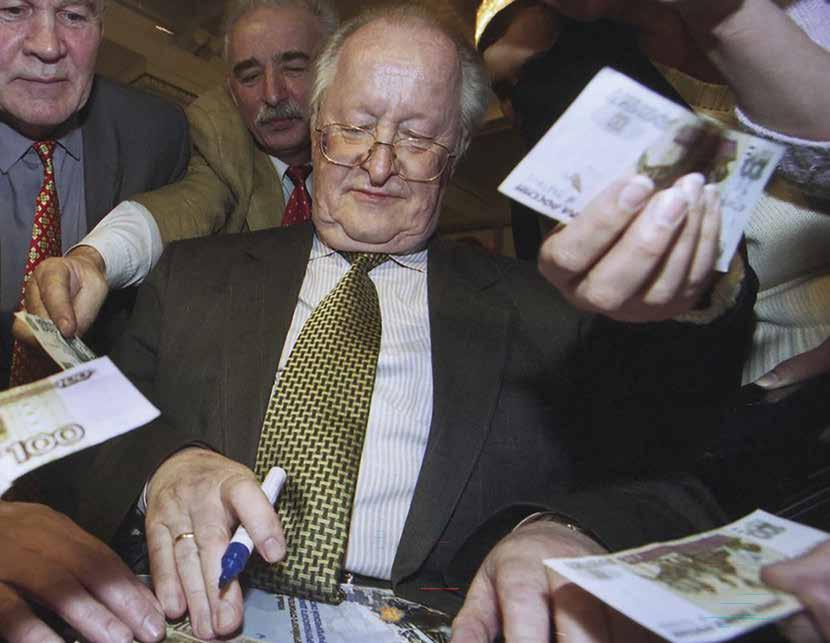
Under Gerashchenko's leadership, the Russian economy experienced a relatively rapid recovery from the 1998 crisis. Several factors contributed to this recovery, including a rise in global oil prices, which boosted Russia's export revenues, and a more pragmatic approach to monetary policy. Gerashchenko's critics acknowledge that he oversaw a period of relative stability and economic growth, though they often attribute this success to external factors rather than his own policies.
Despite the economic recovery, Gerashchenko's tenure was not without controversy. He faced criticism for his perceived reluctance to implement deeper structural reforms in the Russian banking sector and for his close ties to powerful financial interests. His approach was often characterised as pragmatic and politically astute, but also lacking in transparency and accountability.
Gerashchenko's legacy is complex and multifaceted. He is remembered both as the central banker who presided over one of Russia's most dramatic currency collapses and as the one who steered the economy through a period of recovery. He was a survivor, navigating the
treacherous political and economic landscape of post-Soviet Russia with a combination of shrewdness, pragmatism, and a deep understanding of the inner workings of the Russian system.
His critics, most notably Harvard economist Jeffrey Sachs, labelled him "the worst central banker in the world," citing his role in the 1994 Ruble crash and his perceived resistance to market-oriented reforms. This characterisation, while harsh, reflects the deep frustration felt by many Western economists and policymakers with the slow pace of economic reform in Russia during the 1990s.
However, Gerashchenko also has his defenders, particularly within Russia. Many Russians remember him for his dry wit, his occasional defiance of Western economic orthodoxy, and his perceived ability to navigate the turbulent waters of the post-Soviet era. Some argue that he was a pragmatist who acted in the best interests of Russia, given the difficult circumstances he faced.
After leaving the central bank in 2002, Gerashchenko remained active in Russian public life. He served as chairman of the board of the oil
company Yukos for a time, and he also entered politics, serving as a member of the State Duma. His later career reflected his continued influence and his ability to adapt to the changing political landscape of Russia.
Viktor Gerashchenko's career as a central banker spanned a period of immense change and upheaval in Russia. He was a key figure in the country's transition from communism to capitalism, a transition marked by both opportunities and profound challenges. His actions as head of the Central Bank of Russia had a significant impact on the lives of millions of Russians and on the trajectory of the Russian economy.
His legacy remains a subject of intense debate. He is remembered both for his failures and his successes, for his role in periods of crisis and periods of stability. He was a complex and controversial figure, a product of his time and a key player in the drama of Russia's post-Soviet transformation. Whether he is remembered as the "world's worst central banker" or as a pragmatic survivor who steered Russia through a turbulent period, there is no doubt that Viktor Gerashchenko left an indelible mark on the history of Russian finance. i
The Unreachable Stars: When Jiro’s Pursuit of Perfection Cost Michelin’s Acclaim
Sukiyabashi Jiro, the legendary Tokyo sushi restaurant immortalised in Jiro Dreams of Sushi, once held three Michelin stars and the unwavering devotion ofgourmandsfromaroundtheworld.Thisisthestoryof whythepubliccannolongersecureaseatatitshallowed counter, the unique business model that underpins its enduringmystique,andthesurprisingconsequenceofits exclusivity:thelossofitscovetedstars.
For years, Sukiyabashi Jiro in Tokyo’s Ginza district stood as the culinary Everest for sushi aficionados. Its ten seats, arranged with precision before the quietly commanding figure of Jiro Ono – then in his nineties – were the ultimate prize. Securing a reservation was akin to winning a small lottery, often requiring the intervention of elite hotel concierges or well-connected patrons months in advance. The experience, chronicled in David Gelb’s acclaimed 2011 documentary Jiro Dreams of Sushi, painted an intimate portrait of relentless dedication, unyielding standards, and a culinary artistry that elevated sushi beyond food into something approaching ritual.
But in 2019, a quiet yet decisive change altered the restaurant’s place in the global dining landscape. Sukiyabashi Jiro stopped accepting reservations from the general public. The decision was not a sign of waning ambition or declining craft, but rather a deliberate shift in operations. Increasing demand from tourists and high-profile visitors had created logistical challenges, and the Ono family sought a system that would allow them to focus entirely on the dining experience without being consumed by administrative complexity.
From that point forward, bookings could only be made through the concierge services of select luxury hotels. For many, this policy placed Jiro’s counter completely out of reach. The oncedifficult process of securing a seat became, for all but the wealthiest or most connected travellers, an impossibility.
THE MICHELIN VERDICT – STARS LOST, NOT EARNED
The operational change had an immediate and highly public consequence. In the 2020 edition of the Michelin Guide Tokyo, Sukiyabashi Jiro
was removed from the starred listings. The reason was not a critique of its cuisine or service – by all accounts, both remained exceptional –but rather a matter of accessibility. Michelin’s policy is to rate only those restaurants that the general public can book. With Jiro’s counter now effectively closed to ordinary diners, it fell outside the guide’s scope.
For a restaurant that had held three stars for over a decade – the highest accolade in Michelin’s system – the removal was a historic moment. In an industry where stars can dramatically shape reputation, the idea of voluntarily stepping outside that system was as provocative as it was strategic.
EXCLUSIVITY AS A BUSINESS MODEL
To understand why Sukiyabashi Jiro embraced such extreme exclusivity, it is necessary to examine the philosophy that has always guided its operations. Since opening in 1965, the restaurant’s ethos has rested on three pillars: uncompromising quality, a tightly controlled environment, and a dining experience as much about personal connection as about food.
Quality has always been the lodestar. Jiro’s approach to sourcing is uncompromising – tuna from trusted suppliers at Tsukiji (and later Toyosu) market, seasonal shellfish at peak freshness, rice polished to a precise grain temperature. Each step, from the slicing of fish to the pressure applied in shaping a piece of nigiri, is done with exacting consistency. The result is a standard that cannot be met without intense focus, and focus is best preserved in an environment free of unnecessary distractions.
The counter format is equally central. With only ten seats, the chef can observe each diner, adjust

pacing, and deliver sushi at the precise moment when rice and topping are in perfect harmony. High turnover and unfamiliar faces can disrupt this delicate choreography.
Efficiency is another hallmark. The omakase menu is a streamlined progression of roughly 20 pieces of nigiri, each representing the pinnacle of its ingredient’s potential. There are no appetisers, no hot dishes, and no digressions from the singular mission of crafting perfect sushi. This narrow scope allows for depth of mastery.
Scarcity, intentional or otherwise, has long been part of Jiro’s appeal. Long before the 2019 change, the restaurant’s limited capacity and its reputation for transformative sushi experiences created months-long waits. By partnering with luxury hotels for reservations, the Ono family amplified scarcity while ensuring that each seat was filled by diners who were both prepared for and appreciative of the experience.
MEASURING “SUCCESS” UNDER THE NEW RULES
Whether this strategy is “working” depends on the metrics used. Financially, it is plausible that the model is as strong – or stronger – than before. Prices that can exceed ¥40,000 per person, coupled with full bookings arranged through reliable concierge channels, eliminate the risks of last-minute cancellations and no-shows. The

clientele, drawn from the ranks of global highnet-worth travellers, brings both spending power and prestige.
From a culinary prestige perspective, the loss of Michelin stars might appear a setback. For many chefs, three stars are the ultimate validation of their craft. Yet Sukiyabashi Jiro occupies a rarefied space in the cultural consciousness. The restaurant’s reputation, cemented by decades of acclaim and amplified by the documentary, arguably transcends the Michelin system. For some diners, the very fact that the counter is inaccessible to most has only heightened its allure.
In terms of accessibility, the impact is clear: the vast majority of people who dream of eating at Sukiyabashi Jiro will never have the opportunity. This exclusivity raises broader questions about the role of elite dining in a world increasingly concerned with inclusivity and cultural exchange. Critics argue that by closing its doors to ordinary diners, the restaurant risks becoming a museum piece – revered but detached from the broader evolution of cuisine.
LIFE BEYOND THE STARS
Despite the formal absence from Michelin’s pages, Sukiyabashi Jiro continues to attract a steady stream of global notables – business
leaders, heads of state, and celebrities – whose visits perpetuate its legend. Those who have secured seats describe an unchanged ritual: the quiet, almost reverent atmosphere; the seamless presentation of each course; the subtle nod or glance from Jiro or his son, Yoshikazu, signalling readiness for the next bite.
For many diners, the value lies not only in the taste but in the sensation of participating in something ephemeral and unrepeatable. Each meal is a performance with no encore, shaped by the exact conditions of the day – the season, the catch, the mood of the chef.
A CASE STUDY IN PRESTIGE AND TRADE-OFFS
Sukiyabashi Jiro’s evolution offers a compelling case study for the luxury hospitality industry. It shows that a brand with sufficient cultural capital can redefine success on its own terms, even if that means relinquishing accolades that others pursue for decades. It also underscores a truth long evident in the luxury market: exclusivity, when paired with impeccable quality, can sustain demand even in the absence of traditional marketing or media visibility.
Yet there is an inherent trade-off. In exchange for operational control and the ability to curate its clientele with precision, the restaurant has accepted its separation from the broader
public sphere of fine dining. It remains to be seen whether this model will inspire other elite establishments to follow suit or whether it is a singular product of Jiro Ono’s extraordinary personal brand.
THE ENDURING MYSTIQUE
More than half a century after opening its doors, Sukiyabashi Jiro remains one of the most talkedabout restaurants in the world – even if most conversations take place far from its counter. For those who do sit before the chef, the experience is a distillation of a lifetime’s pursuit of perfection, unaltered by the shifting tides of culinary fashion.
The loss of Michelin’s highest accolade did not diminish the mastery behind each piece of sushi, nor did it dull the aura surrounding Jiro Ono’s name. Instead, it marked a turning point – a conscious step away from the structures that once celebrated it, toward a model that serves the chef’s vision and chosen audience above all else.
The unreachable stars still shine over Sukiyabashi Jiro. They no longer belong to the Michelin Guide, but to a constellation of memories shared by a select few who have experienced the sushi master’s artistry firsthand. For them, and for the legend of Jiro itself, that may be the highest form of perfection. i
China’s Silver
Bullet: How 'Silver Trains' Could Boost the Economy
As the world’s most populous nation confronts an ageing demographic and navigates economic headwinds, including trade tensions with the US, an innovative solution is emerging: “silver trains.” These specialised rail services, tailored to the needs of senior citizens, are more than just a novel approach to tourism; they represent a strategic manoeuvre to stimulate domestic consumption and unlock the vast potential of China’s “silver economy.”
China is embarking on a journey that could redefine the relationship between transport, tourism and economic development. As the country grapples with a rapidly ageing population and seeks to counterbalance external pressures — particularly US tariffs — it is turning to an unconventional yet potentially transformative idea: “silver trains.” These are not merely upgraded carriages, but bespoke rail services designed around the needs, comfort and leisure preferences of senior citizens.
The initiative’s significance lies in its dual function: to address the demands of a growing senior demographic while stimulating domestic consumption and energising the so-called “silver economy” — the network of industries catering to older adults. This sector is expected to expand rapidly. Estimates suggest the value of China’s silver economy could reach 30 trillion yuan (about $4 trillion) by 2035, representing a substantial share of GDP.
Demographics Driving Demand
China’s demographic shift is the product of longterm trends. The one-child policy, in force from the late 1970s until its relaxation in the mid-2010s, slowed population growth but has left the country with a shrinking workforce and a fast-expanding elderly population. By the end of 2023, more than 310 million people — over 22 per cent of the population — were aged 60 or above.
This shift creates multiple pressures. Social security and healthcare systems are under strain from increased pension liabilities and rising medical costs. The smaller working-age population risks constraining economic growth, while shifting consumption patterns — with older citizens often prioritising services, healthcare and leisure over goods — will reshape demand across sectors.
ECONOMIC HEADWINDS
These demographic realities coincide with persistent external economic challenges. Trade tensions with the United States, which began
under President Trump and have continued under President Biden, have disrupted supply chains and dampened export growth. Tariffs have made Chinese goods more expensive for US consumers, weighing on manufacturing and overseas sales.
In response, Beijing has emphasised its “dual circulation” strategy, which seeks to balance export-driven growth with a stronger domestic market. Boosting internal consumption is central to this plan, making the mobilisation of the silver economy an appealing option.
SILVER TRAINS AS STRATEGIC INFRASTRUCTURE
Against this backdrop, silver trains offer a multipronged solution. These services are specifically designed to remove barriers to travel for older adults, ensuring comfort, safety and enjoyment. Wide aisles, handrails, non-slip flooring and accessible restrooms allow for ease of movement. Spacious, ergonomic seating, adjustable lighting and climate control enhance the passenger experience. Some trains carry onboard medical staff, first-aid equipment and even oxygen supplies.
Service is tailored to the demographic. Attendants receive training in assisting elderly passengers with boarding, baggage handling and meal service. Routes are selected for their scenic appeal, and the journeys often incorporate entertainment — from cultural performances to activities such as karaoke or mahjong — aligning with the leisure interests of older passengers.
ECONOMIC POTENTIAL
The economic implications extend far beyond ticket sales. By encouraging domestic tourism among seniors, silver trains stimulate spending in accommodation, dining, retail and local attractions. This helps to offset the slowdown in exports and supports the government’s consumption-led growth strategy.
There is also scope for new markets in age-friendly travel packages, healthcare products and leisure services. Industries adjacent to the rail sector

— including hospitality, catering, and regional transport — can benefit from a sustained influx of older tourists. Employment opportunities arise not only from operating the trains but also from the expansion of supporting industries.
The initiative also supports regional development. Routes can be designed to reach less-visited areas, spreading tourism income more evenly across the country and narrowing economic disparities between urban and rural regions. For the seniors themselves, the trains offer opportunities for social engagement, recreation and cultural enrichment, contributing to improved wellbeing.
EARLY MODELS IN OPERATION
Several provinces have already rolled out successful examples. In Shaanxi, a Silk Roadthemed train offers wide berths, temperature controls, emergency call systems, karaoke rooms and game tables, providing both comfort and entertainment. From Chengdu, services to Yunnan and Guizhou incorporate scenic journeys with onboard performances and cultural programming tailored to older passengers.
The national government is actively promoting the sector. The Ministry of Culture and Tourism, the China State Railway Group Company and other agencies have issued guidelines to retrofit existing tourist trains with elder-friendly features and to expand the network. Plans call for more than 100 high-quality railway routes for senior tourism

by 2027, with thousands of trains operating annually. Tourist sites along these routes are being encouraged to improve accessibility, from streamlined ticketing to dedicated reception areas. In some cases, healthcare integration will go further, with medical professionals on board and cross-regional medical insurance settlements available during travel.
OBSTACLES TO OVERCOME
While the promise is clear, the silver train concept is not without challenges. Upgrading infrastructure and training staff requires capital investment, and fares must remain affordable for seniors on fixed incomes. Accessibility is an ongoing concern, especially for passengers with disabilities or chronic illnesses, demanding rigorous adherence to universal design principles. Safety standards must be uncompromising, particularly given the greater health risks for elderly travellers.
Environmental considerations also matter. Increased rail tourism must be managed to minimise ecological impact, particularly in sensitive rural or heritage areas. There is also the broader policy challenge of balancing investment in senior-focused services with the needs of younger populations, ensuring an equitable distribution of resources.
STRATEGIC FIT IN A CHANGING ECONOMY
Despite these hurdles, silver trains align closely with China’s broader strategic goals. They
leverage the country’s extensive high-speed and conventional rail infrastructure, which is already among the most advanced in the world. They also dovetail with government priorities around expanding domestic consumption, reducing regional inequalities, and promoting active ageing.
By reframing an ageing population not as an economic drag but as a driver of demand, China is signalling a shift in its growth model. The silver economy represents not only a social responsibility but also an untapped commercial opportunity — and the rail sector, with its ability to deliver scale, comfort and cultural connection, is well placed to lead the charge.
GLOBAL RELEVANCE
China’s approach may hold lessons for other countries facing similar demographic transitions. Japan has long tailored parts of its tourism industry to older travellers, while European nations have explored targeted rail discounts and accessible holiday packages. But China’s ambition — integrating customised travel services with large-scale infrastructure and economic policy — could set a new benchmark.
If successful, silver trains could become a signature feature of the country’s domestic tourism offer, boosting both economic resilience and quality of life for millions of seniors. The model could be adapted elsewhere, particularly
in nations with significant rail networks and ageing populations, turning a demographic challenge into a catalyst for innovation.
OUTLOOK
As China navigates the twin pressures of an ageing society and a shifting global economy, the silver train initiative offers a creative, pragmatic and potentially scalable solution. It is an example of policy innovation meeting market opportunity, with the potential to deliver benefits that are economic, social and cultural in equal measure.
Whether the concept can be sustained will depend on execution — from maintaining service quality to ensuring affordability and environmental sustainability. But the underlying logic is sound: by investing in the mobility, leisure and engagement of its older citizens, China is not only addressing demographic realities but also seizing an opportunity to stimulate domestic demand in a challenging economic climate.
In the years ahead, as more routes open and the silver train network expands, the initiative will serve as a test of how effectively the country can integrate demographic policy with economic strategy. Should it succeed, it will not merely be a tourism innovation, but a blueprint for harnessing the silver economy as a driver of national growth. i
> Asian Development Bank on The Resilience Revolution: From AI Bankers to Insurance that Thinks Ahead
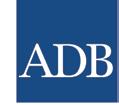
By Arup Kumar Chatterjee Principal Financial Sector Specialist at the Asian Development Bank
Recent innovations in digital banking, parametric insurance, and inclusive pension systems provide tools to boost resilience, narrow inequality, and support long-term, sustainable growth.
Asia and the Pacific, the world’s fastest growing powerhouse, contributed 60% to global growth in 2024 through economic progress and technological innovations. Yet belying its rapid ascent, there are urgent challenges which must be addressed to sustain this prosperity.
Volatile economic and financial cycles, coupled with a shift toward a multipolar global economy, are reshaping trade and investment. Disasters triggered by natural hazards, and extreme weather, threaten critical infrastructure, disrupting transport, logistics, and agriculture.
Only about 15% of assets carry adequate disasterrisk coverage, while crop yield losses can reach up to 8% of GDP due to rising temperatures, sea level increases and heat stress affecting labor productivity.
With 40% of the population lacking all-weather roads, the potential for severe economic impacts is immense. Inadequate infrastructure raises costs, fuels shortages, triggers inflation, and reduces agricultural output.
Nearly 50% of global carbon dioxide emissions originate from this region, exacerbating economic and environmental challenges. Potential GDP losses of 26% or more by 2048 underscore the urgent need for governments, businesses, and households to build resilience.
Demographic shifts add to these pressures. Sixty percent of the world’s older population lives in Asia, where many lack access to healthcare, reliable retirement income, and social security— problems worsened by a large informal sector workforce.
Widening income inequalities compound this strain, with the wealthiest 10% controlling more than half of total income. The divide between men and women in wages and workforce participation adds further hurdles.
Enhancing resilience—the capacity to anticipate, endure, and recover from shocks—is essential. The private sector is pivotal in introducing new technologies and practices that bolster preparedness and response.
Financial innovations supply capital and risk management tools, while social security systems can protect vulnerable populations, narrow inequalities, and promote stable jobs. Leveraging these efforts—particularly those led by the private sector—will strengthen the “resilience dividend” and stabilise future growth.
Enhancing resilience is crucial for sustaining growth and countering economic volatility, disasters, and demographic pressures
Recent financial innovations in banking, insurance, and pensions illustrate these possibilities. A cloud-based core banking system and infrastructure ready for artificial intelligence enable swift adaptation to market shifts. It helps maintain operations during disruptions and ensures business continuity.
Open banking is another driver of resilience. In Thailand, the TMRW digital platform from United Overseas Bank offers real-time data and artificial intelligence-driven insights for small and medium enterprises. By streamlining financial processes and enabling quicker decisions, businesses can adjust to market changes and access capital more readily. This fosters growth while saving time and reducing manual tasks.
In India, parametric insurance pays out upon predefined triggers rather than assessed damage. It has been applied to natural hazards, heat stress, renewable energy projects, and agriculture. The state government of Nagaland launched the Disaster Risk Transfer Parametric Insurance Solution to protect critical infrastructure from disasters, including floods and landslides. Swift payouts help restore essential services.
Pradhan Mantri Fasal Bima Yojana, India’s national crop insurance scheme, offers immediate compensation to farmers affected by events like droughts and pest outbreaks. By using satellite data and advanced analytics, the program refines risk assessment and pricing. Linking digital identity and bank accounts has increased accountability and transparency, ensuring reliable compensation.
Women working in the informal sector have also benefited from parametric insurance innovations. The Self-Employed Women’s Association
introduced a plan for extreme heat, paying out automatically so women laborers need not sacrifice their health or income. The initiative also provides tools like solar lamps and water coolers to reduce heat exposure.
In Delhi, a scheme tied to the Air Quality Index compensates construction workers if pollution surpasses critical levels. In the renewable energy sector, parametric insurance mitigates weatherrelated risks to energy output, safeguarding investments.
Energy savings and energy efficiency insurance further promote resilience by covering projects that reduce energy consumption. It ensures the economic performance of such initiatives, reimbursing purchasers if energy savings targets are missed.
Deployed in several countries, it reassures investors and encourages small and medium enterprises to invest in conservation. Another covers material damage, equipment breakdown, business interruption, and shortfalls in projected energy savings, benefiting energy services companies.
Strengthening pension coverage, particularly for self-employed and informal workers, is another pillar of a more inclusive system. Pension structures must adapt to shifting demographics and broader economic changes, including the rise of gig work. Digital platforms and mobile applications can expand access to information, helping individuals manage retirement savings more easily.
Notable examples from this region include China Life’s integrated pension finance, which blends commercial pension, health, and accident insurance to accumulate reserves for older-age care, and Guomin Pension and Insurance’s digital platform that assesses users’ financial health before suggesting products.
Japan’s individual-type defined contribution pension plan (iDeCo) allows self-employed individuals to make tax-advantaged contributions. These innovations address the needs of an aging population and a diverse workforce.

While the region surges ahead, there is no room for complacency. Enhancing resilience is crucial for sustaining growth and countering economic volatility, disasters, and demographic pressures. Digital banking platforms, parametric insurance, and energy efficiency insurance provide valuable tools, but they must be part of a broader strategy to foster inclusive, durable development.
Key measures include embracing innovation and new financial solutions, supported by regulations that encourage technological progress while protecting vulnerable communities. Governments and the private sector should incentivise resilient investments, promote financial literacy to empower citizens, and ensure consumer protections against shocks and abuses. Collaboration among governments, businesses, and civil society is essential to build a supportive environment where these measures can flourish.
By making resilience a priority and harnessing recent innovations, Asia and the Pacific can safeguard future growth, nurture equitable opportunities, and forge a future in which communities, economies, and ecosystems are more secure and prepared for the challenges ahead. i
The views expressed are those of the author and do not necessarily reflect the views of the Asian DevelopmentBank,itsmanagement,itsBoardof Directors,oritsmembers.
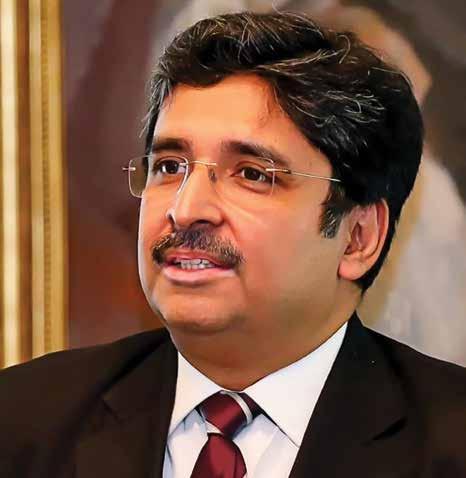
Author: Arup Kumar Chatterjee
Joschka Fischer:
Reality Is Forging a New Europe

We are witnessing the chaotic emergence of a new world order, and the process is being driven by three leaders who are openly hostile to the European Union: US President Donald Trump, Russian President Vladimir Putin, and Chinese President Xi Jinping. This new order will have little in common with the American-led one that prevailed in the latter half of the twentieth century and into the first two decades of the twenty-first. While the key national players remain the same, their roles have changed, as have their respective political and economic weights.
Instead of the rules-based international order that the United States forged after World War II, we will see a power-based order shaped exclusively by geopolitics. Instead of global free trade, we will see zero-sum rivalries between large economic blocs, implying a trend toward autarky. And instead of an analog world, we will see an increasingly digital one where breakthroughs in AI become decisive factors in economic life, possibly even determining political control.
This transformation is undoubtedly the dominant global macro trend of our time. It will not only affect Europe, but will likely determine whether Europe survives in any recognisable form. After all, “Europe” is more than a geographical designation. It is a political reality; a continental confederation-like grouping of closely intertwined states, anchored not by military might but through shared ideas and values.
Like the US-led international order that is now disappearing, the EU took shape in the immediate postwar period in Western Europe. Postwar Europe was extremely successful as an economic-unification project among formerly hostile states. It thrived under the military and political security provided by the US defense umbrella and the postwar system of global trade, which America helped expand and sustain.
But as the decline of the US order became more visible in recent years, the EU experienced severe political crises. The year 2016 offered a double blow, with the United Kingdom voting to leave the Union, and Americans electing Trump for the first time. Looking back, we now know that these developments changed everything.
Owing to China’s rise and the 2008 financial crisis, the stage had already been set for global
"Instead of the rules-based international order that the United States forged after World War II, we will see a power-based order shaped exclusively by geopolitics. Instead of global free trade, we will see zero-sum rivalries between large economic blocs, implying a trend toward autarky."
upheaval. And though Brexit and Trump’s shocking victory were not seen as a death knell for the US-led order at the time, they unleashed destructive forces that had been lurking beneath the surface for quite some time.
The potency of these forces became apparent with Putin’s full-scale invasion of Ukraine in February 2022, followed by Trump’s re-election last year. In the event, petty disputes between the UK and the EU were soon forgotten, replaced by a new military solidarity with Ukraine and a new collective effort to achieve defense and security solidarity across Europe.
Policymakers and political leaders in London, Brussels, and the most important European capitals understood that the situation had fundamentally changed. The new, harsh reality – personified by Putin – forced all Europeans (whether inside or outside the EU) back into the same geopolitical boat. When it comes to security, Europeans have a shared interest. Norway and the UK are just as vulnerable to the effects of Russian military aggression as are Poland, Finland, Sweden, Germany, and France. European leaders and most citizens understand that if Trump were to end America’s security guarantee and withdraw US troops, Europe would need to defend its borders – and its very existence – on its own.
Threatened by Putin and pressured by Trump, Europe must find a way to develop its own independent defense capabilities. Though it should maintain the transatlantic partnership as long as possible, it cannot ignore the fact that America, under Trump, is fundamentally unreliable. There must be a Plan B. All European countries, whether inside or outside the EU, must rearm and develop plans for either of two scenarios: one with America in the picture, and one without it.
In both cases, European countries must work together as closely as possible, not only on defense, but on revitalising the European economy. This requires joint leadership from bigger players like France, the UK, Germany, Italy, and Poland, all of which have the necessary humanitarian, military, and economic resources – and now the political will. Faced with today’s realities, yesterday’s ideological differences have become almost meaningless. The central issues in European politics no longer relate to EU enlargement, integration, and national independence; they are, above all, about defending European freedom and upholding common values. i
ABOUT THE AUTHOR
Joschka Fischer, Germany’s foreign minister and vice chancellor from 1998 to 2005, was a leader of the German Green Party for almost 20 years.
"The new, harsh reality – personified by Putin – forced all Europeans (whether inside or outside the EU) back into the same geopolitical boat. When it comes to security, Europeans have a shared interest."


Direct Lending Plus+
The Alternative Credit Investor with a Northern European focus
Providing financing solutions for lower midmarket businesses, with superior returns and low structural risk
SUPPORTIVE BESPOKE SOLUTIONS

